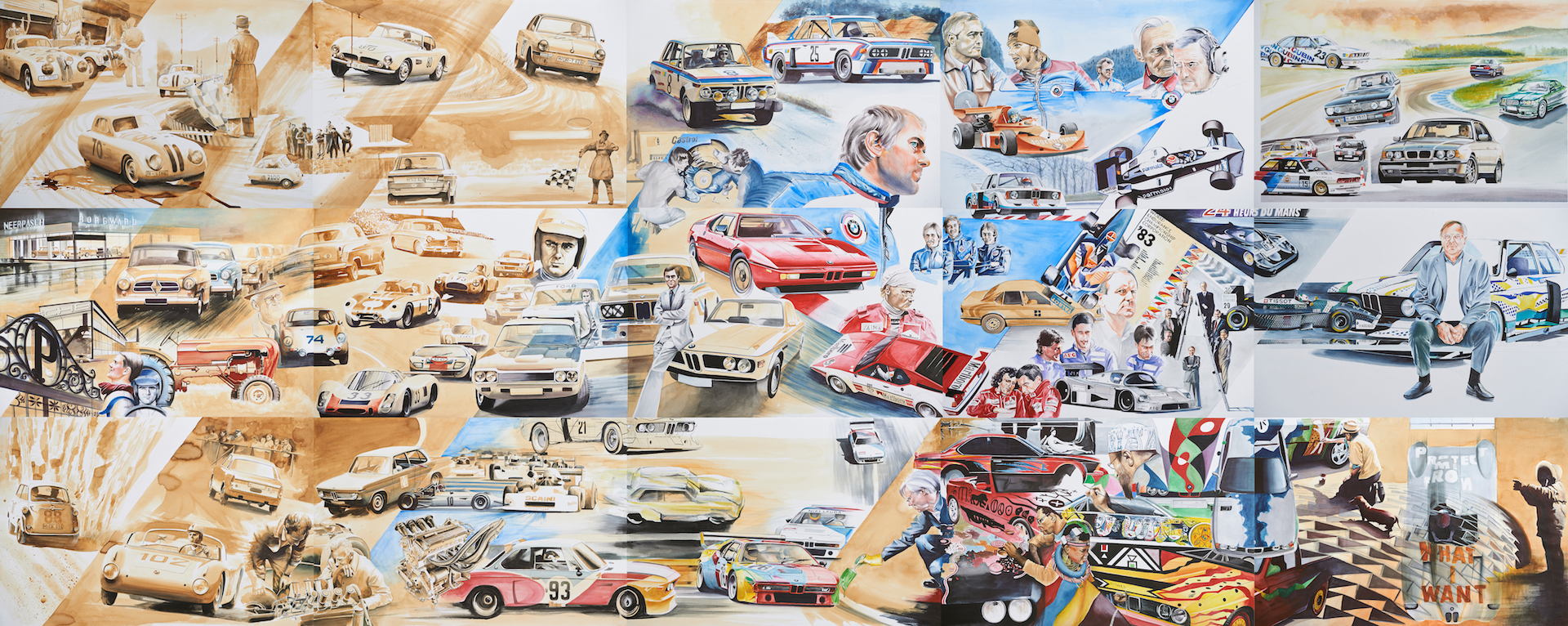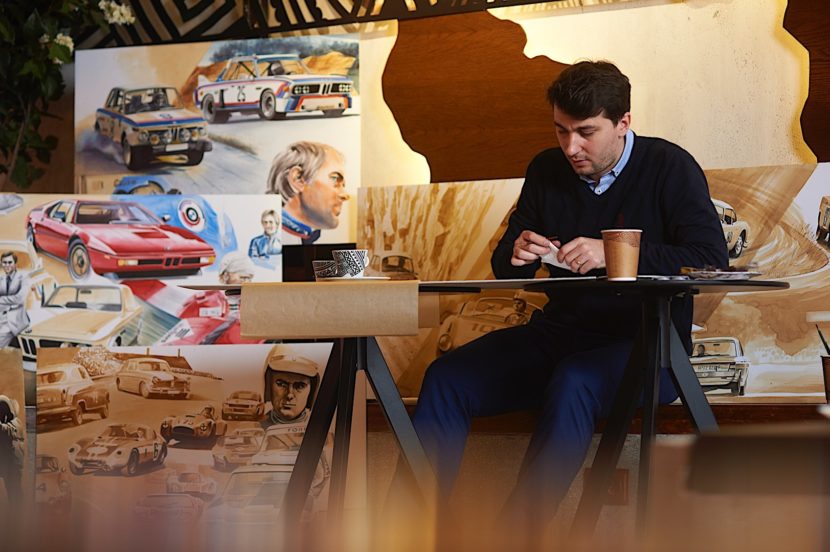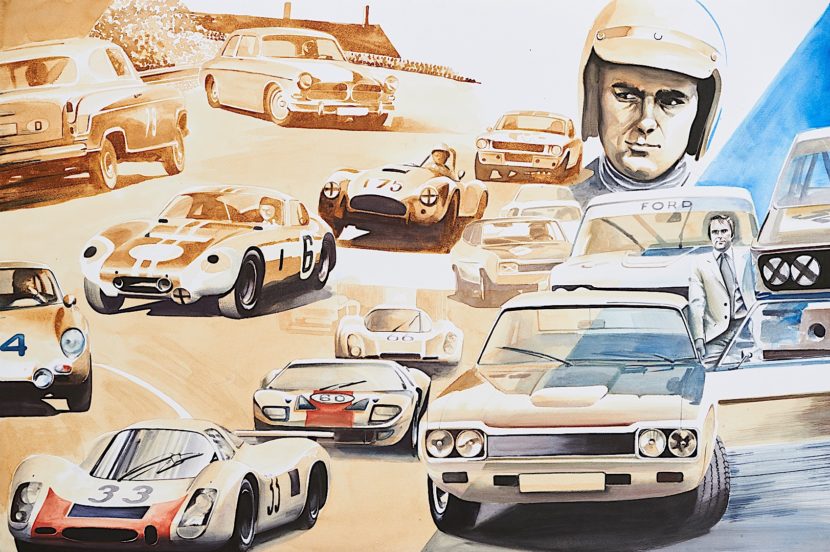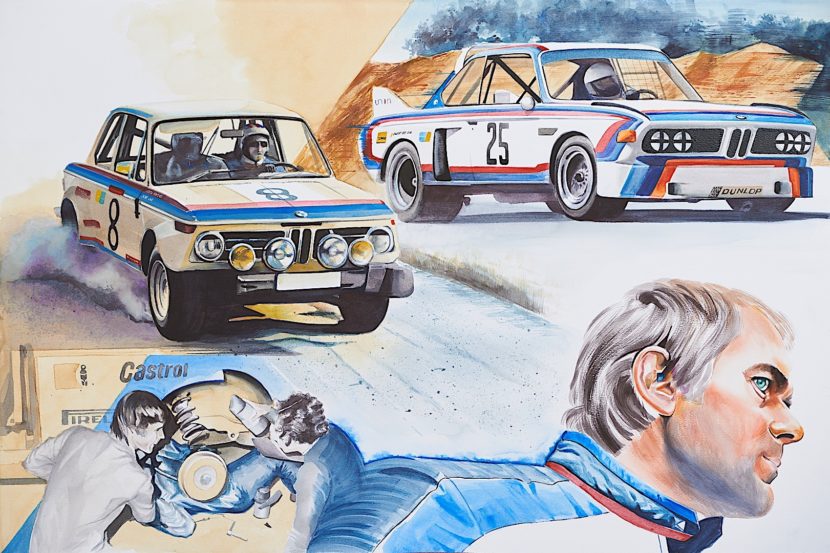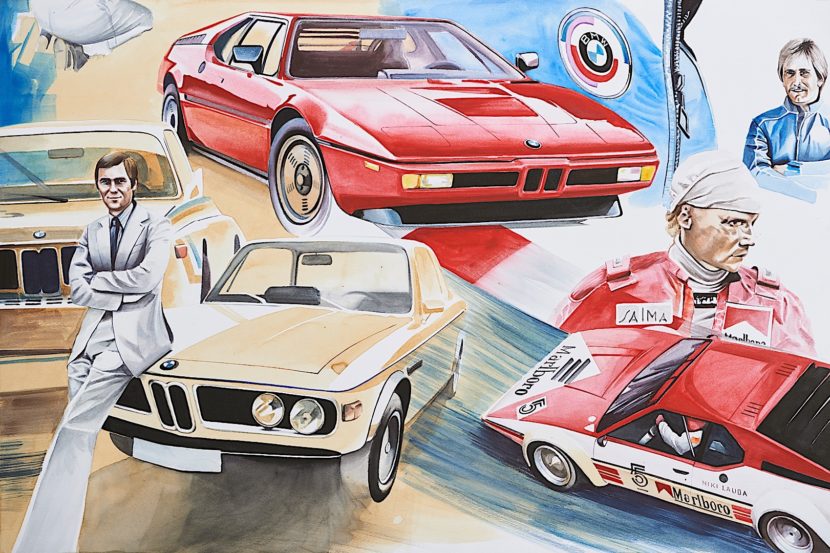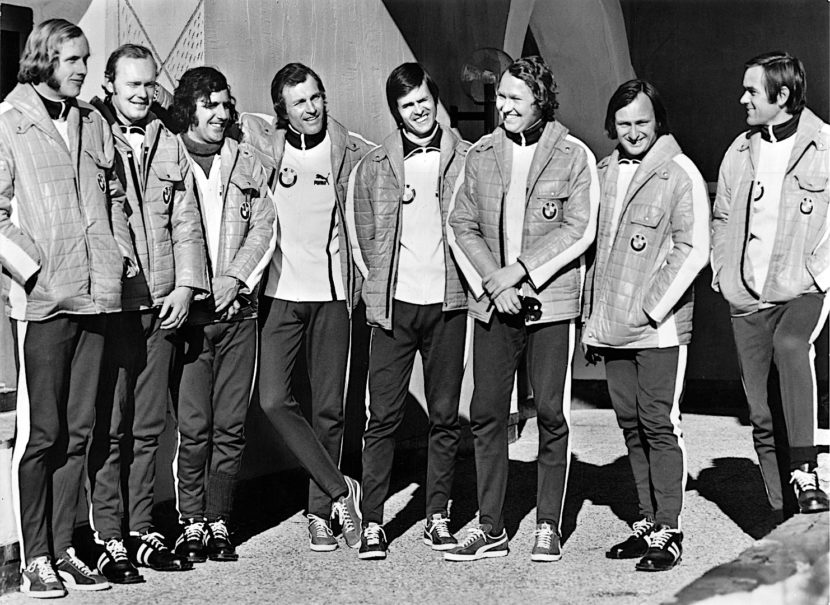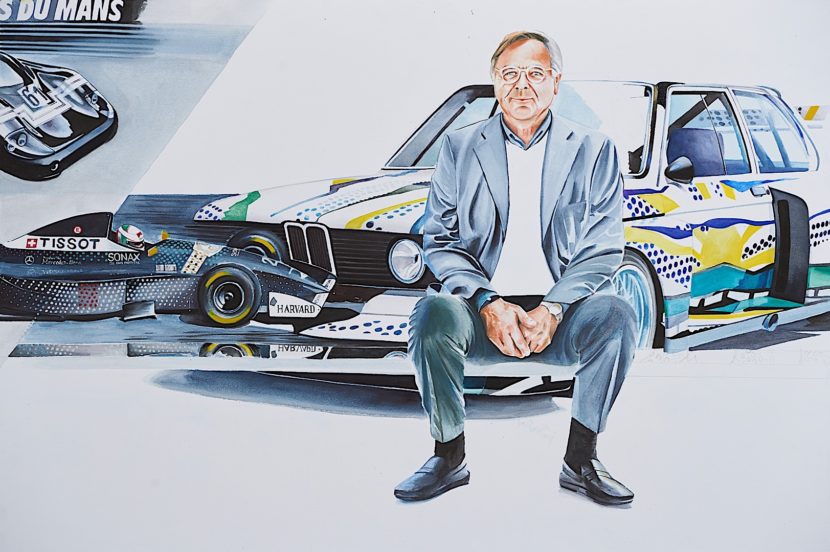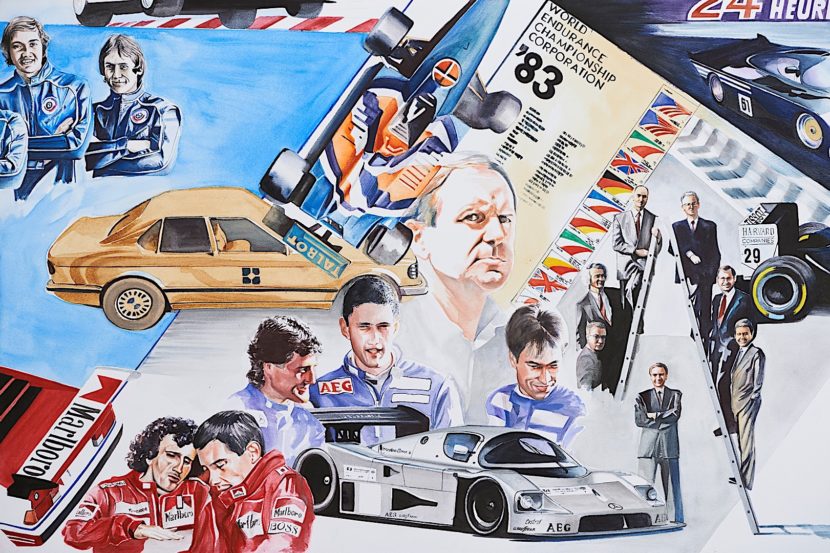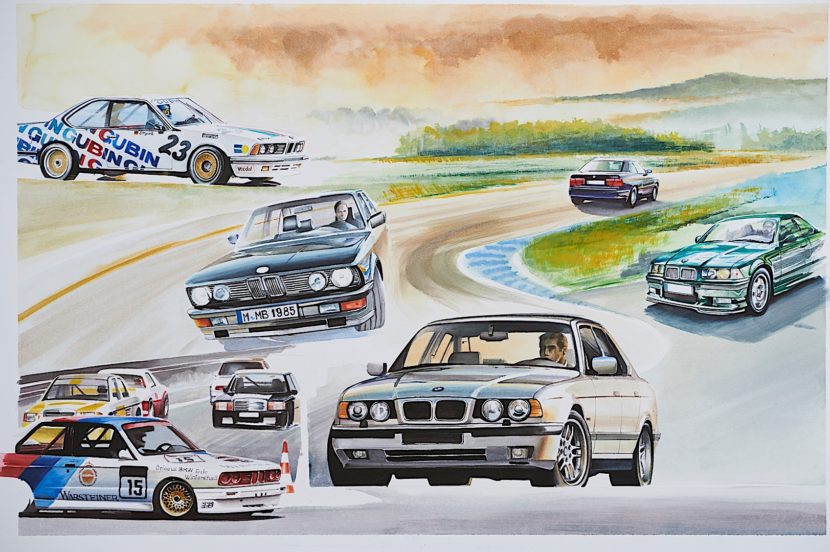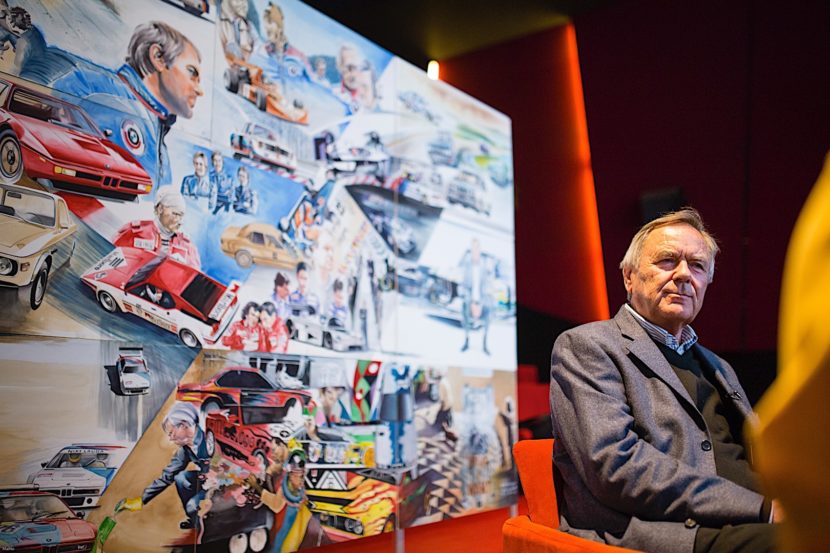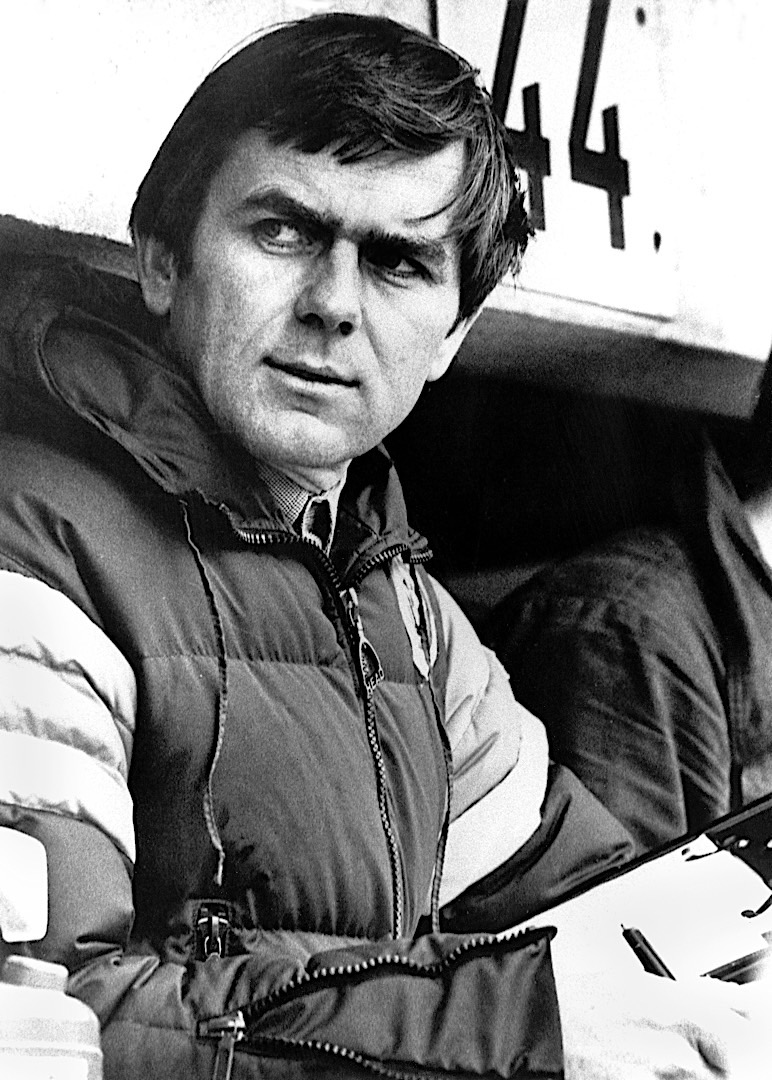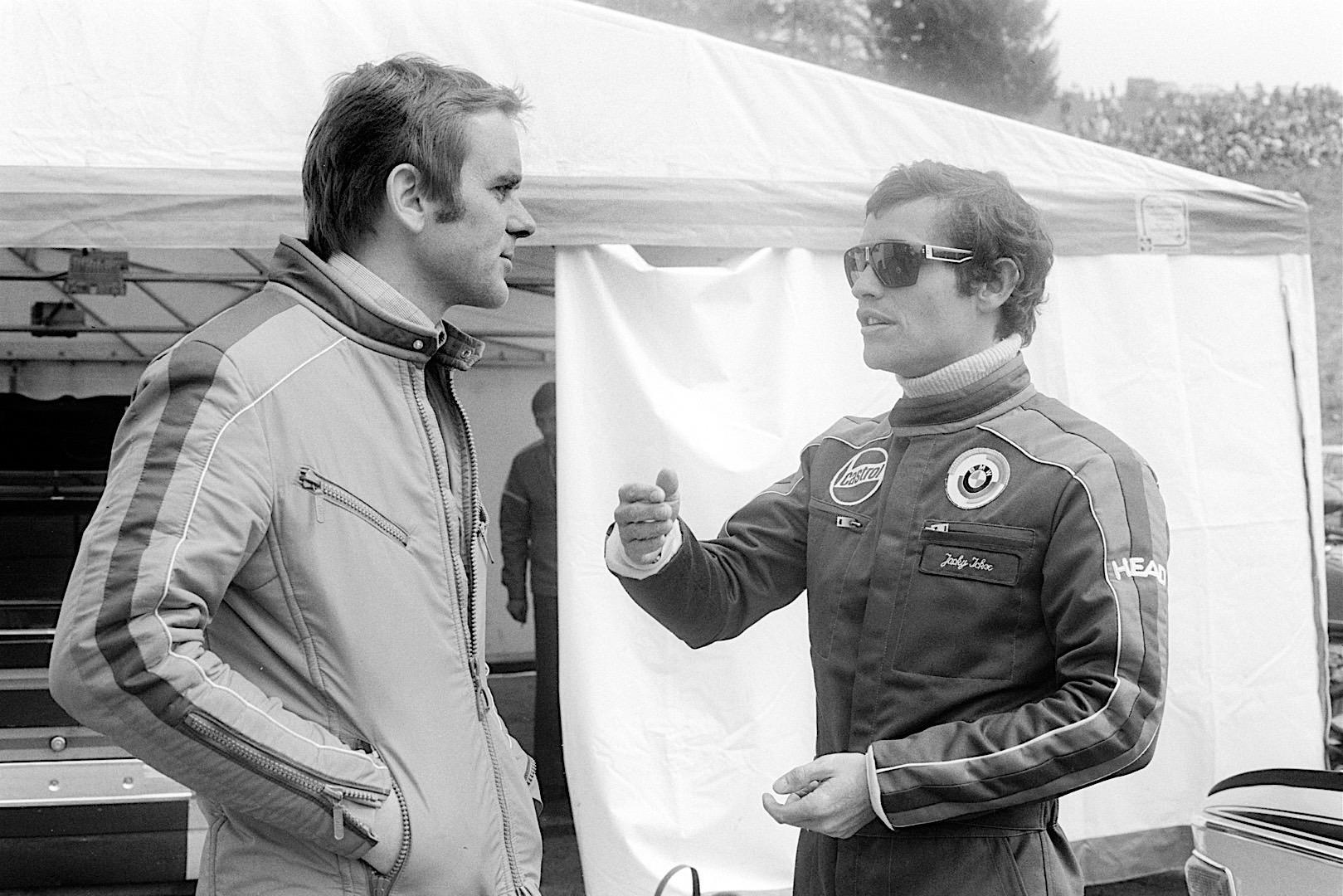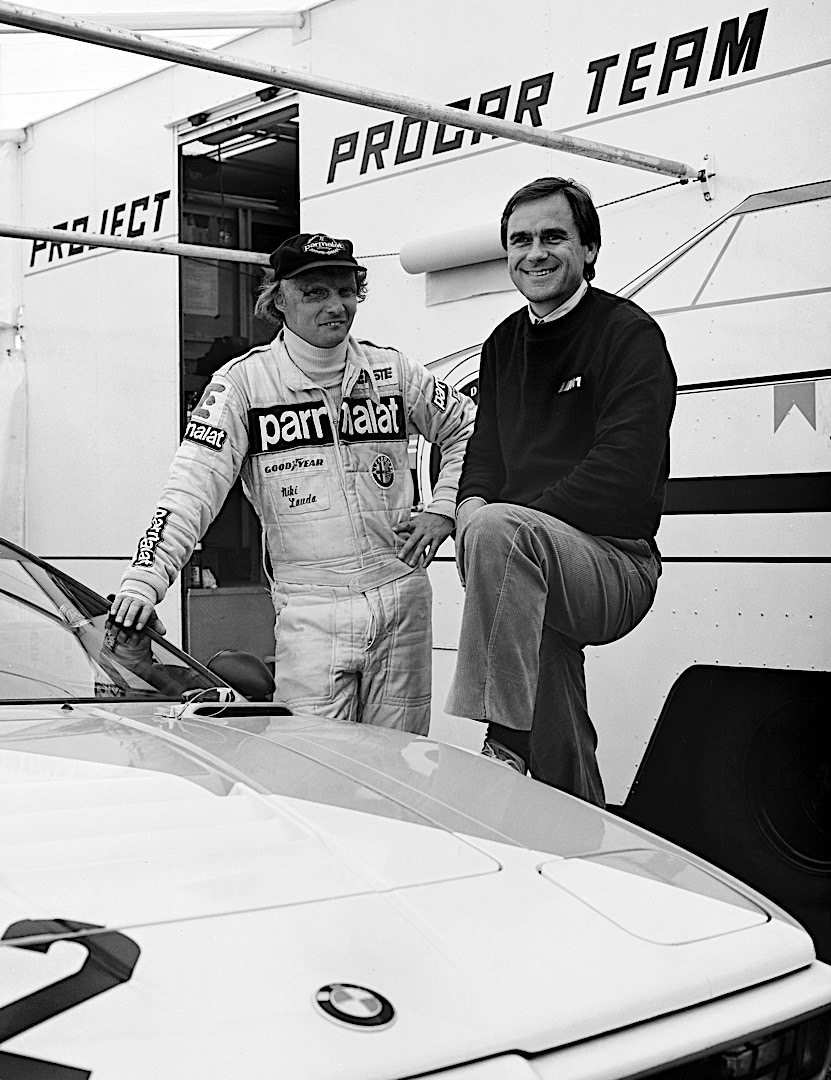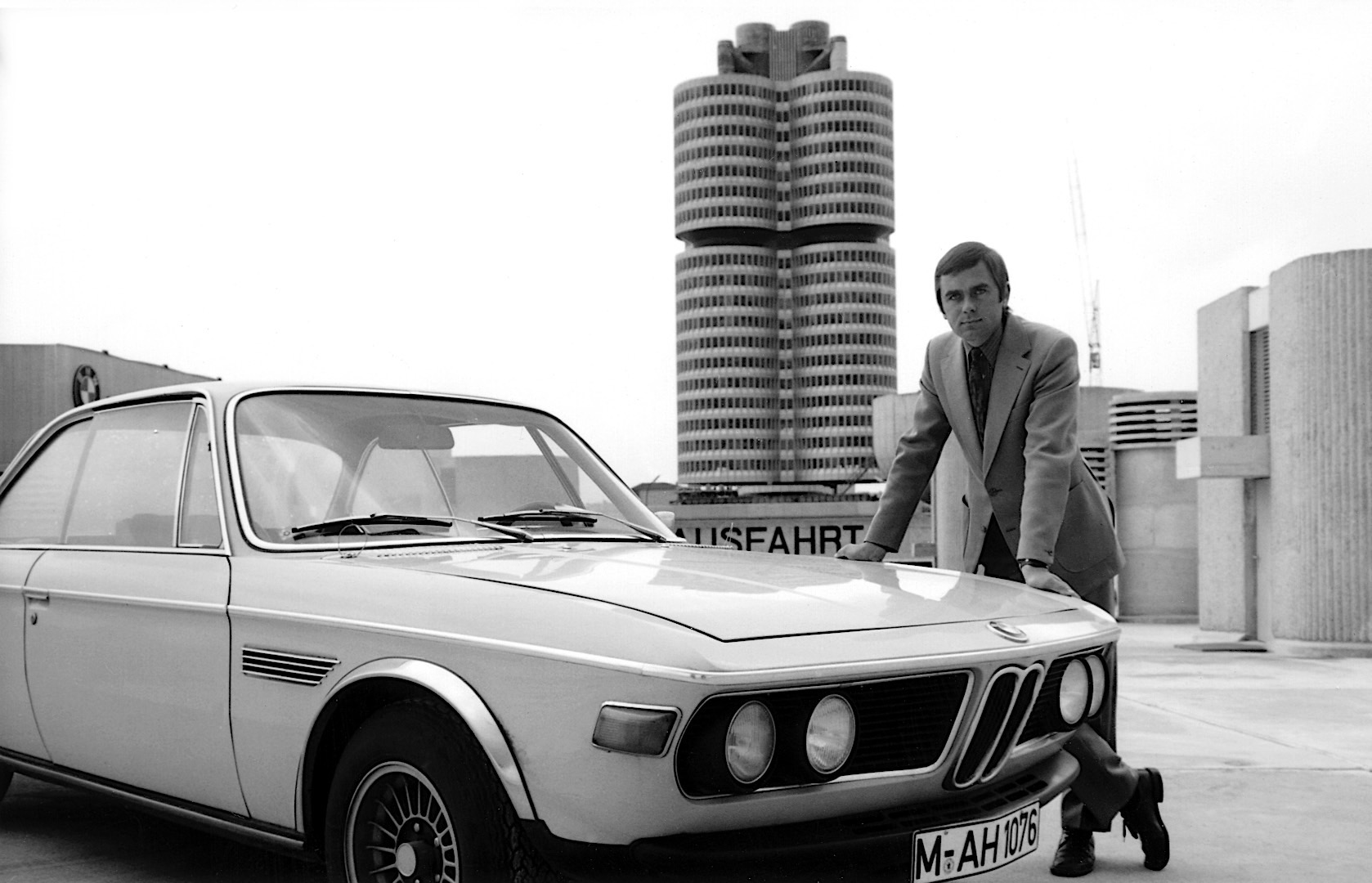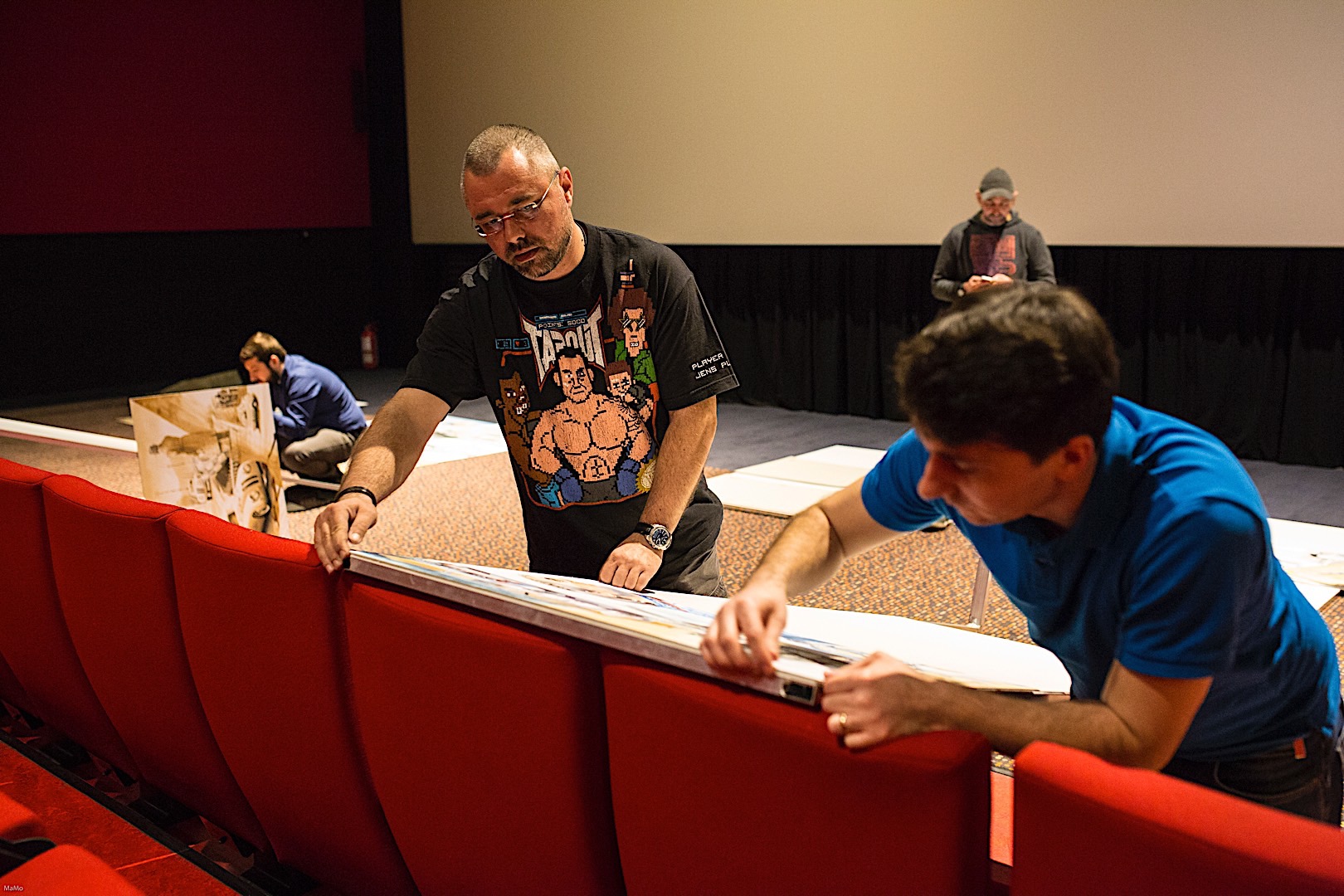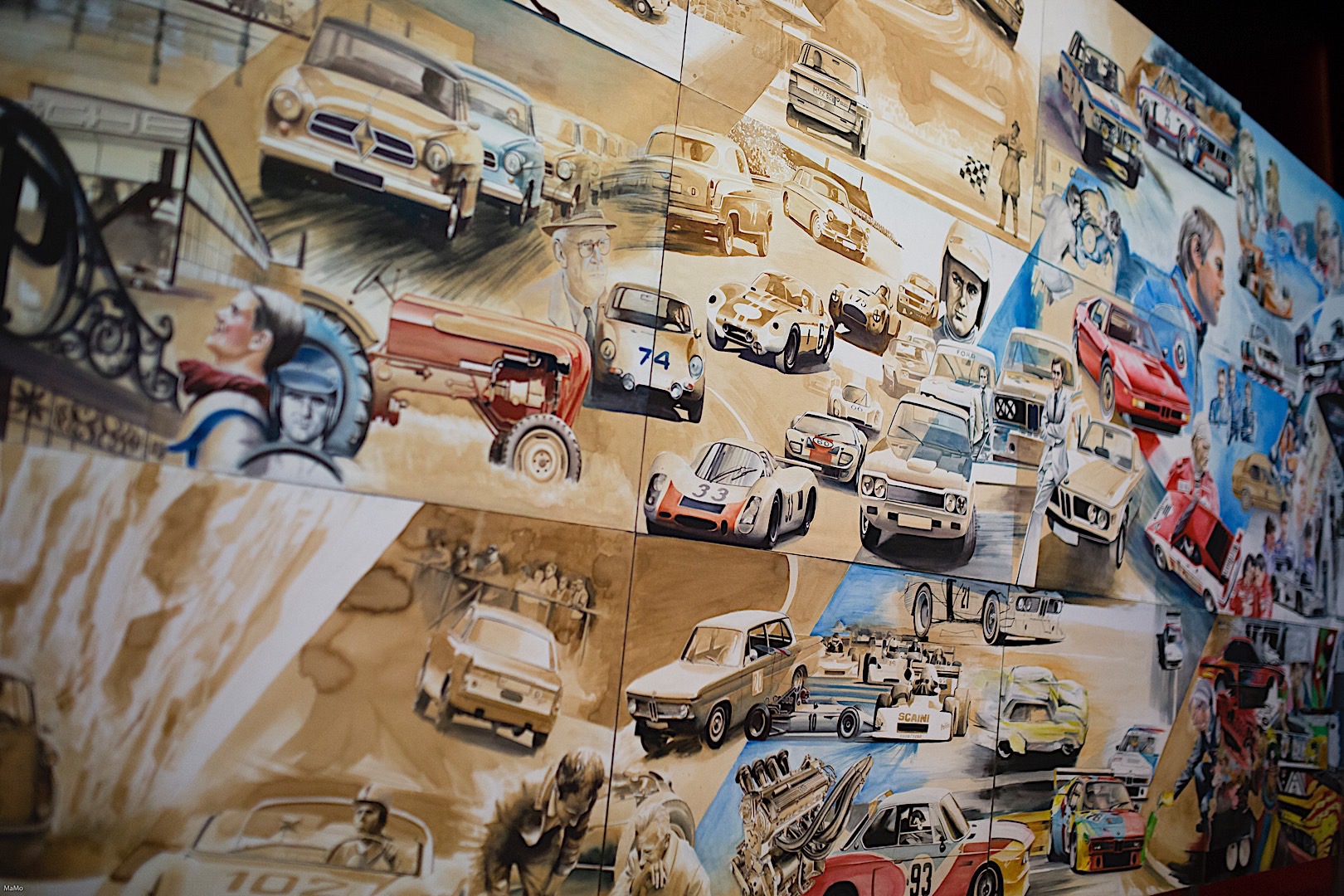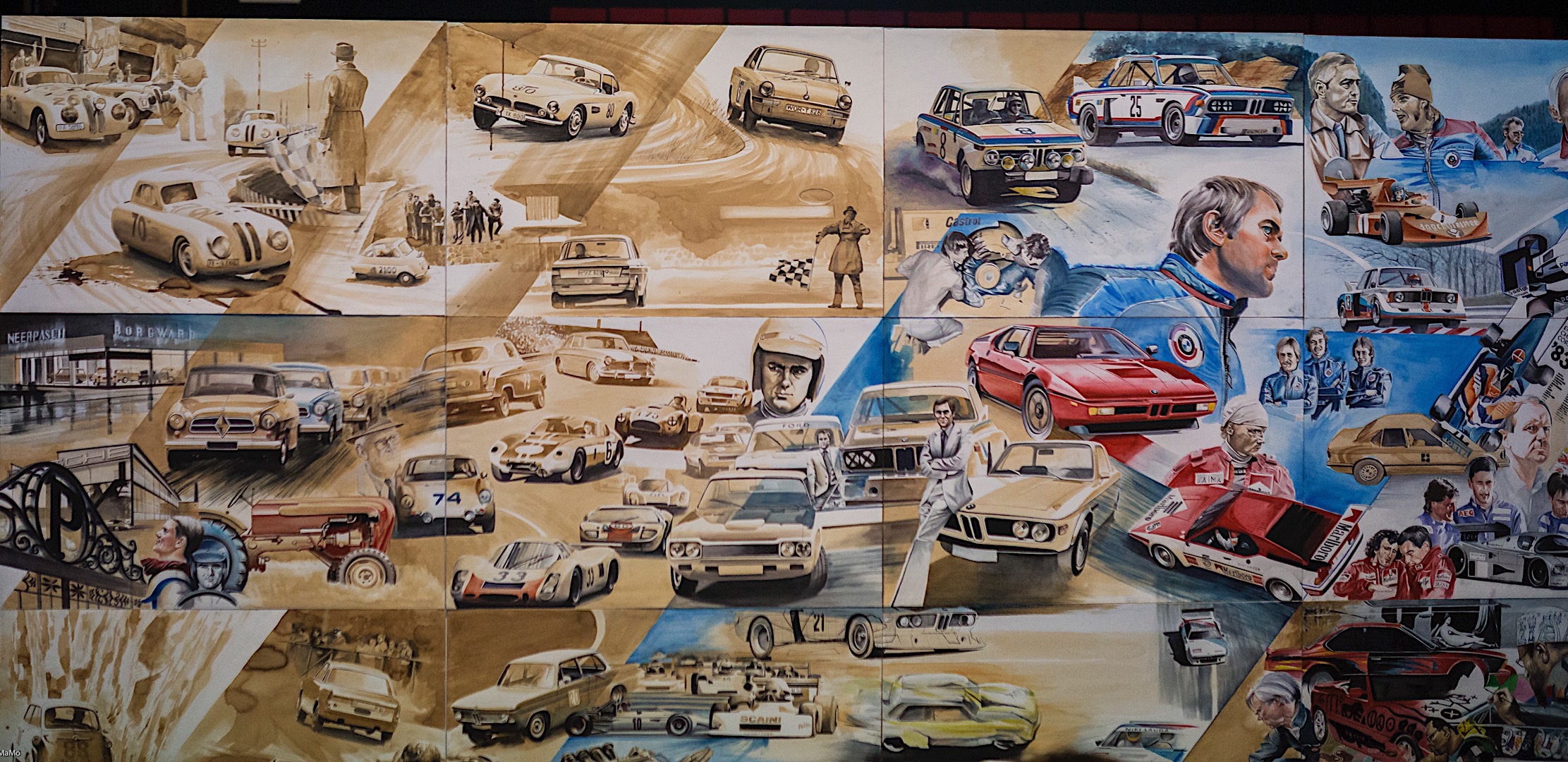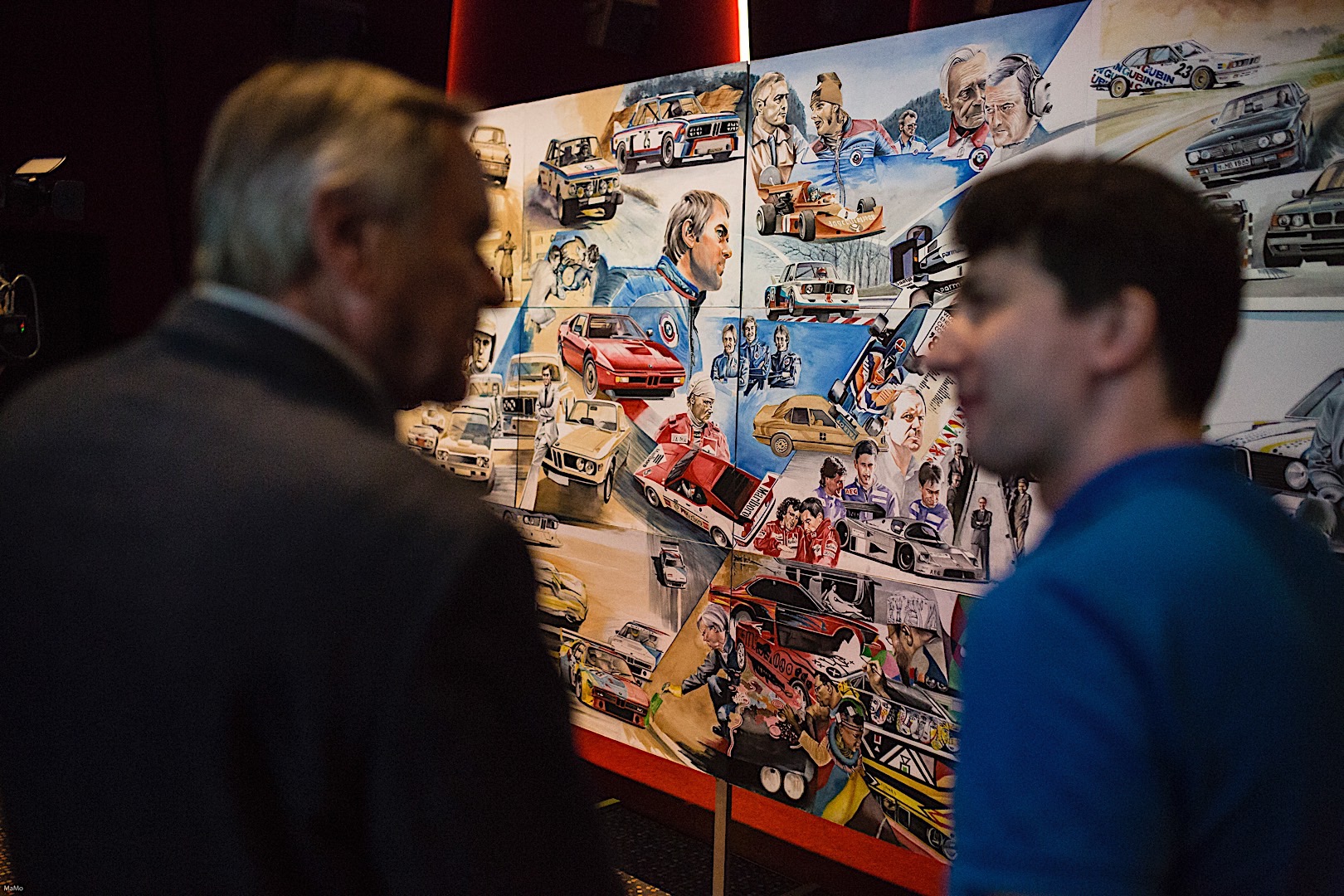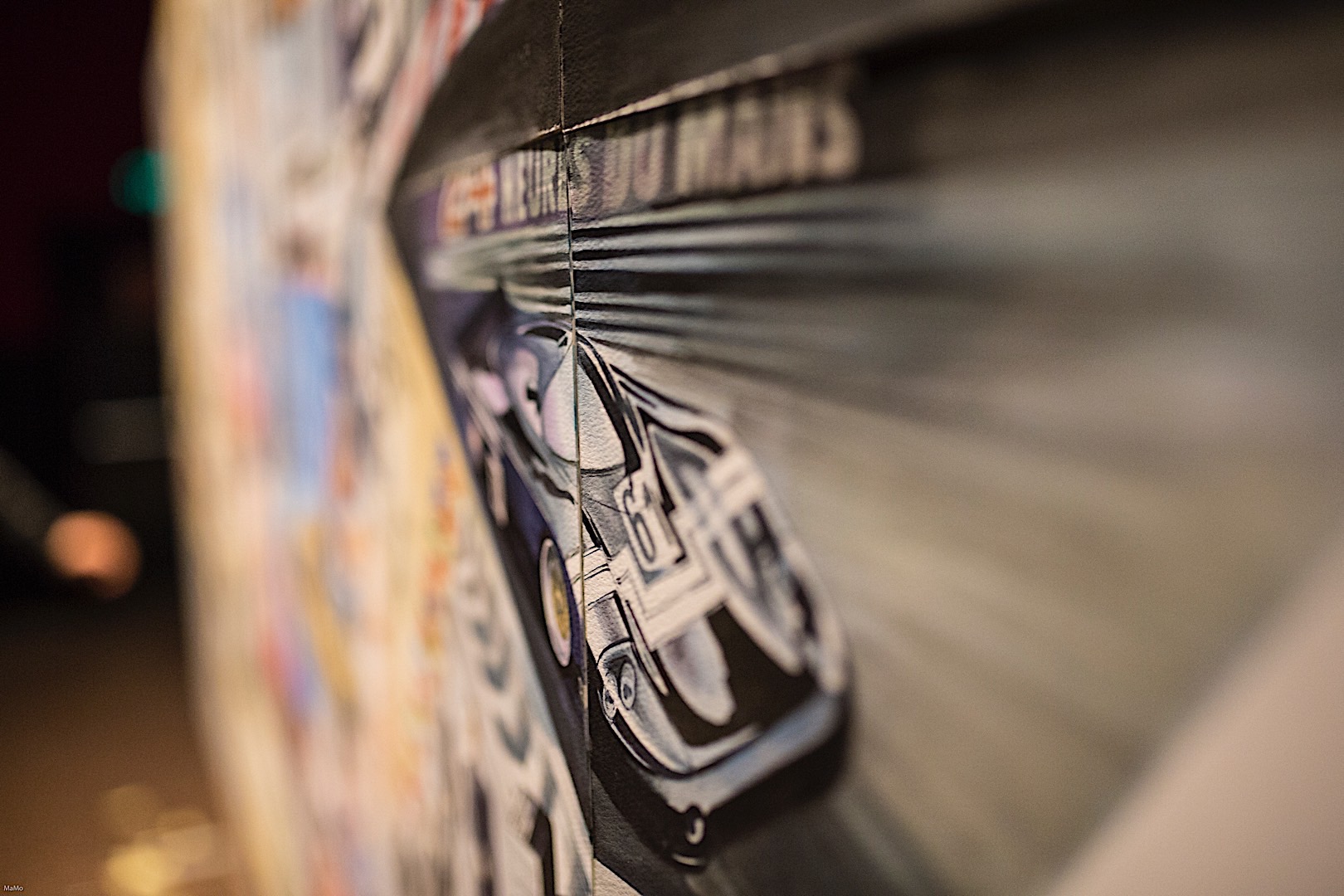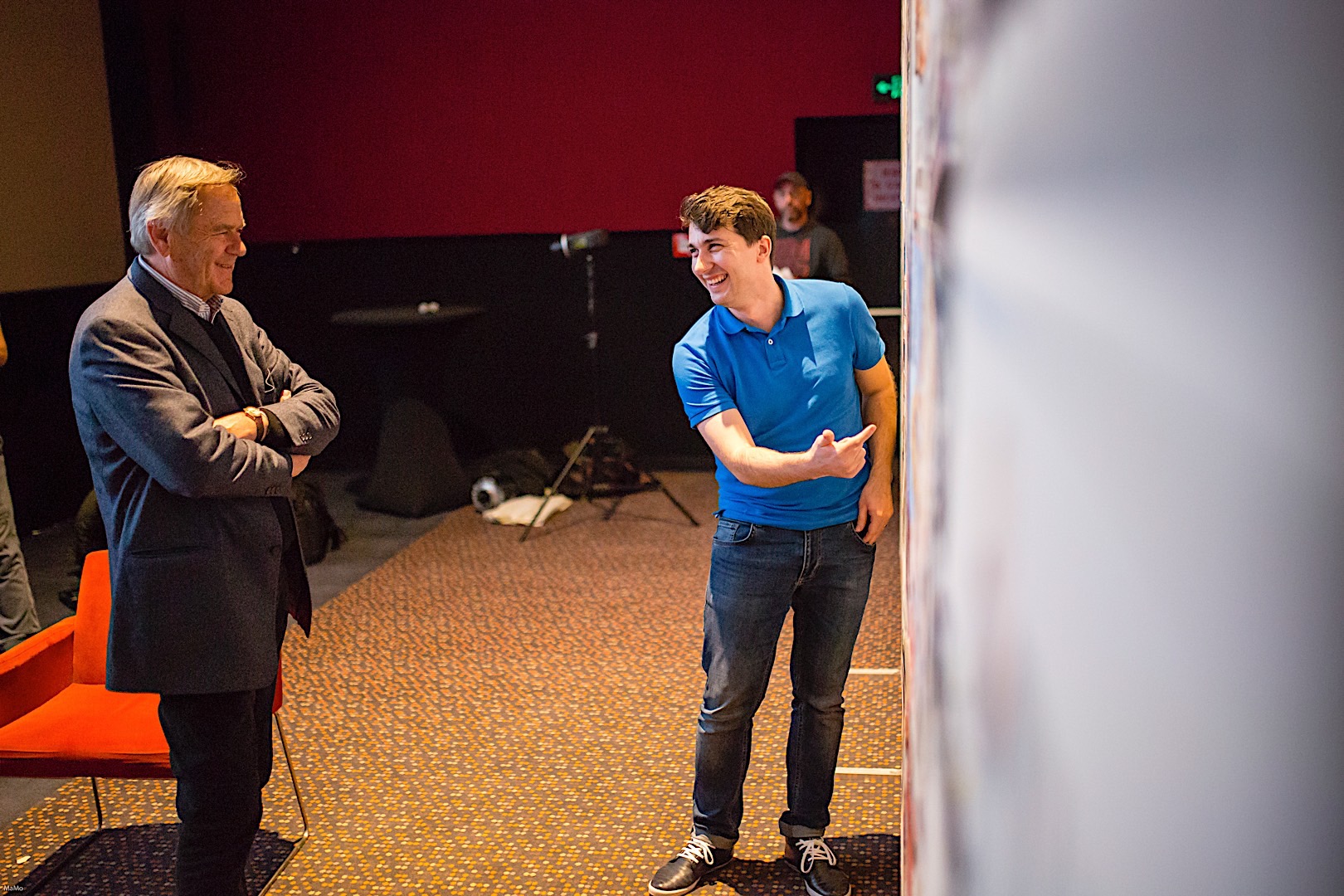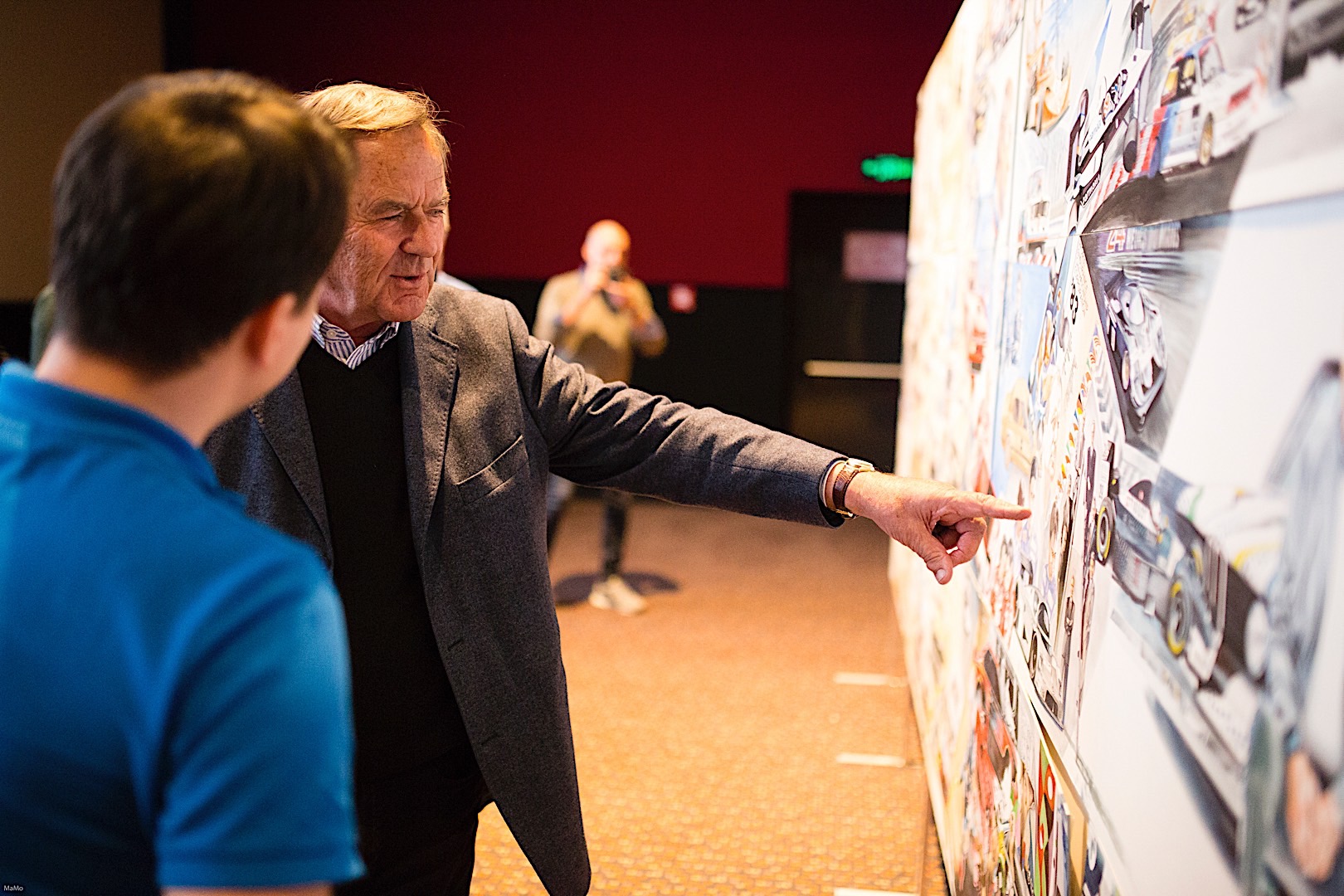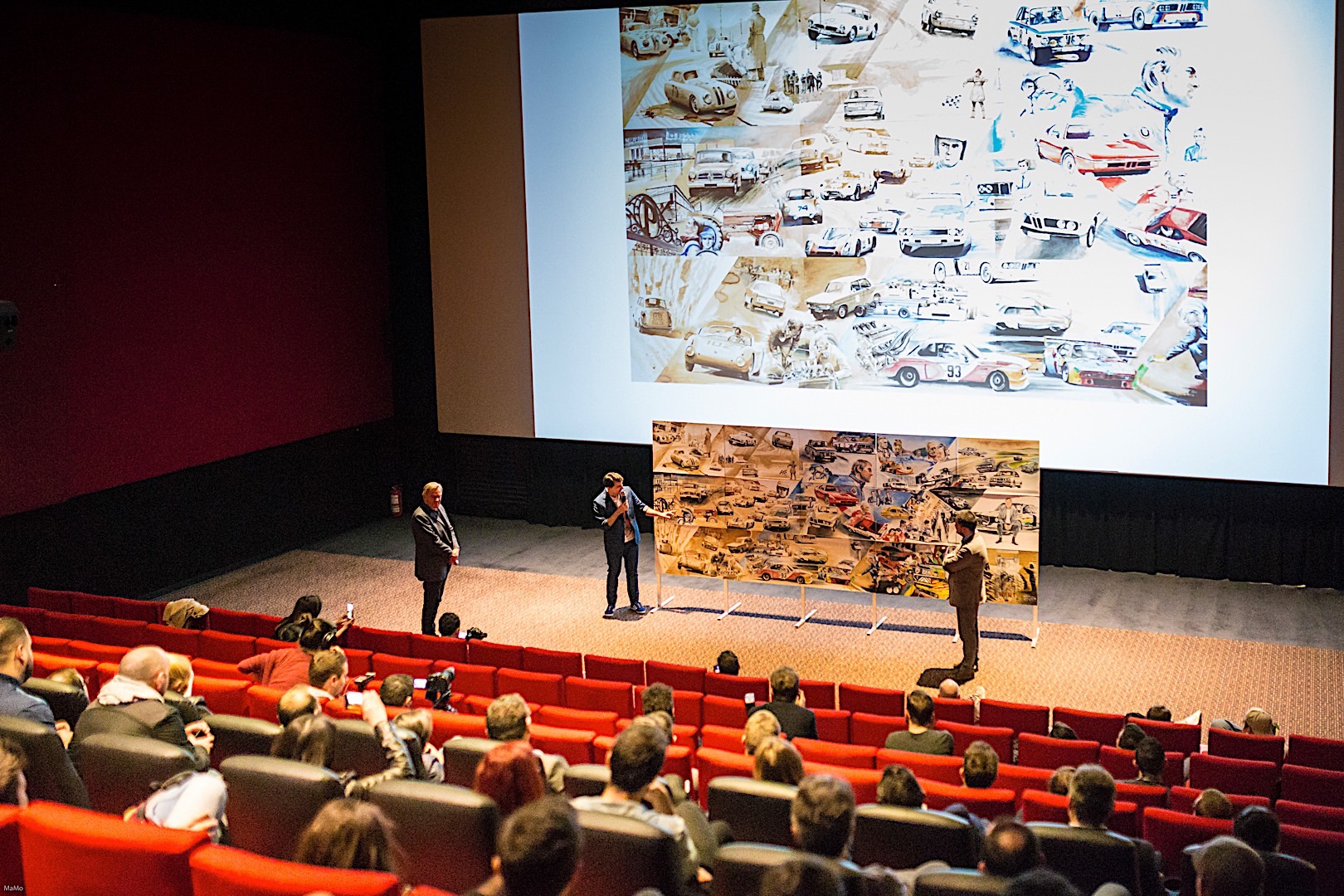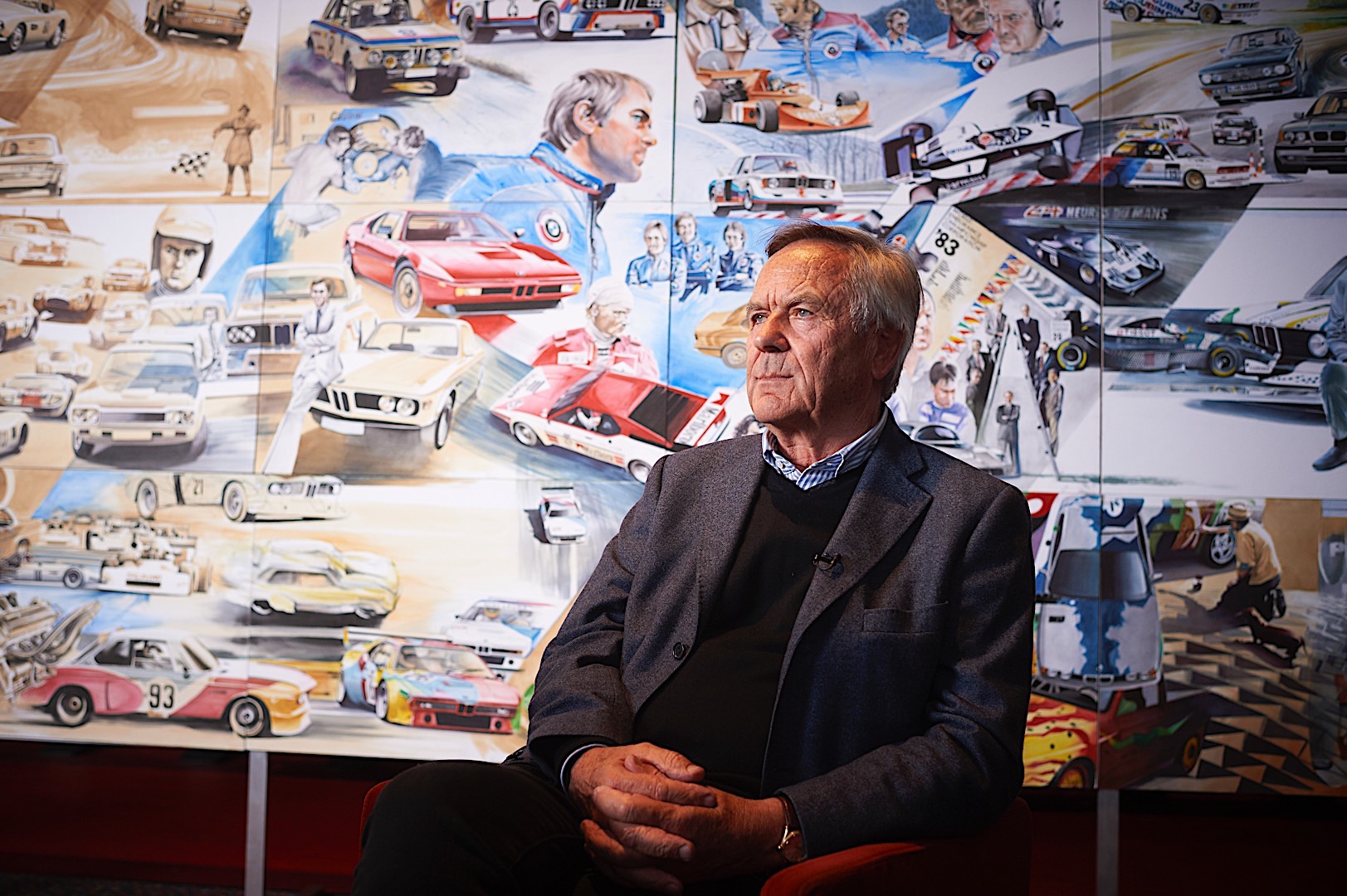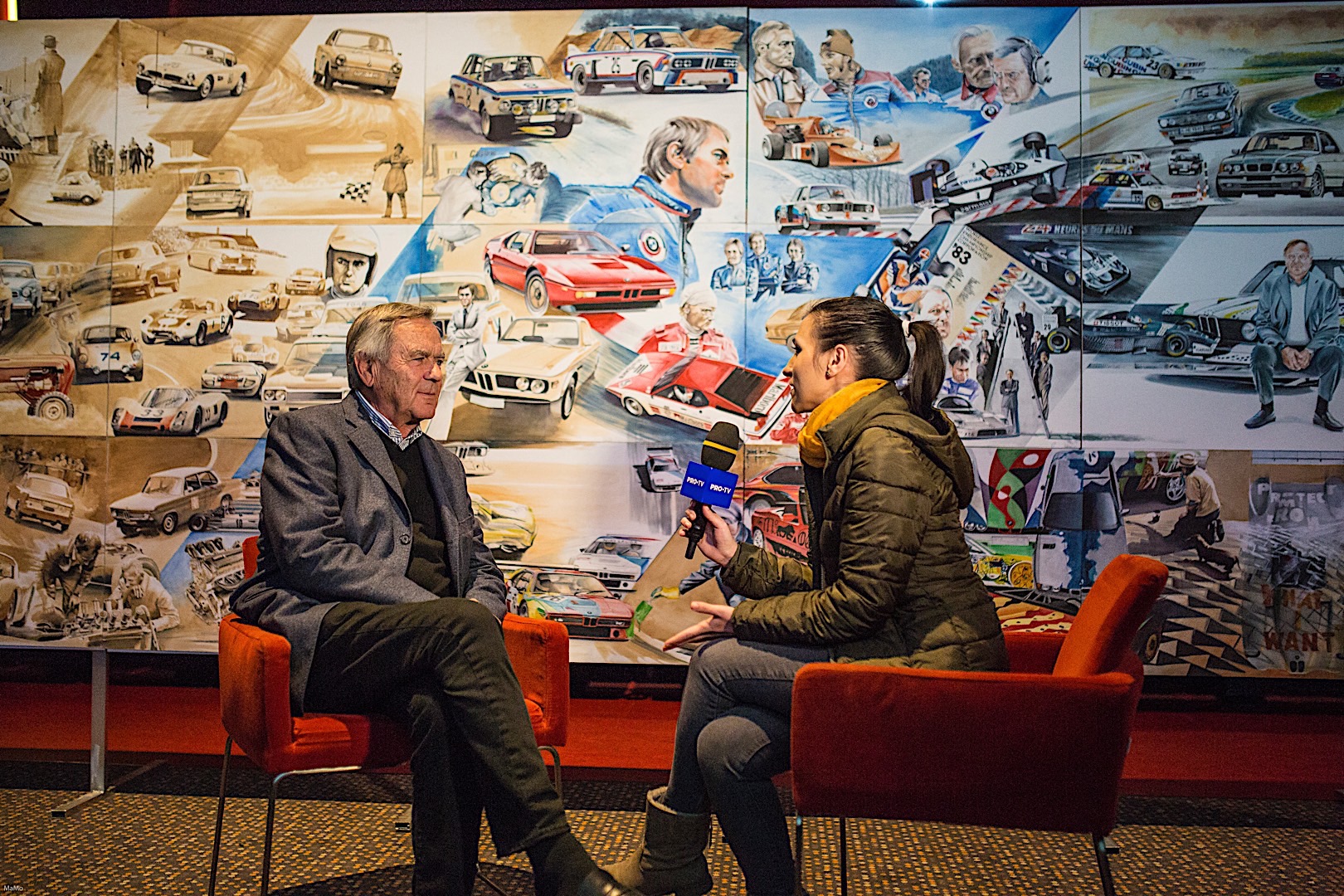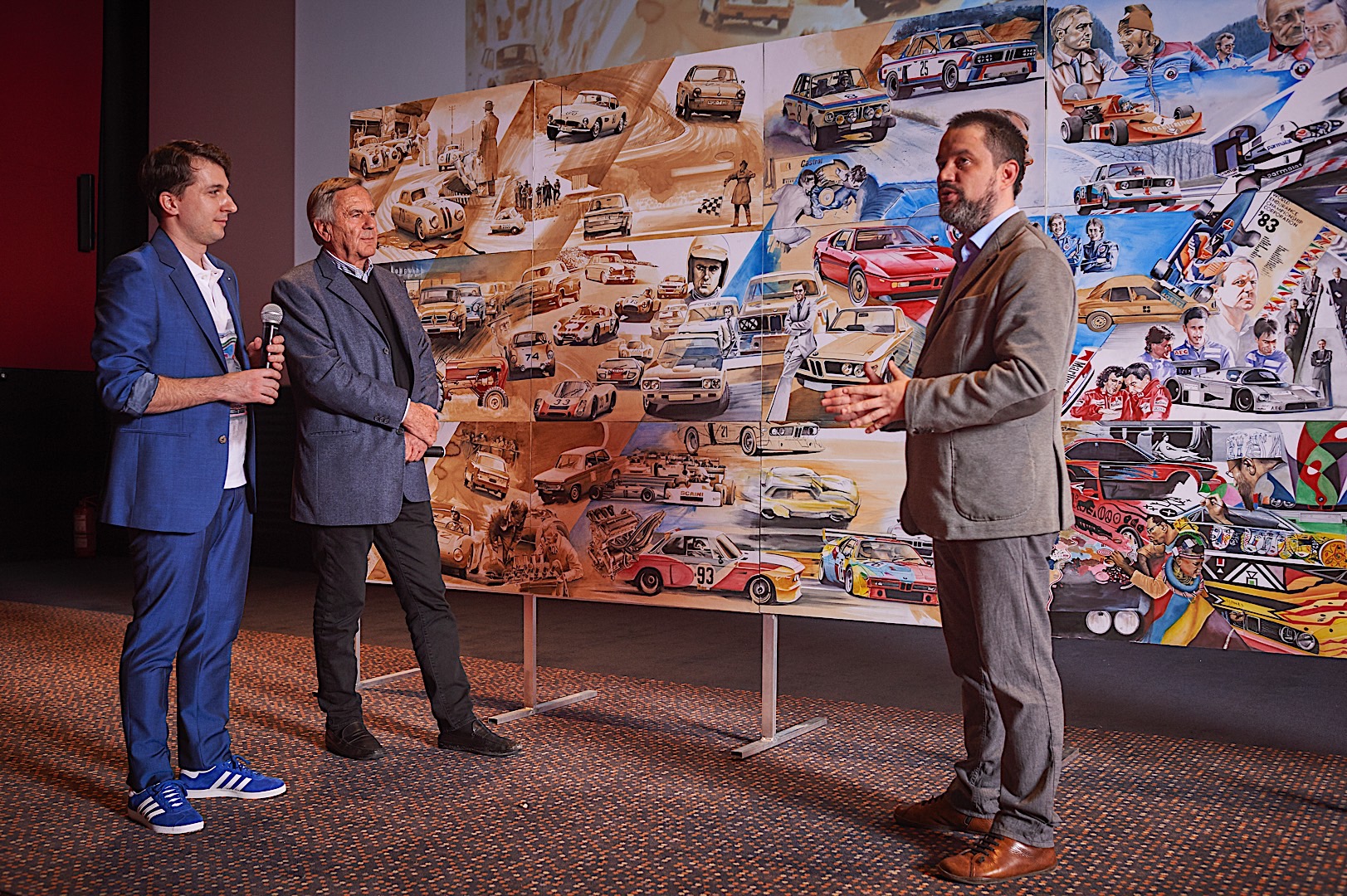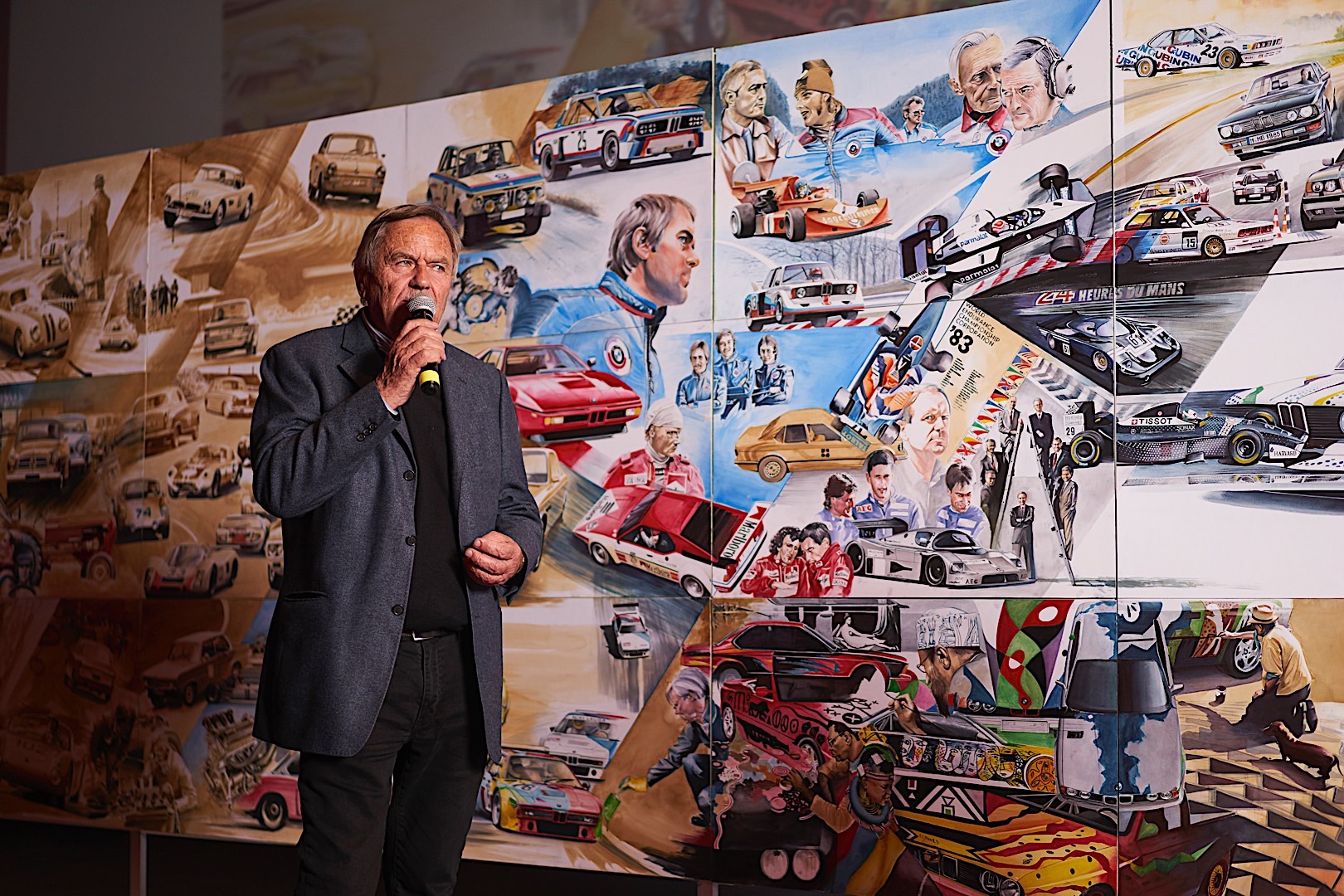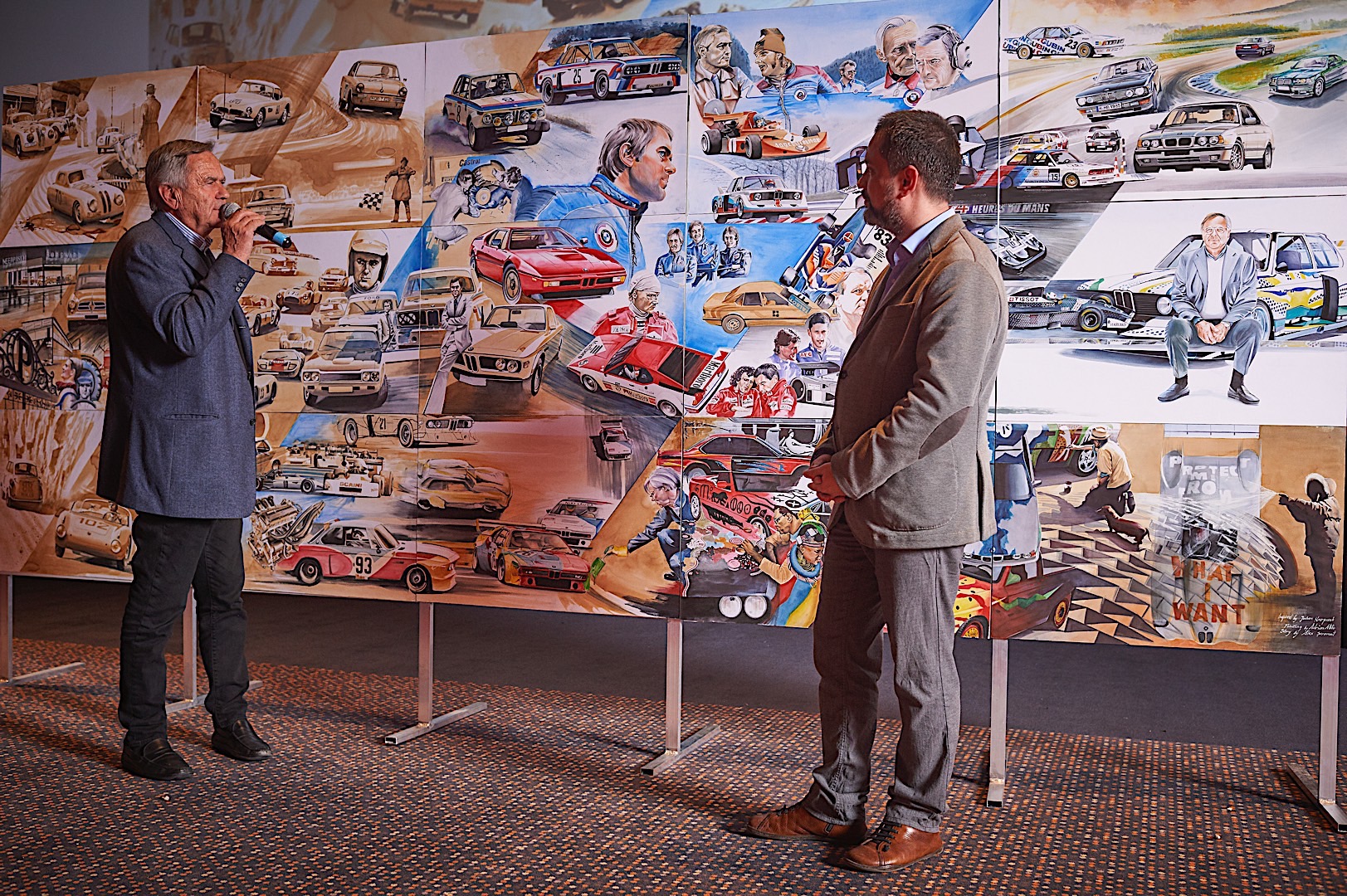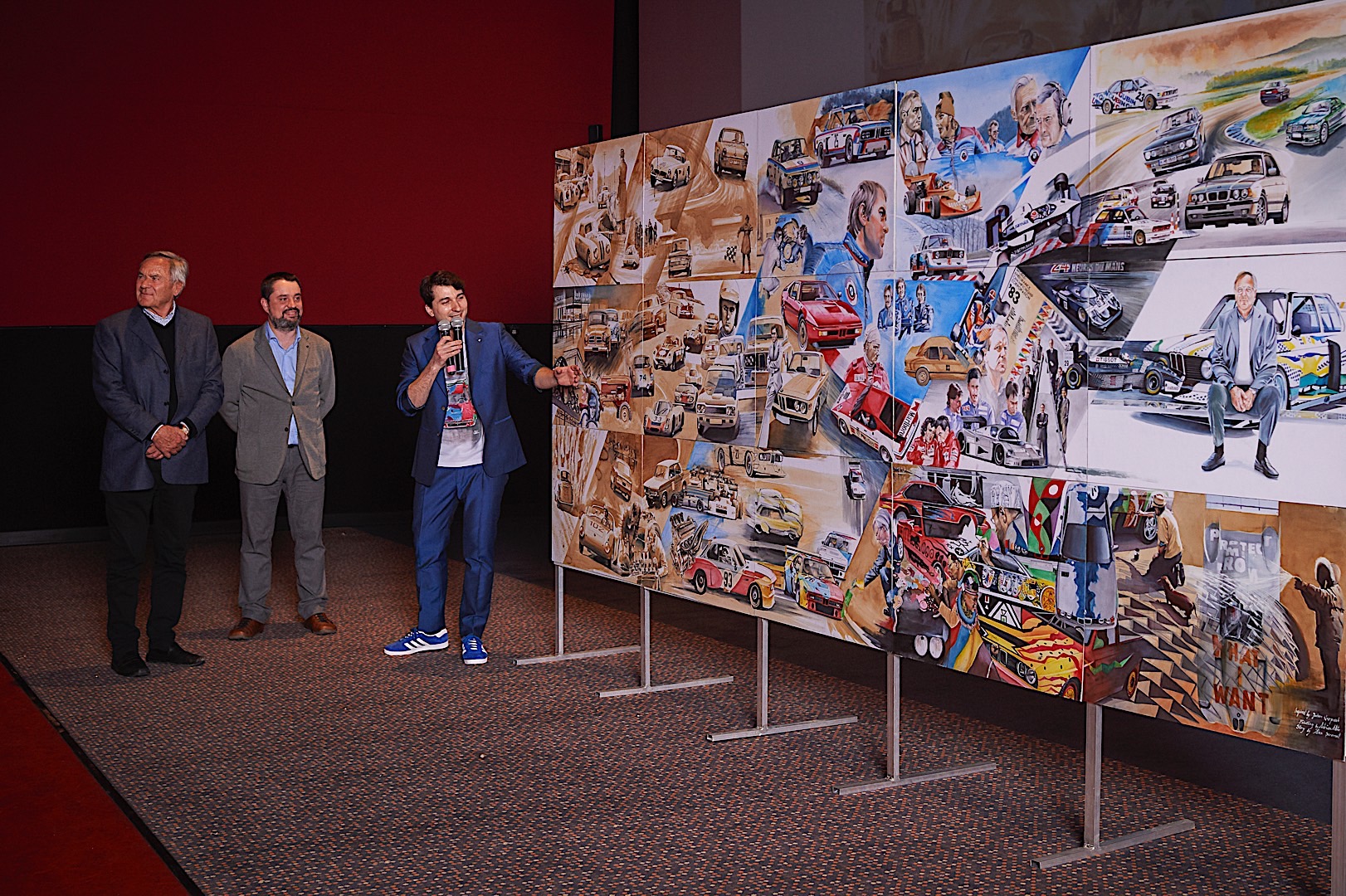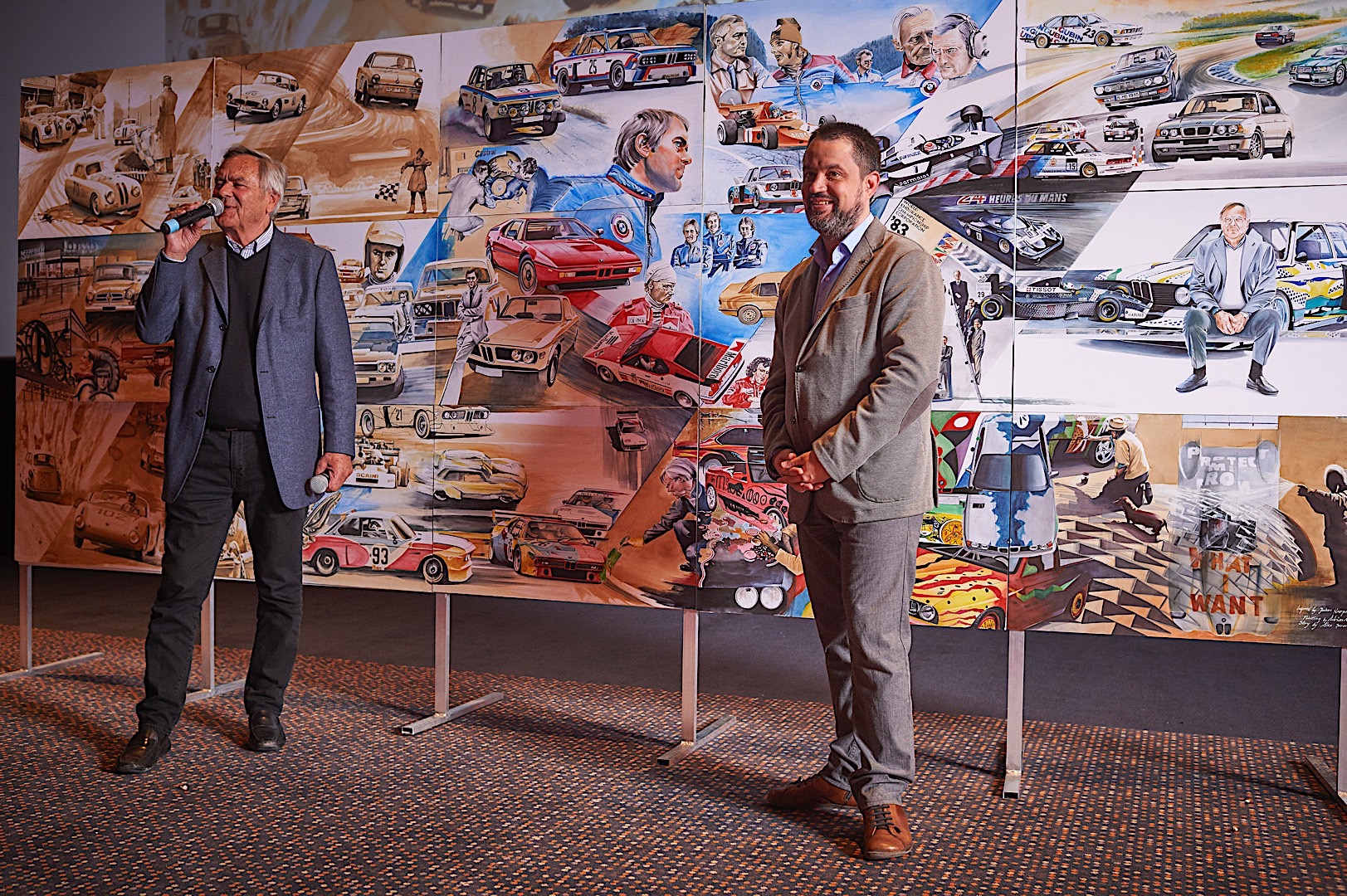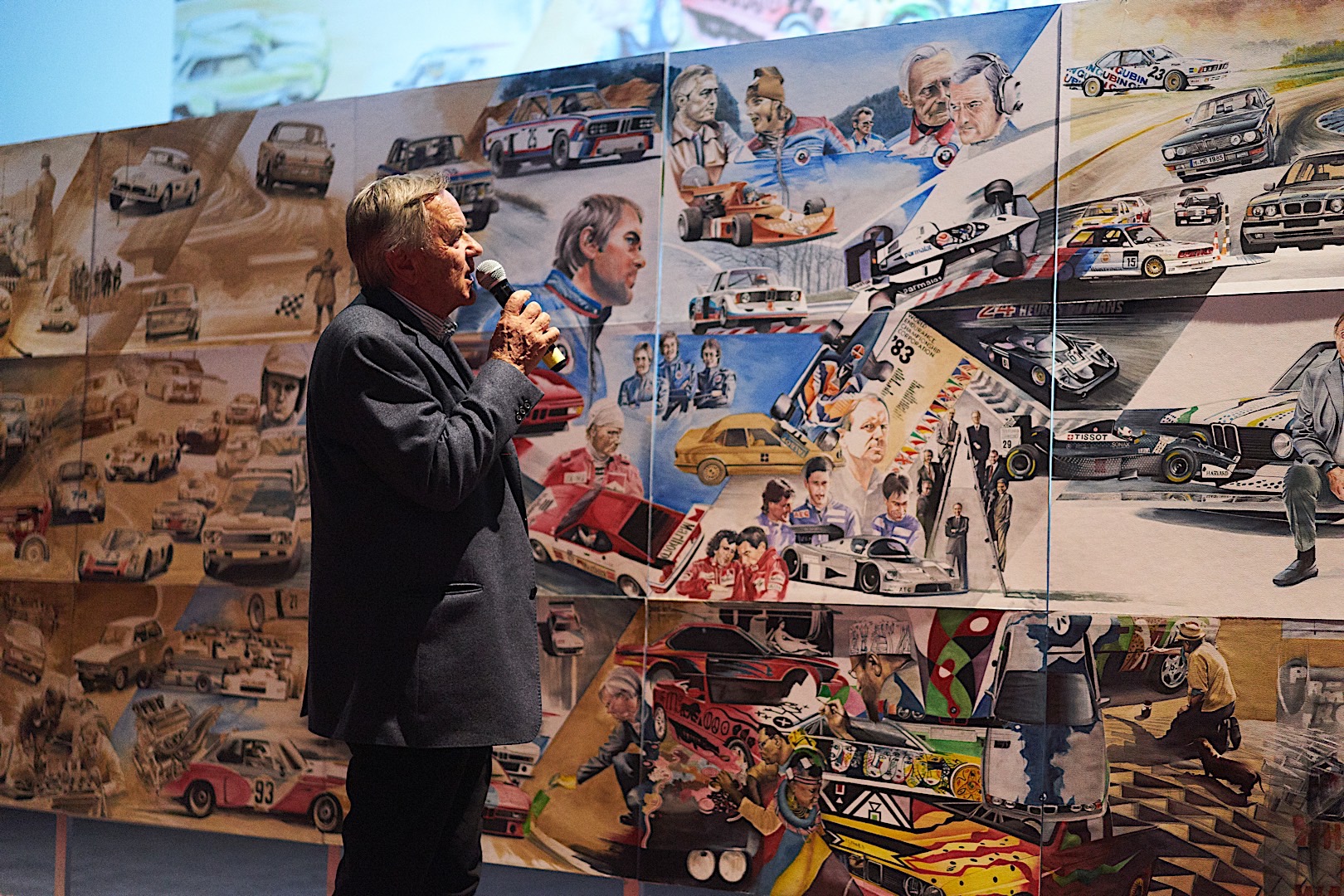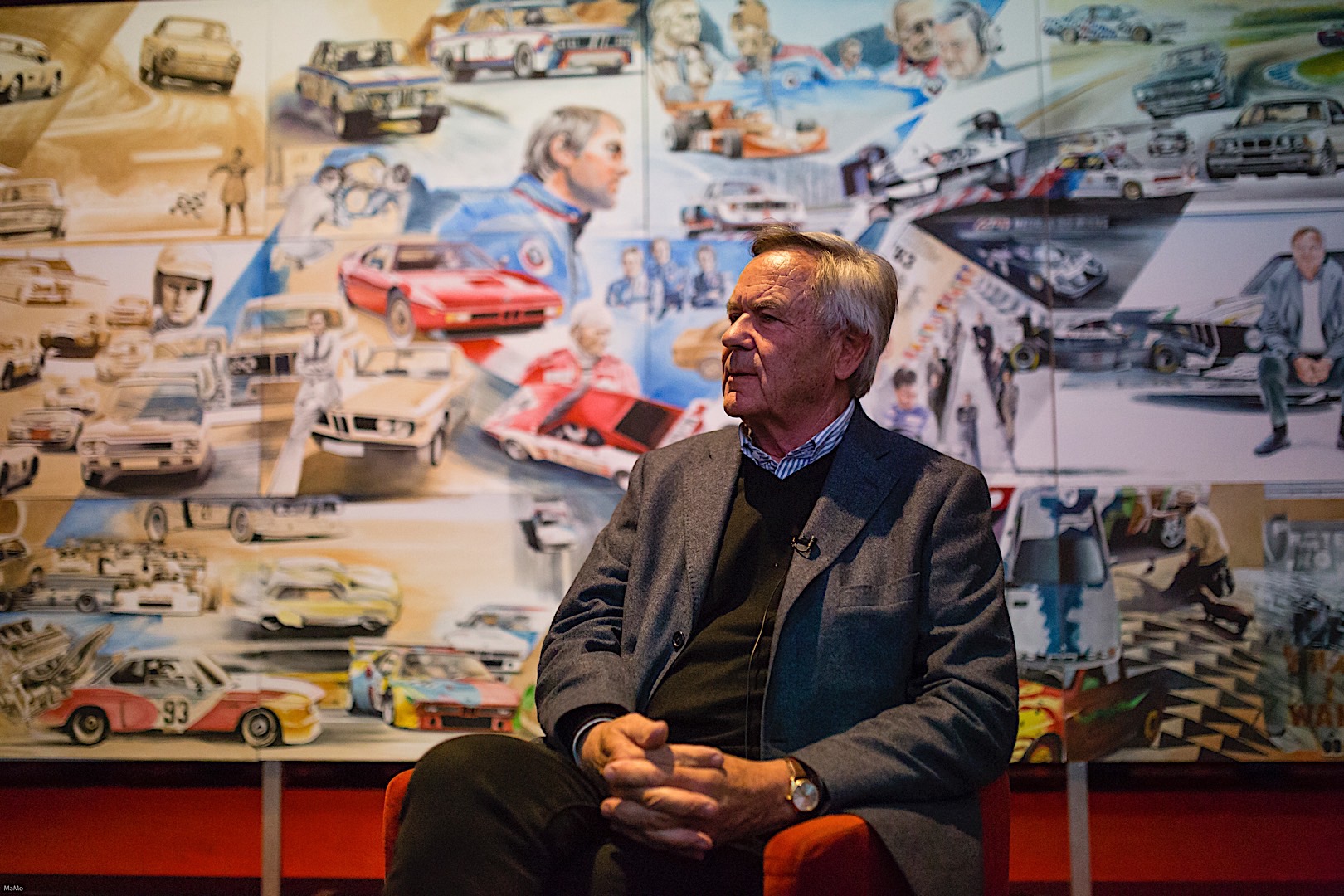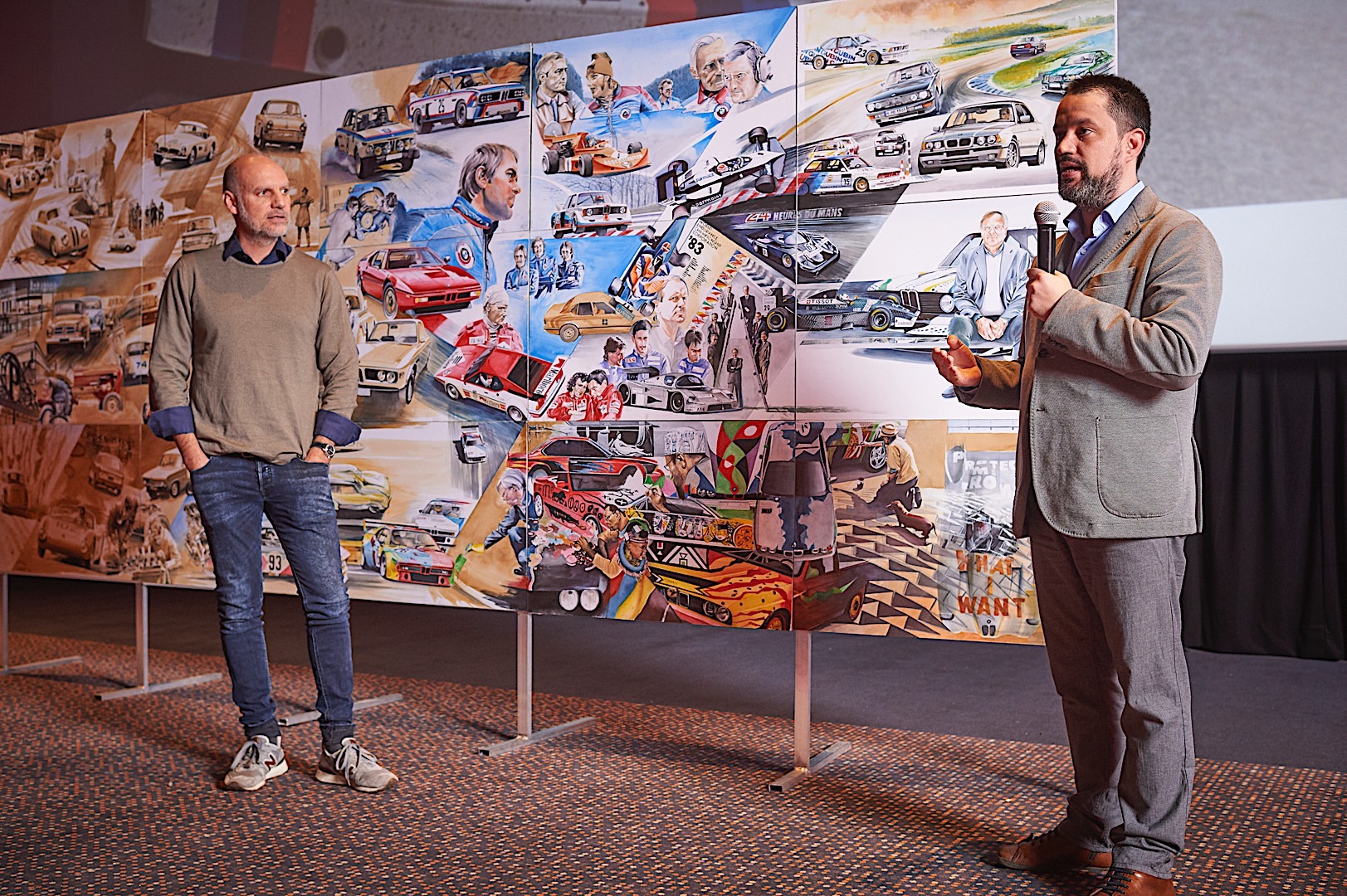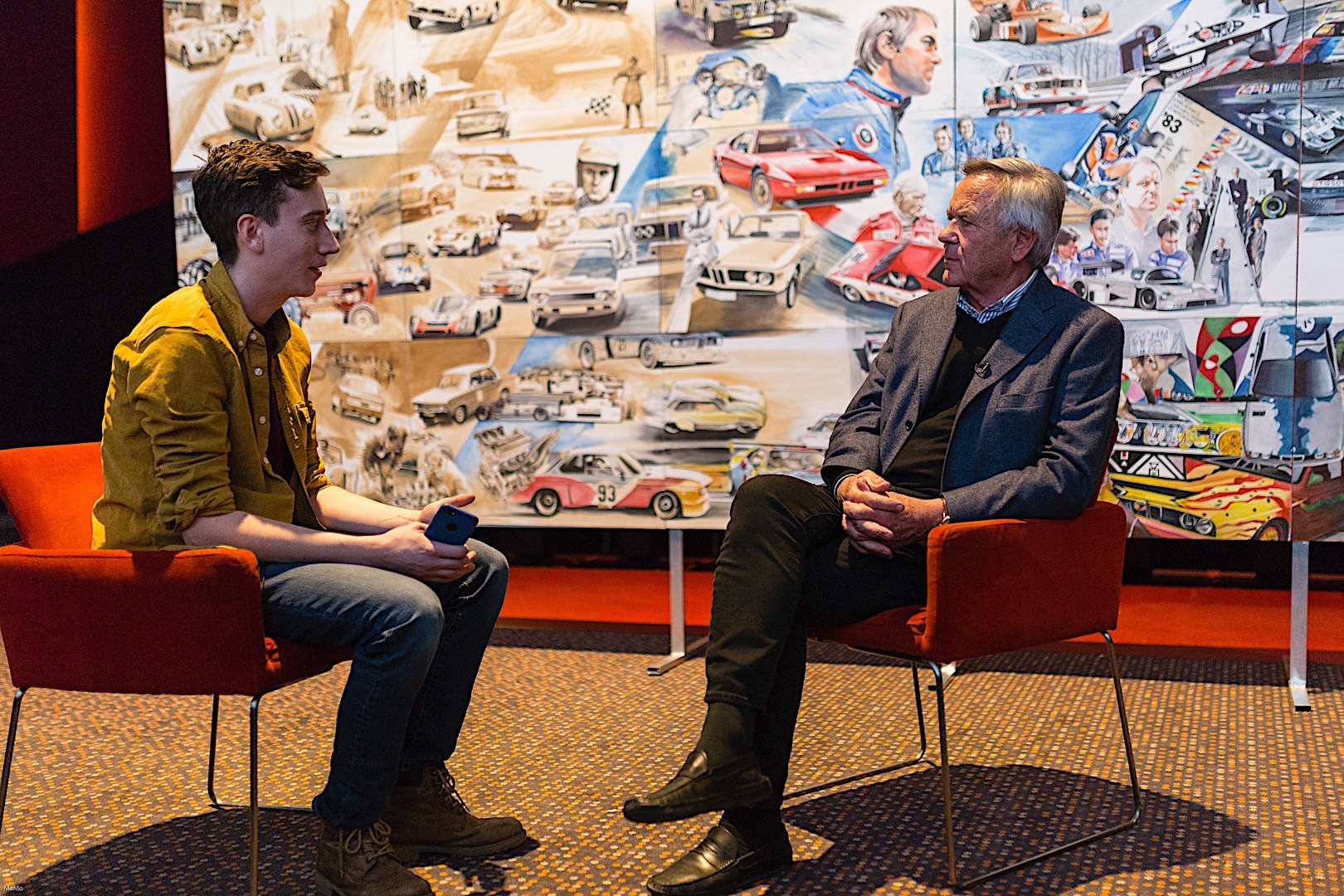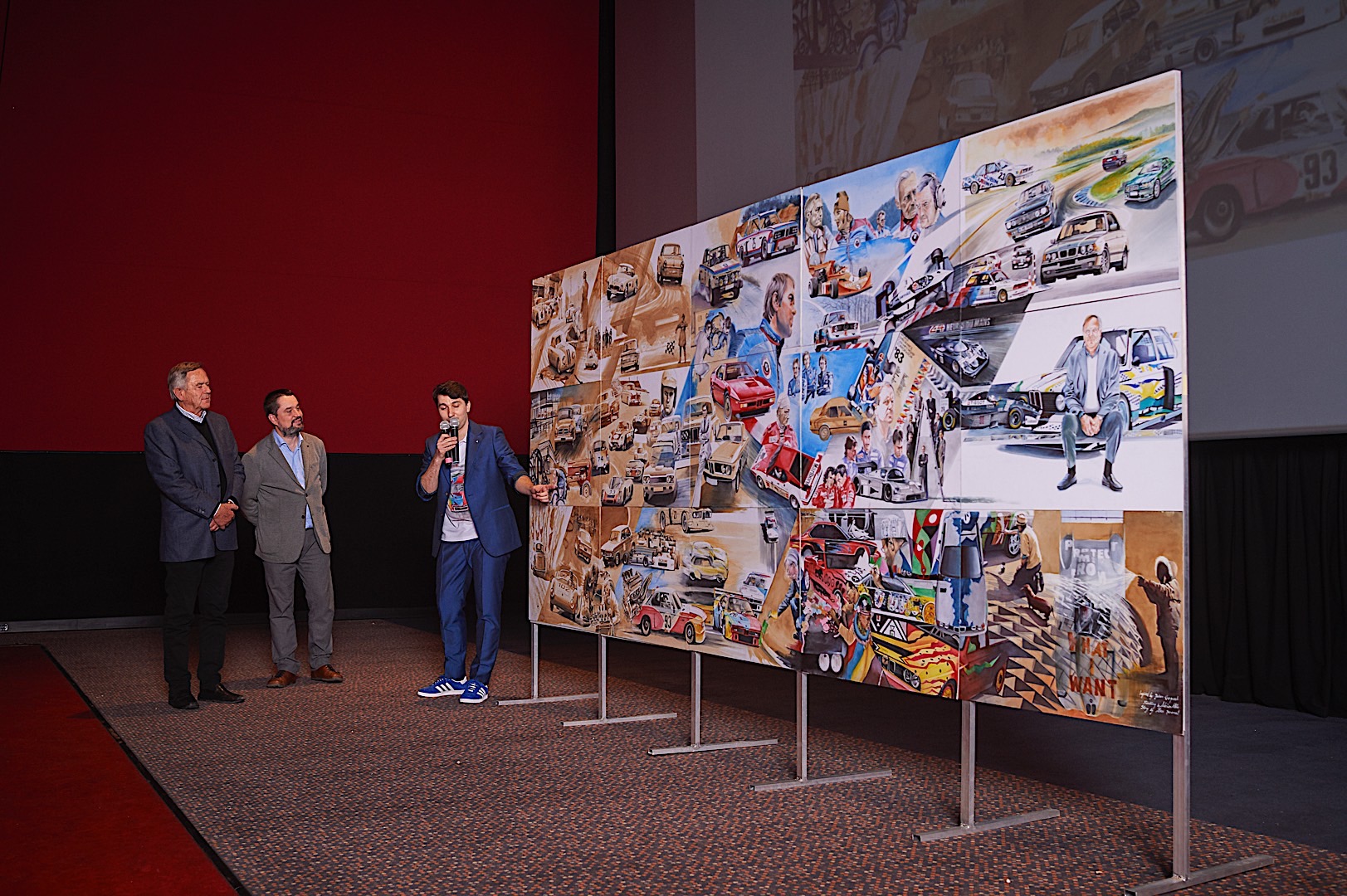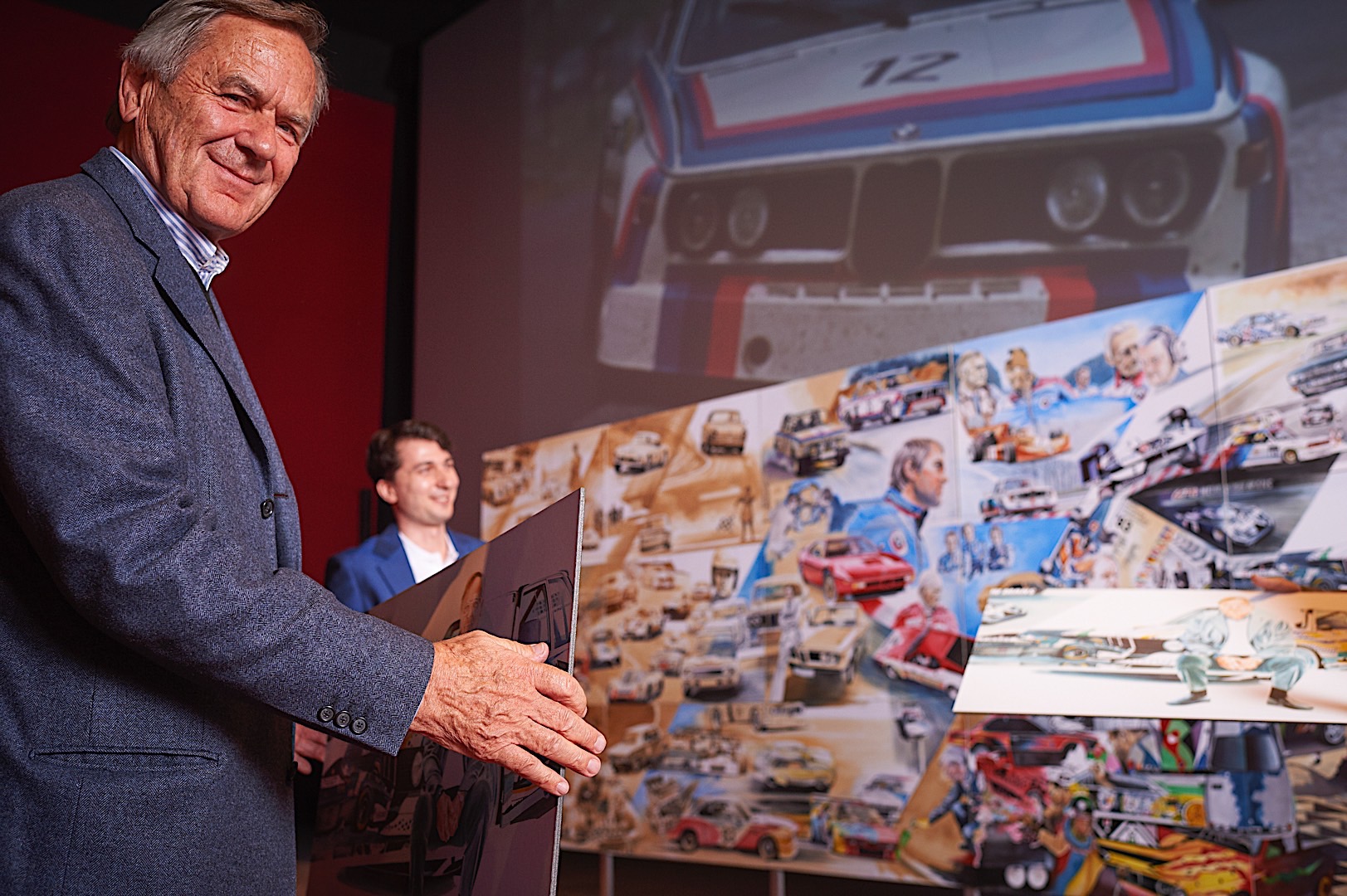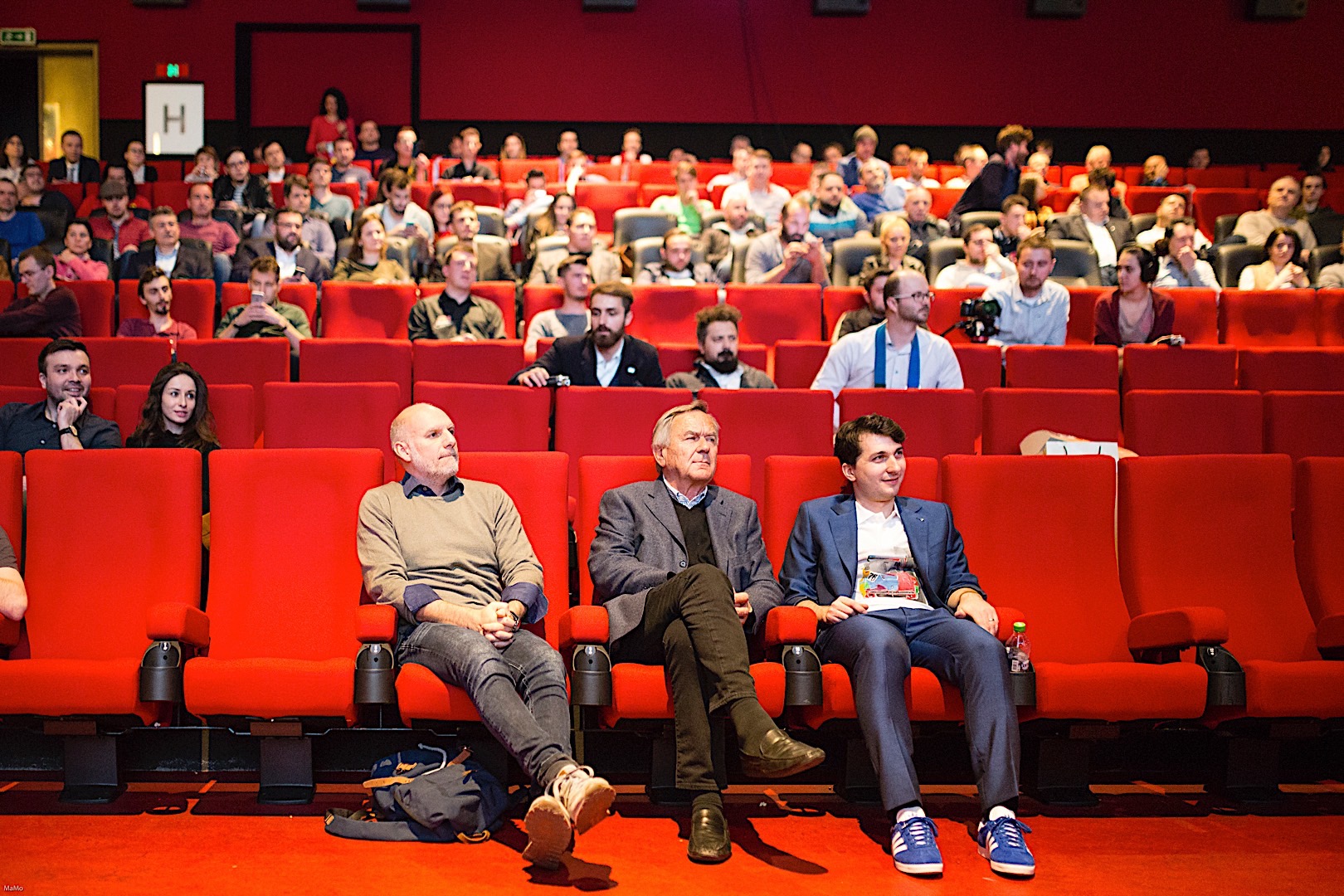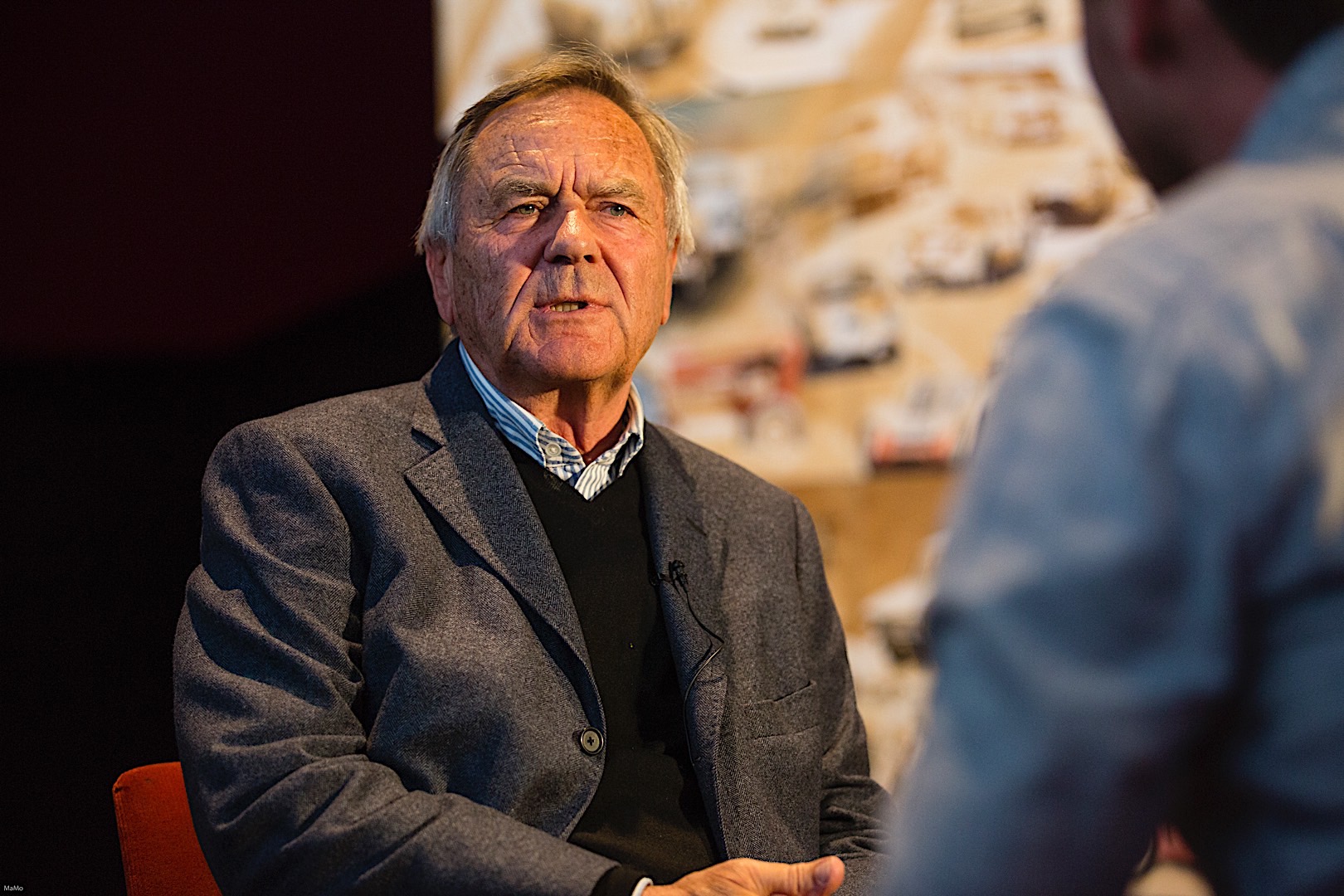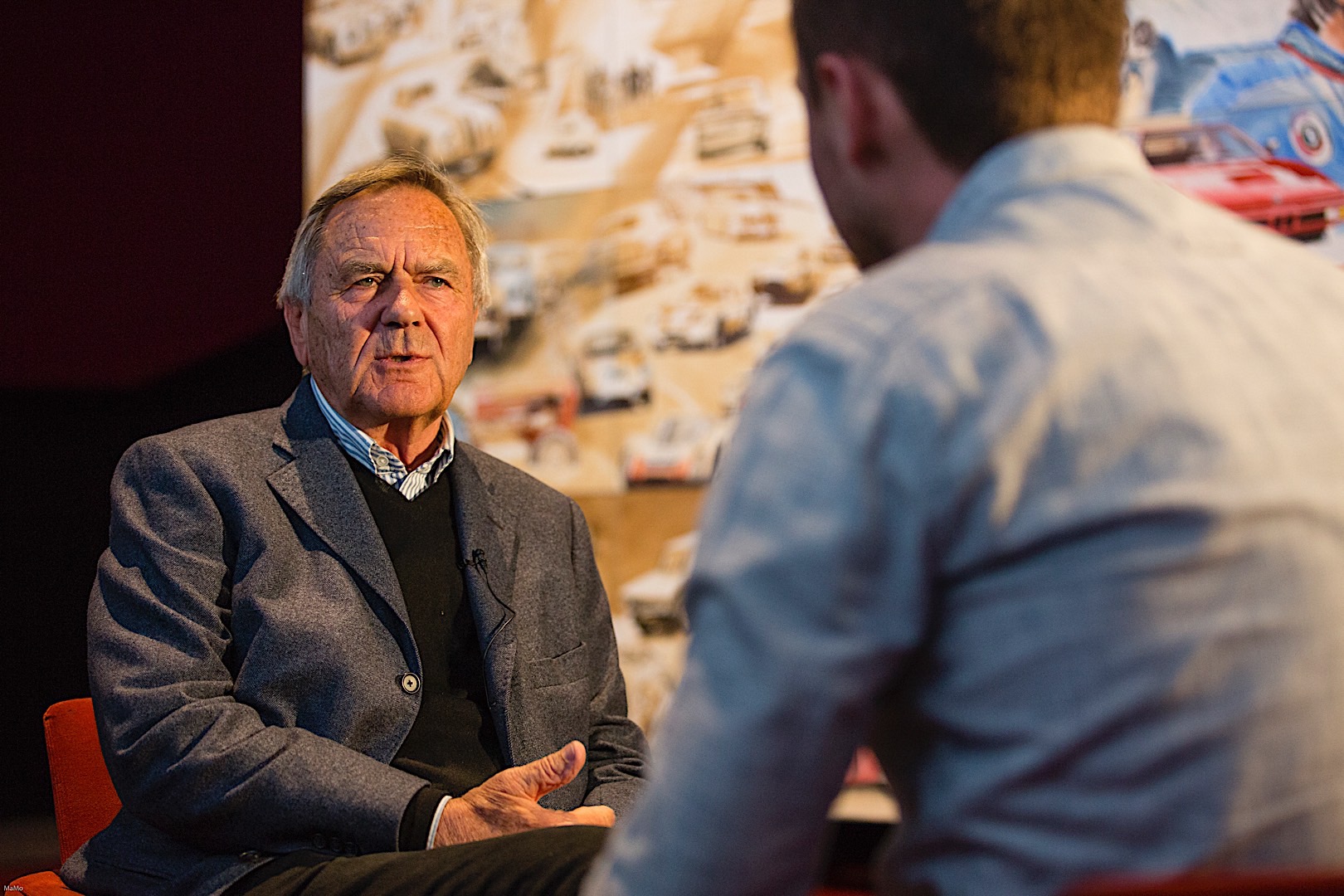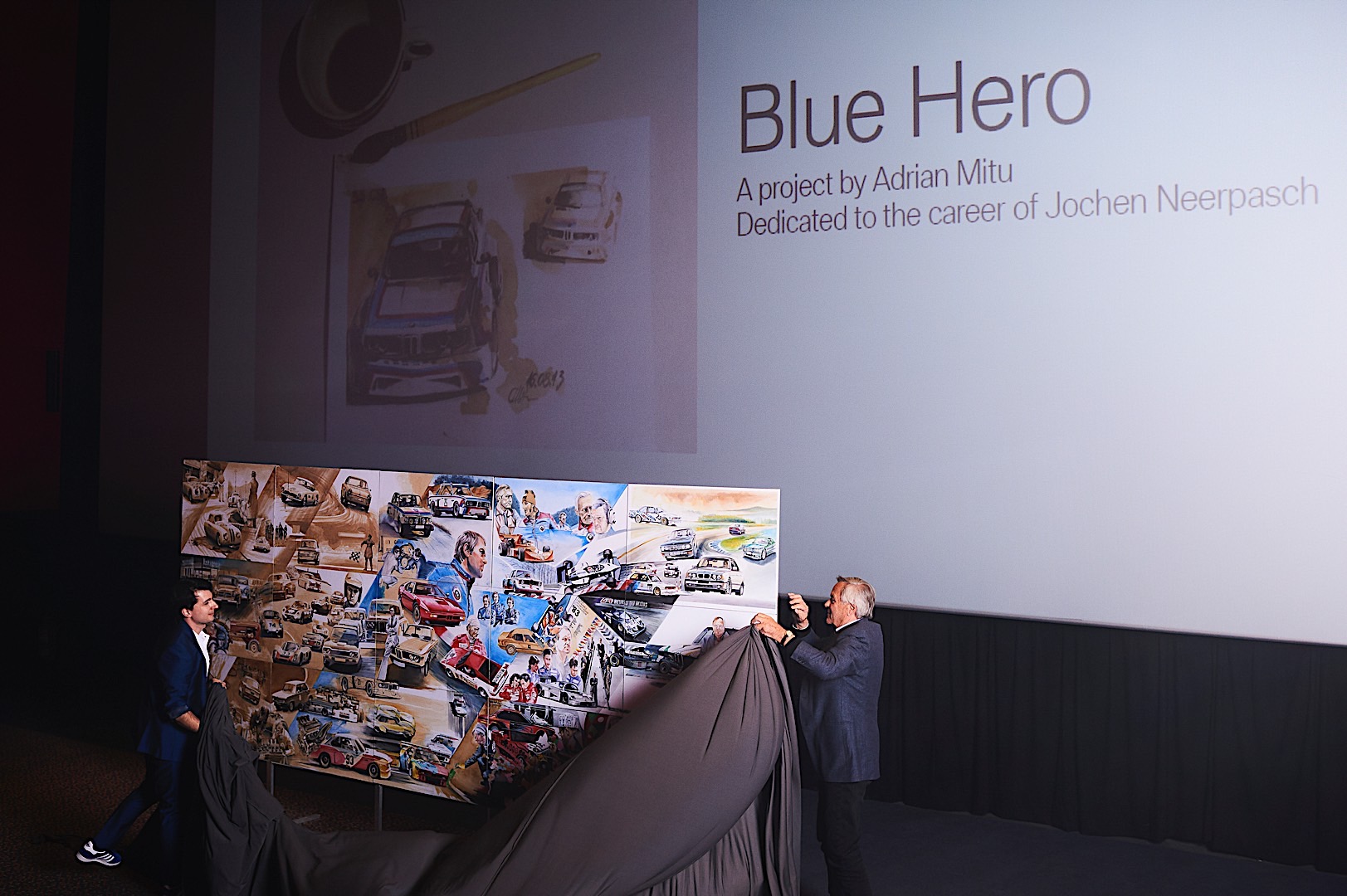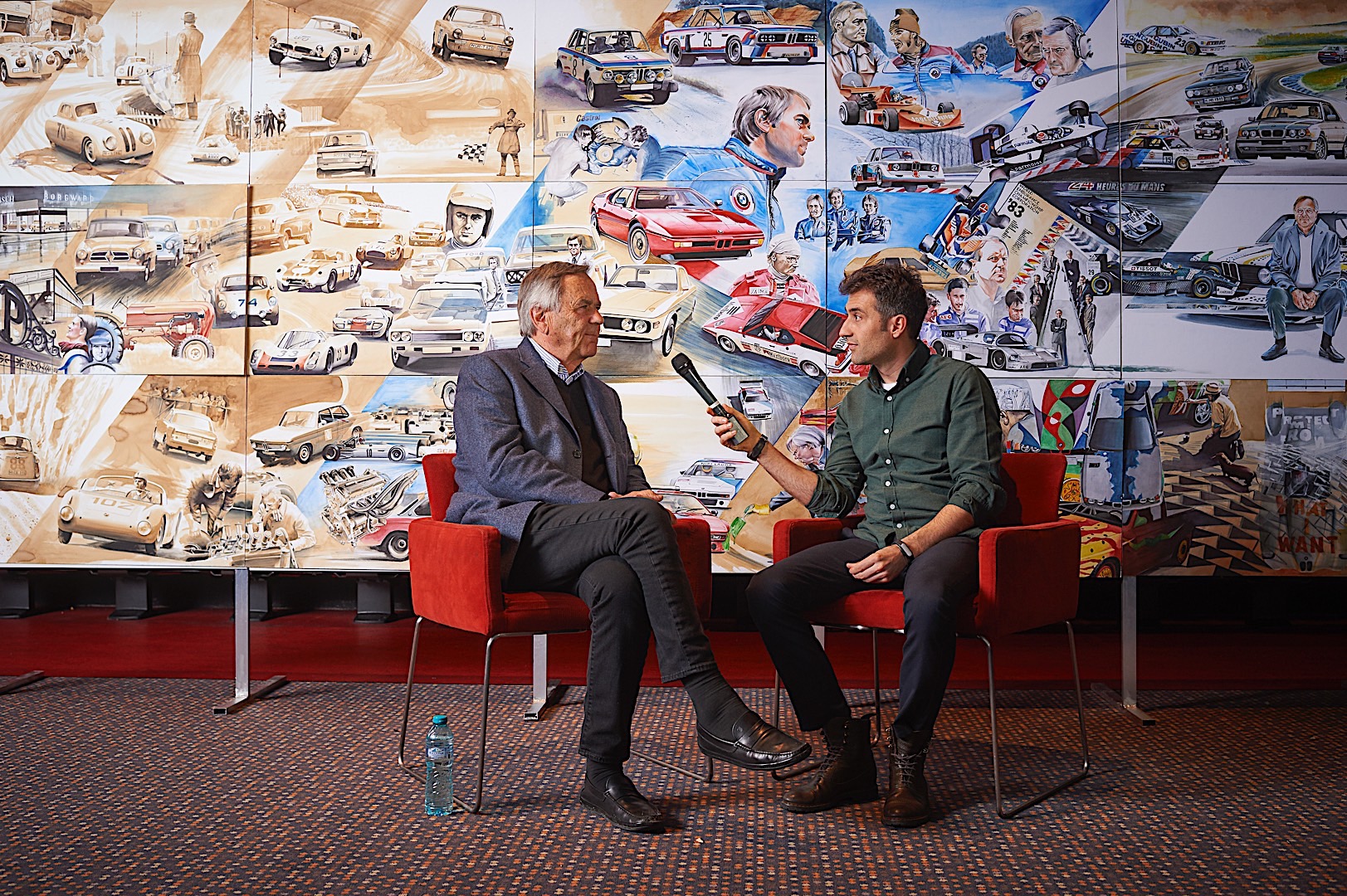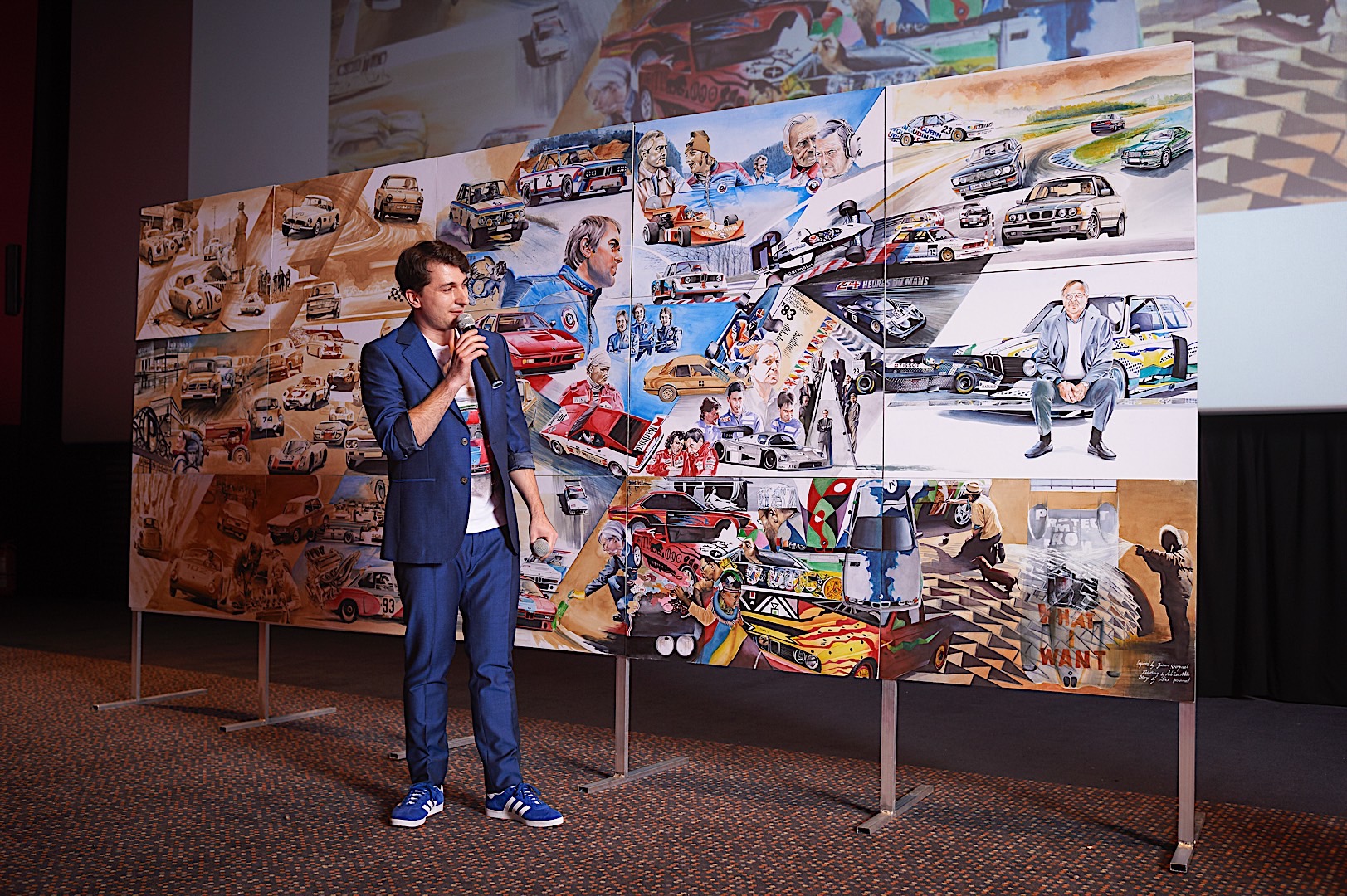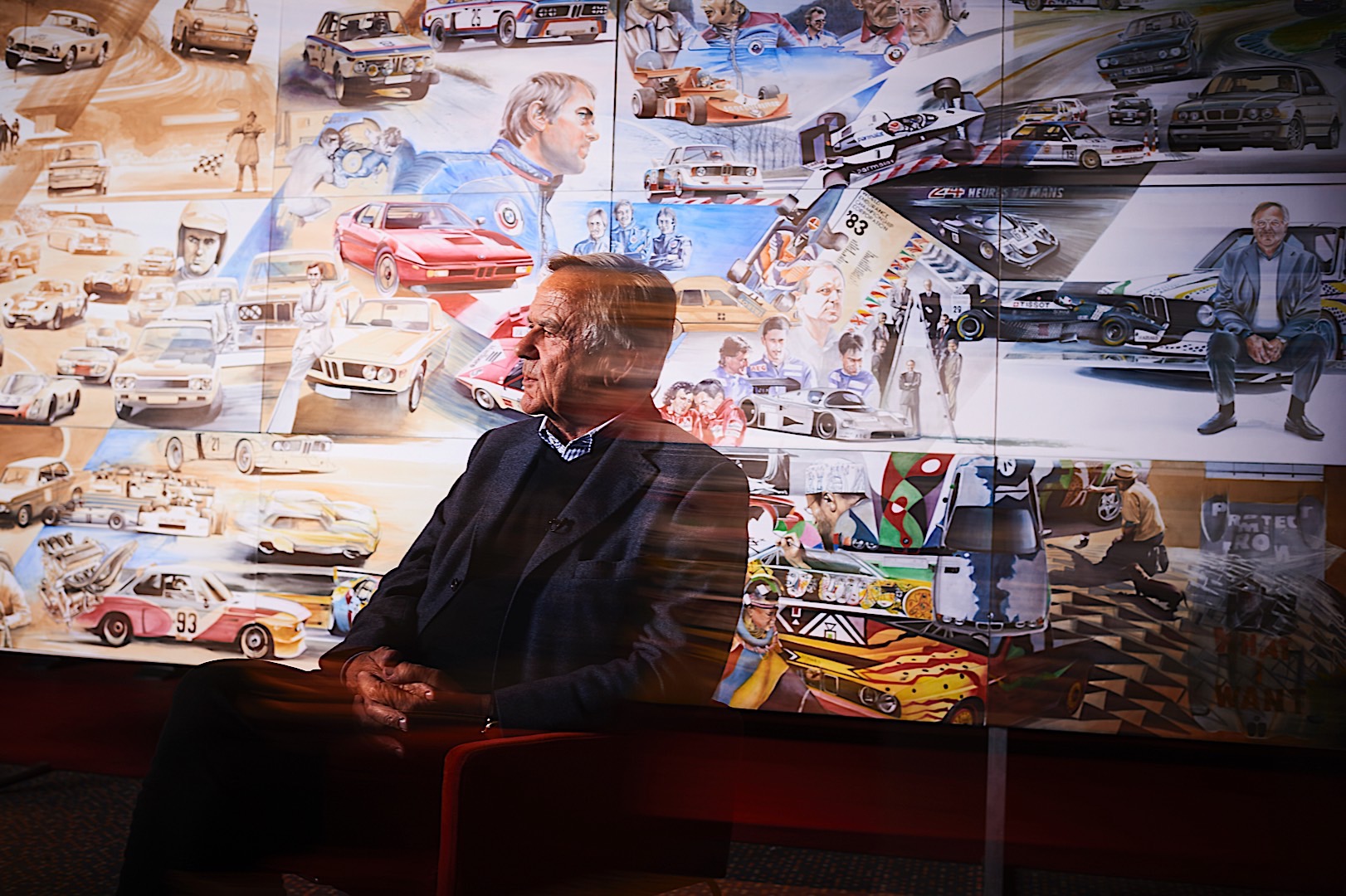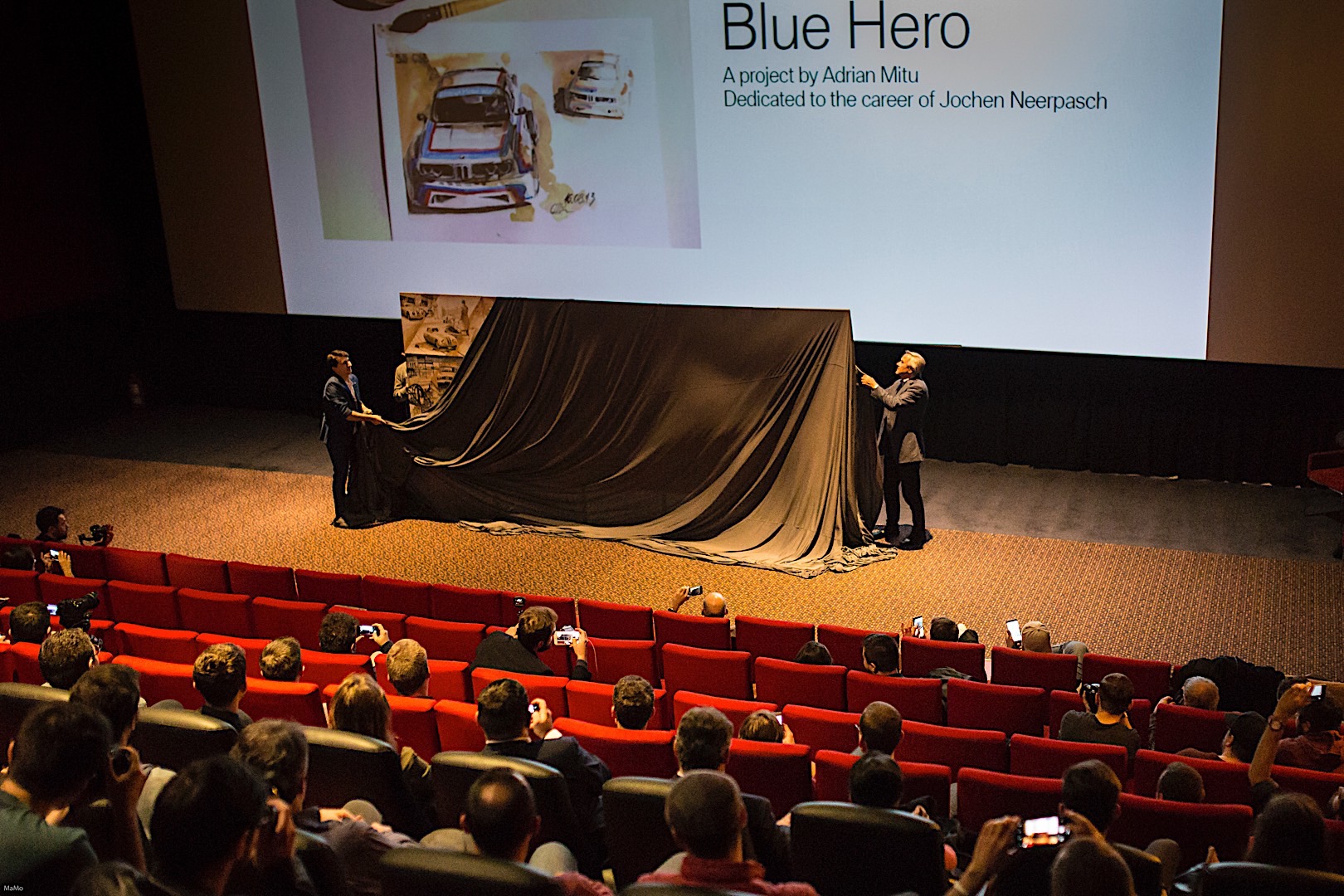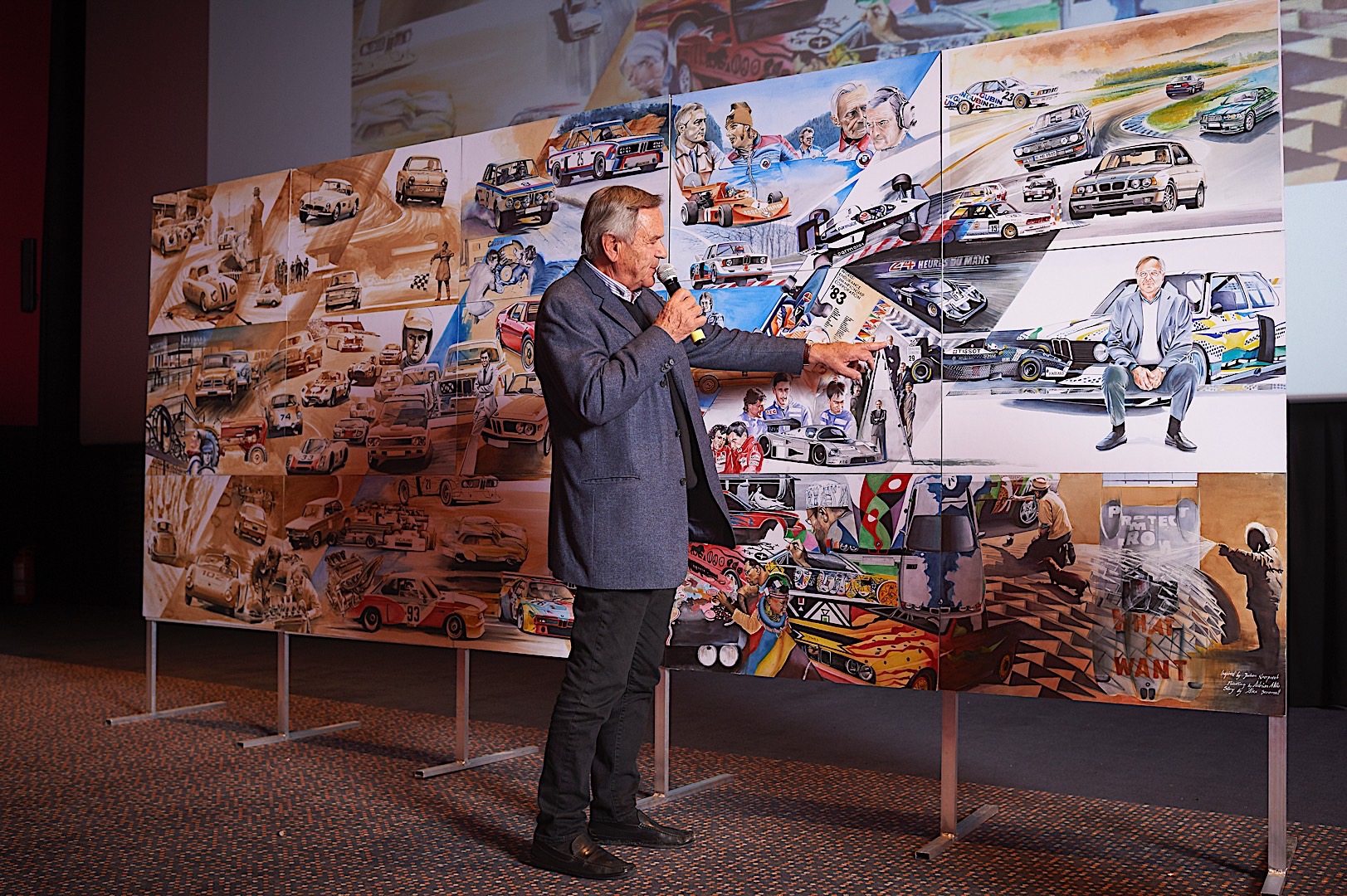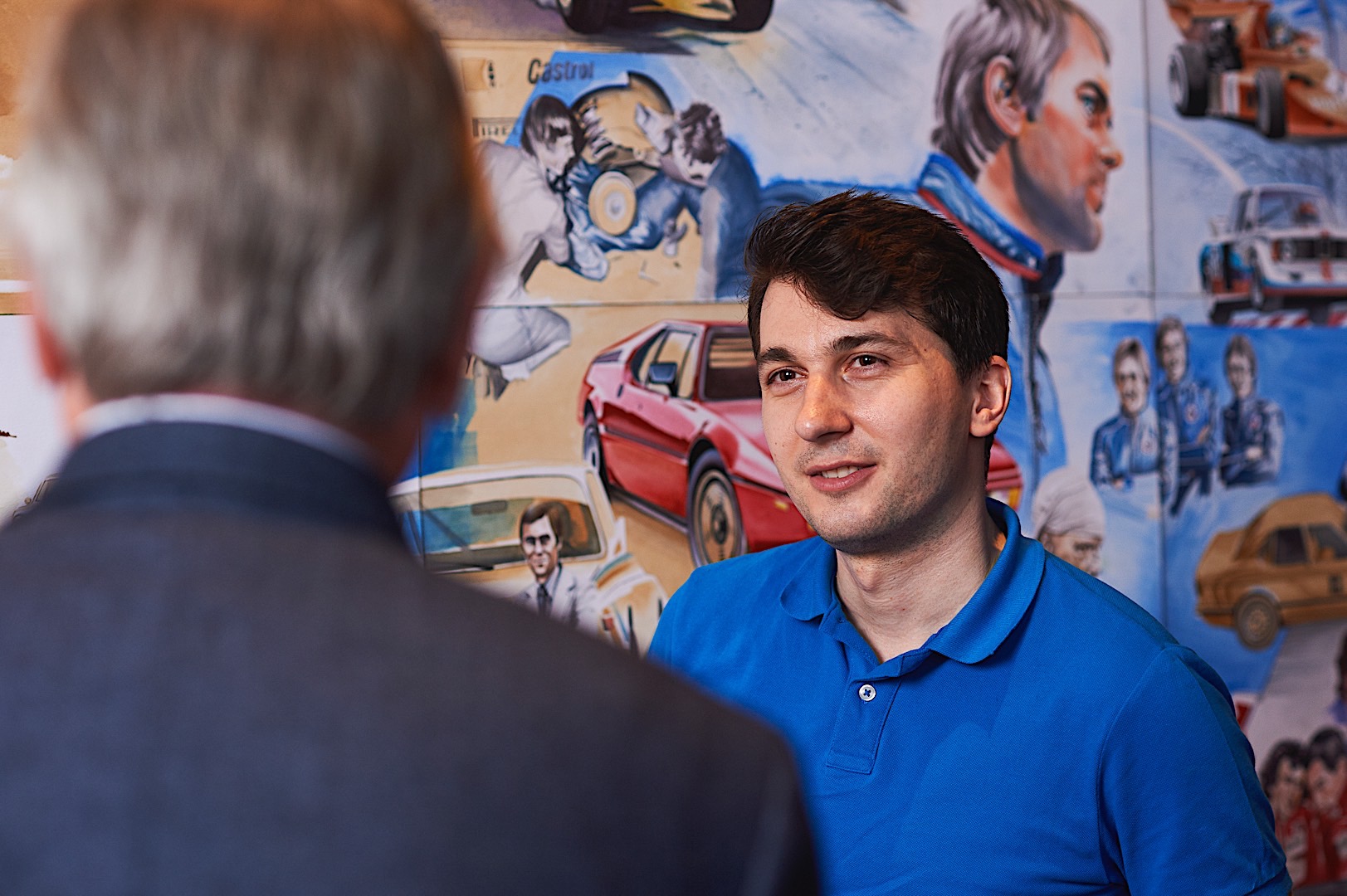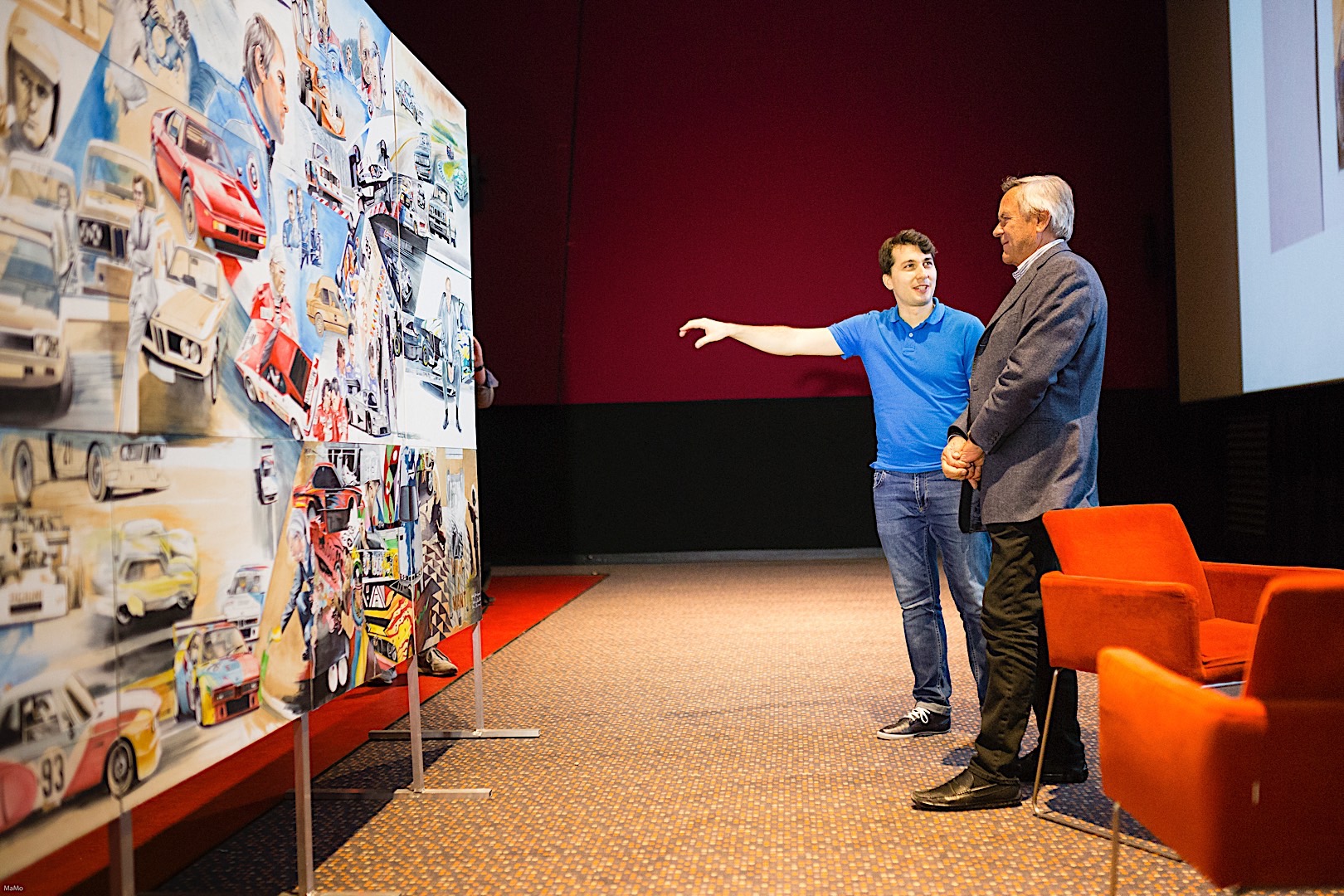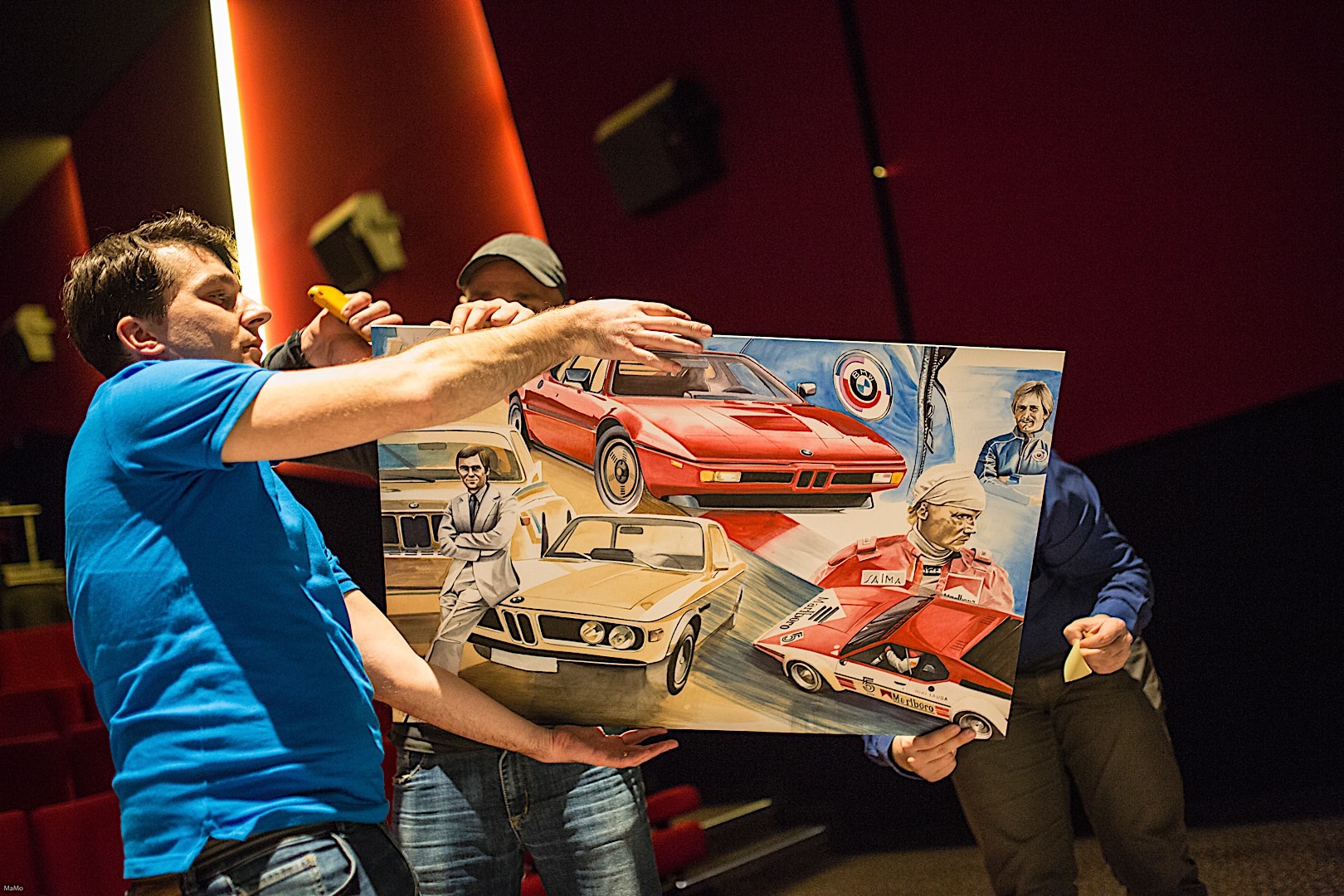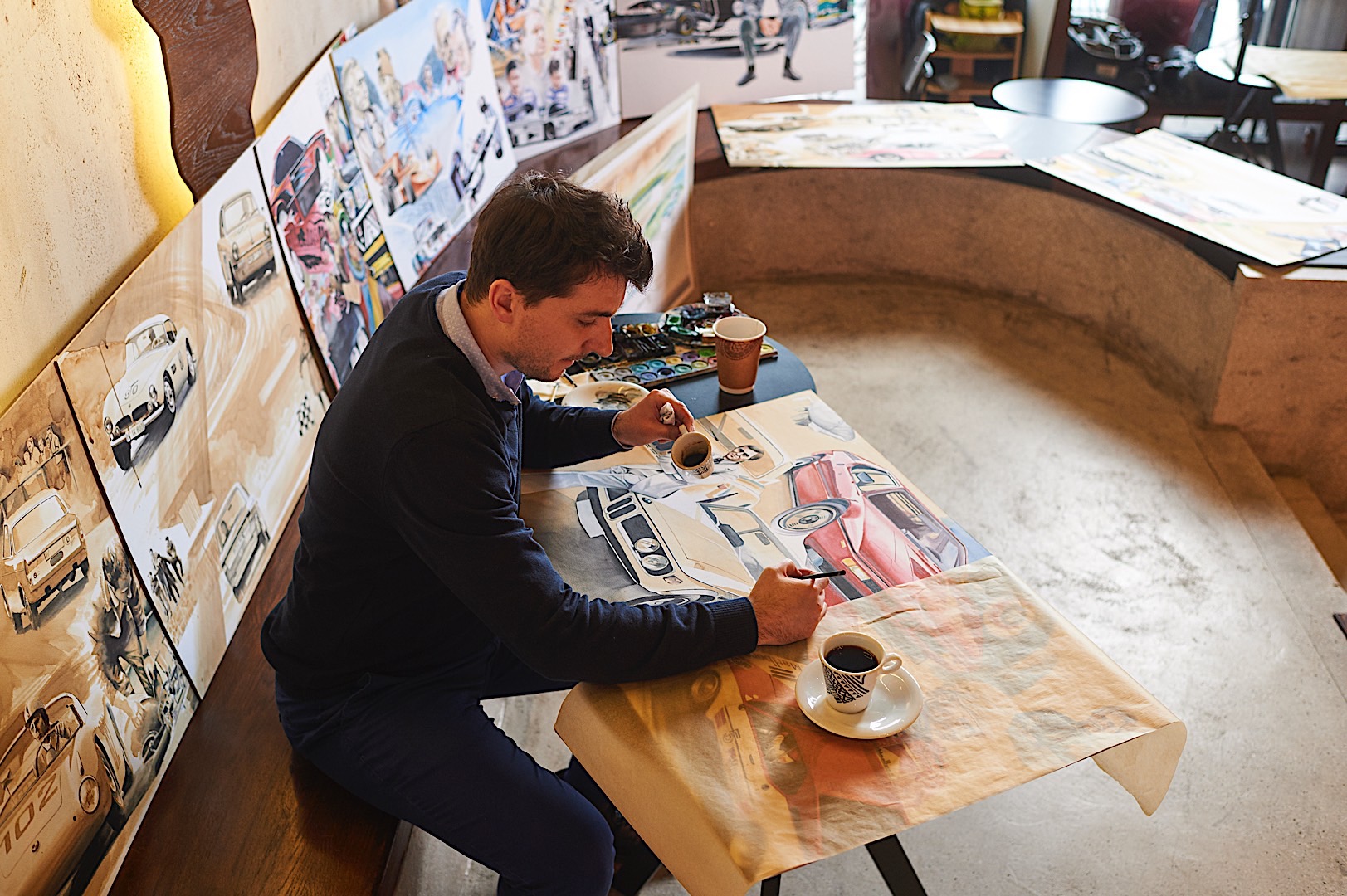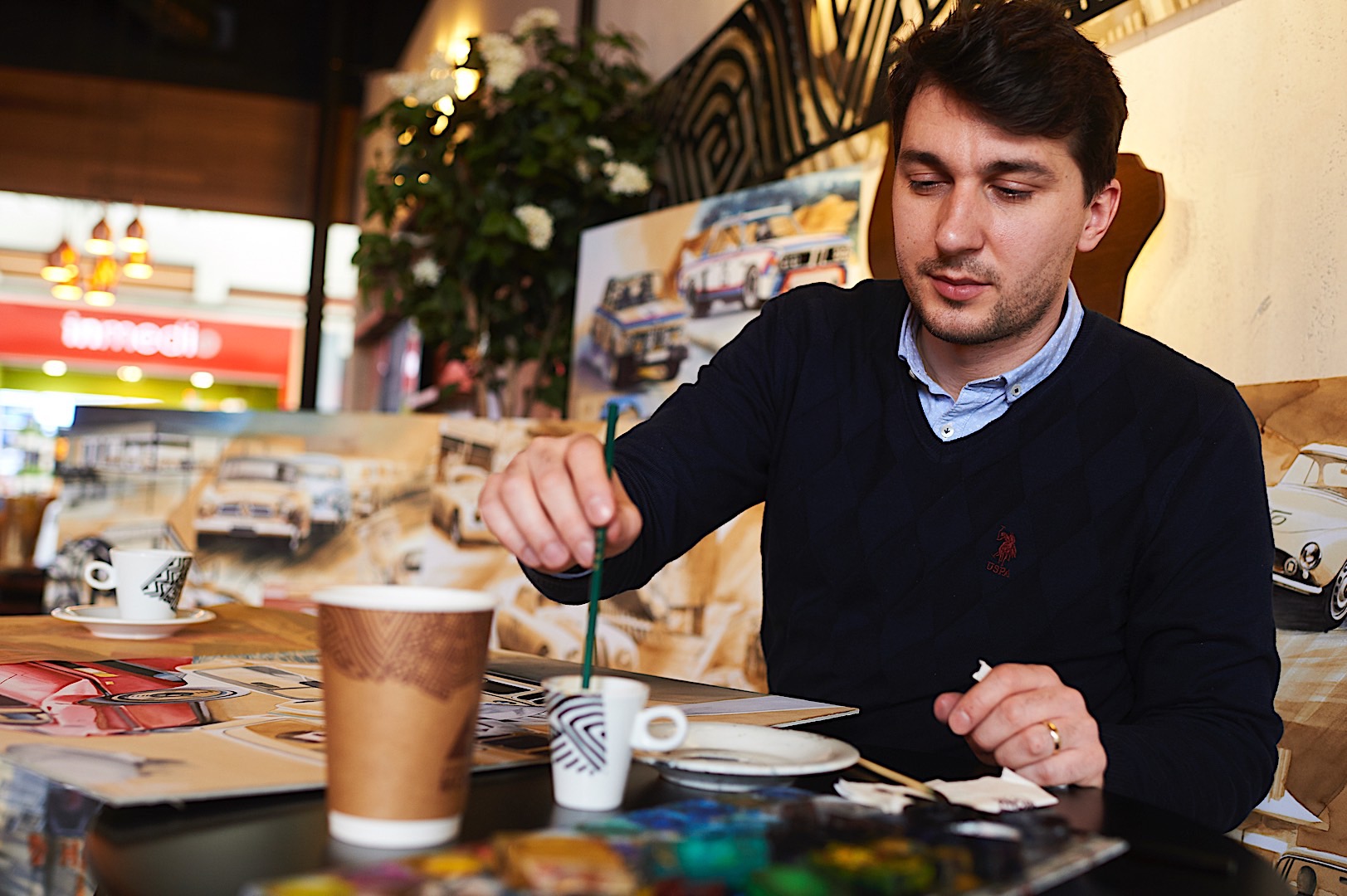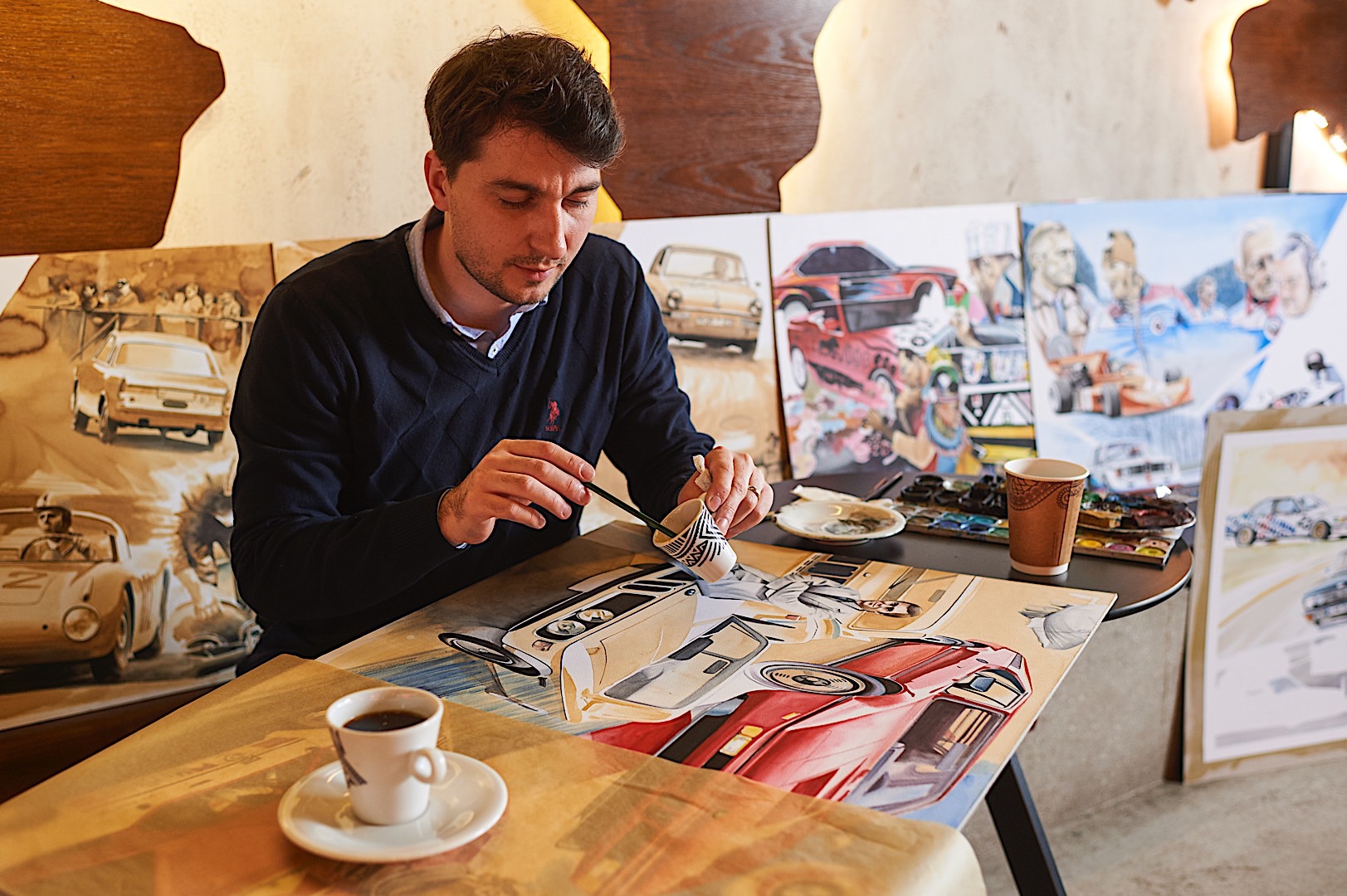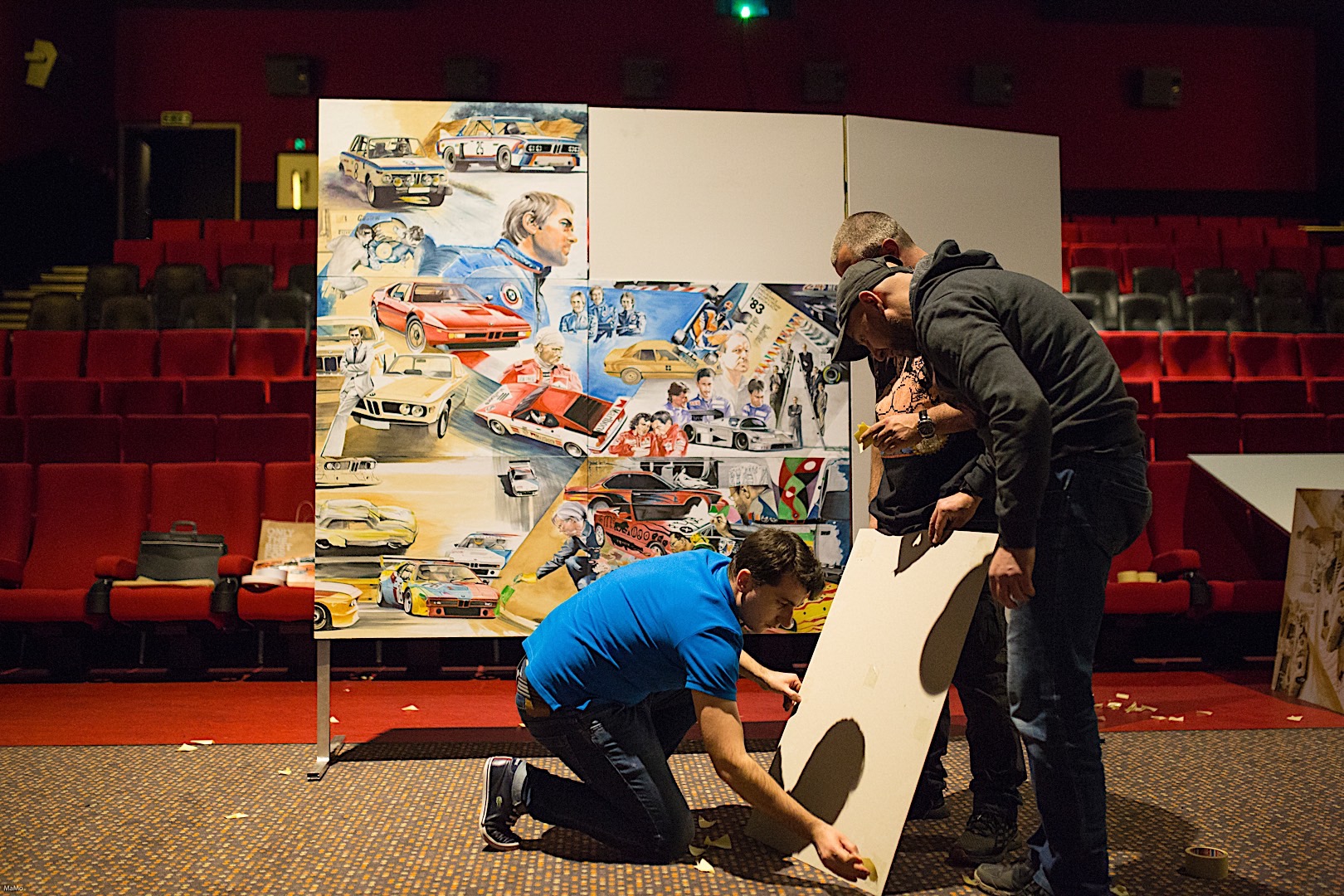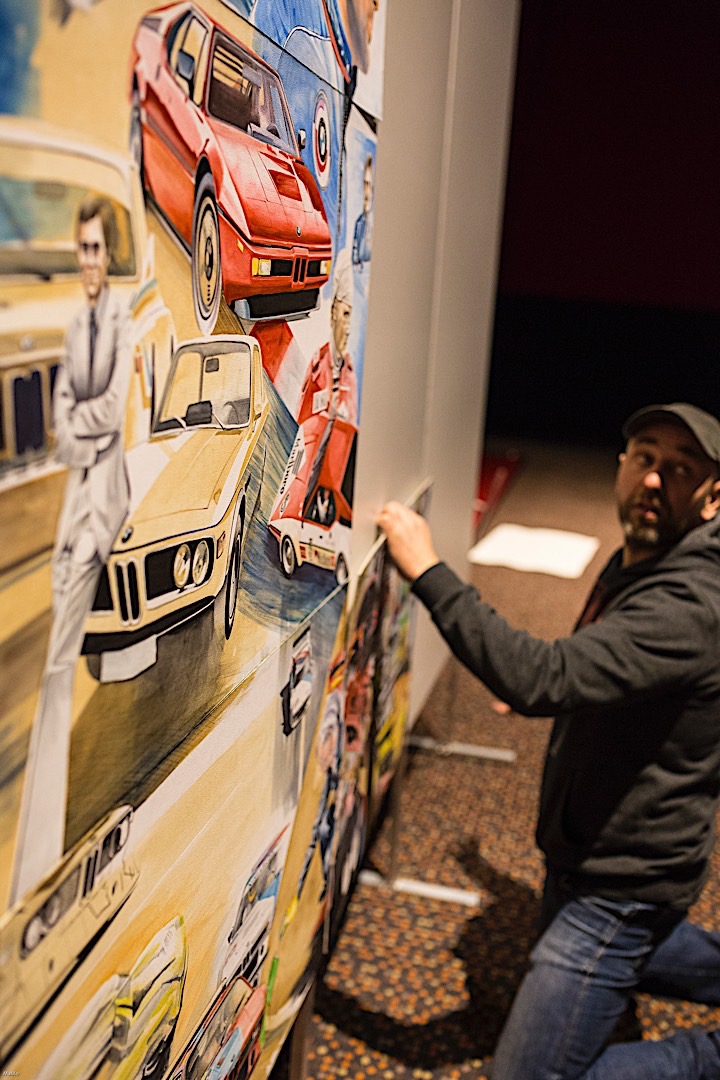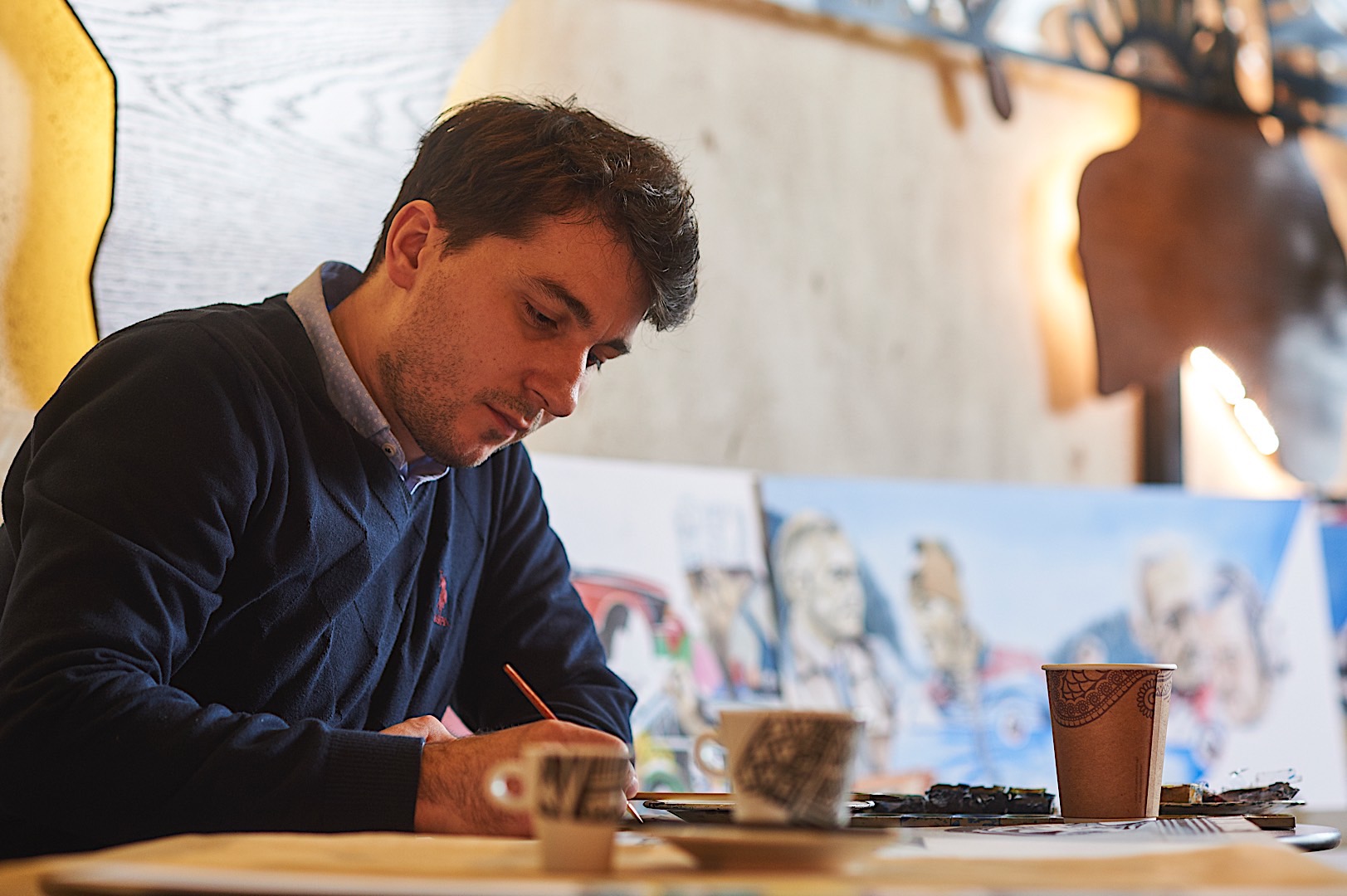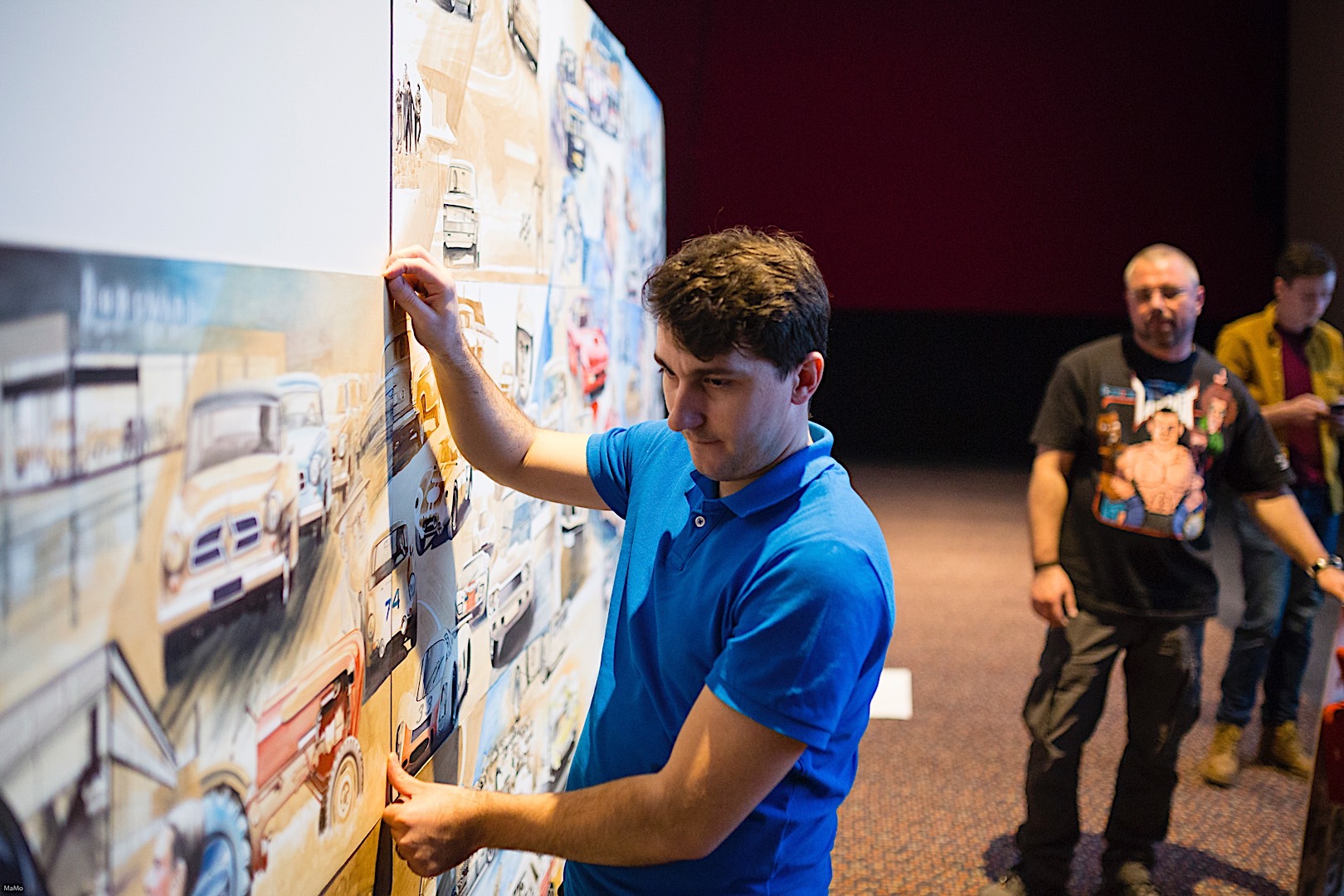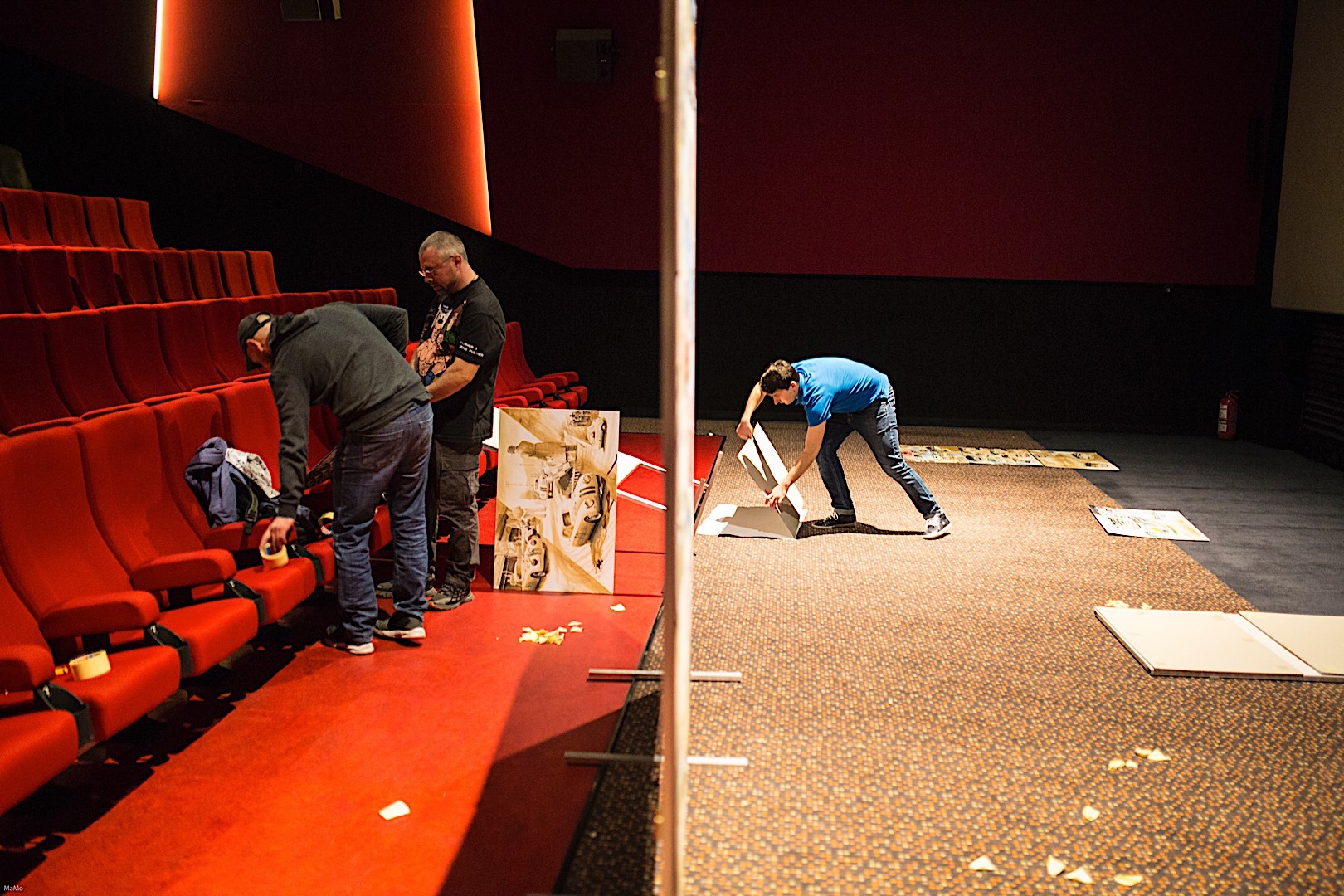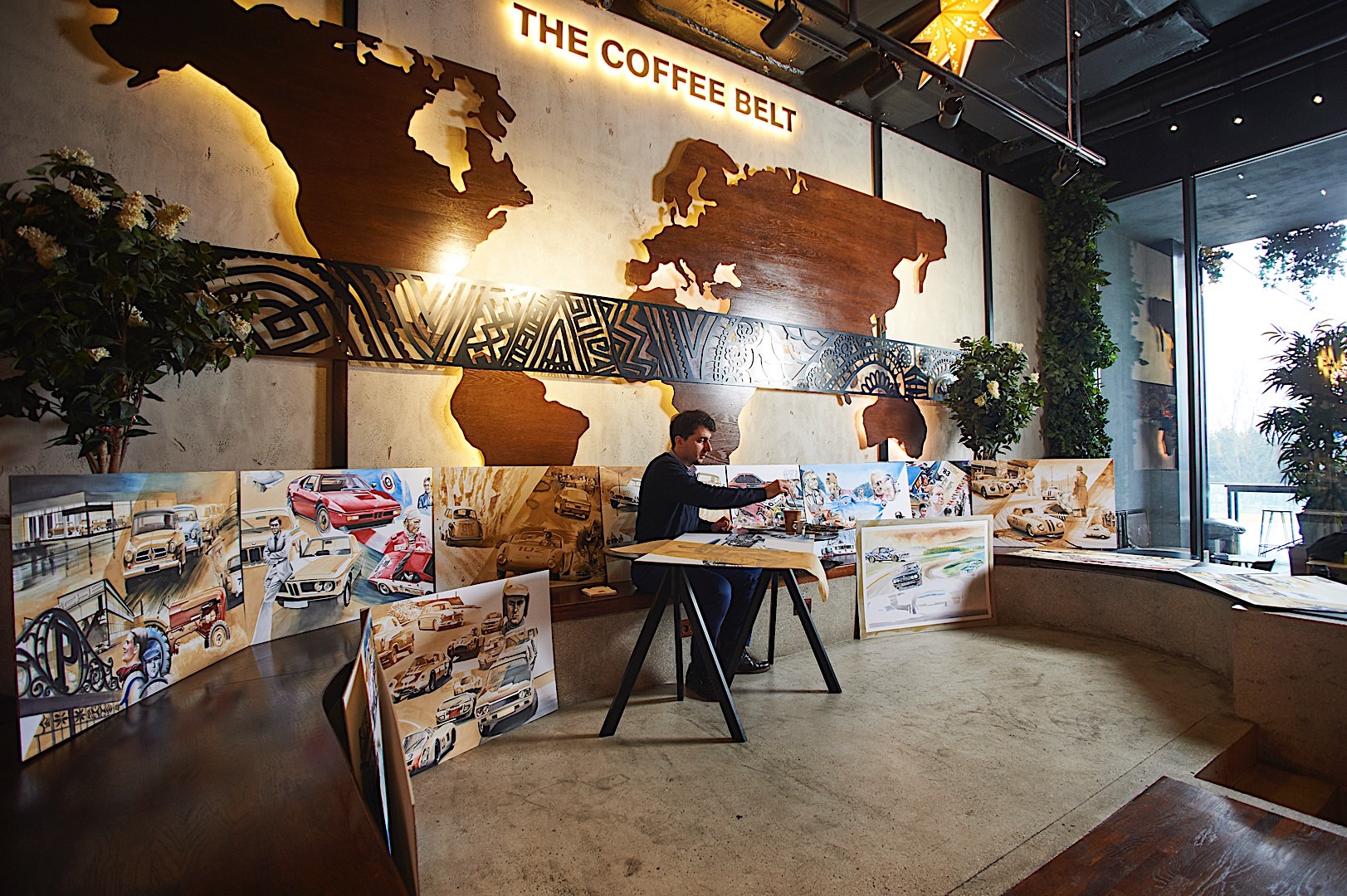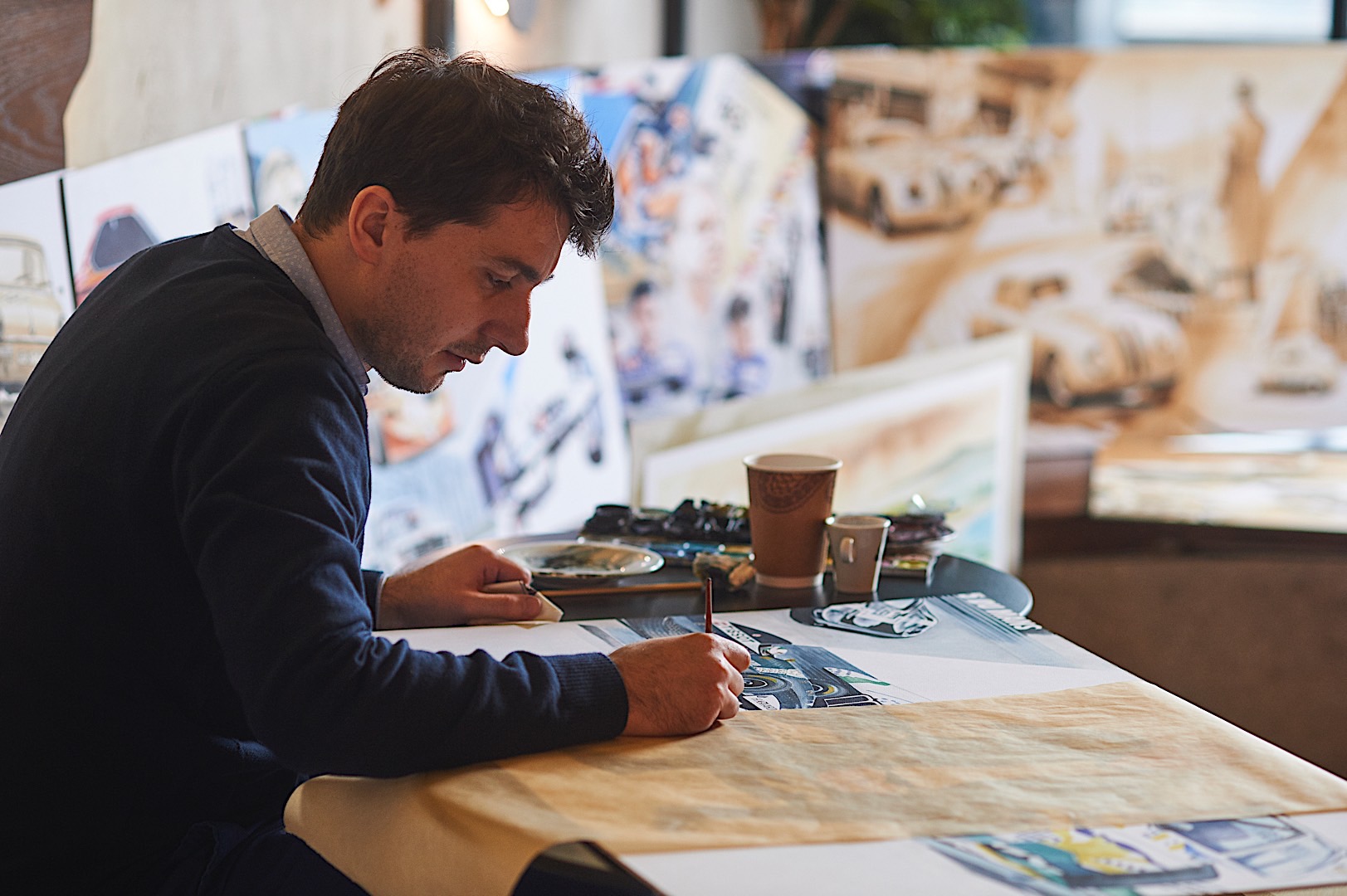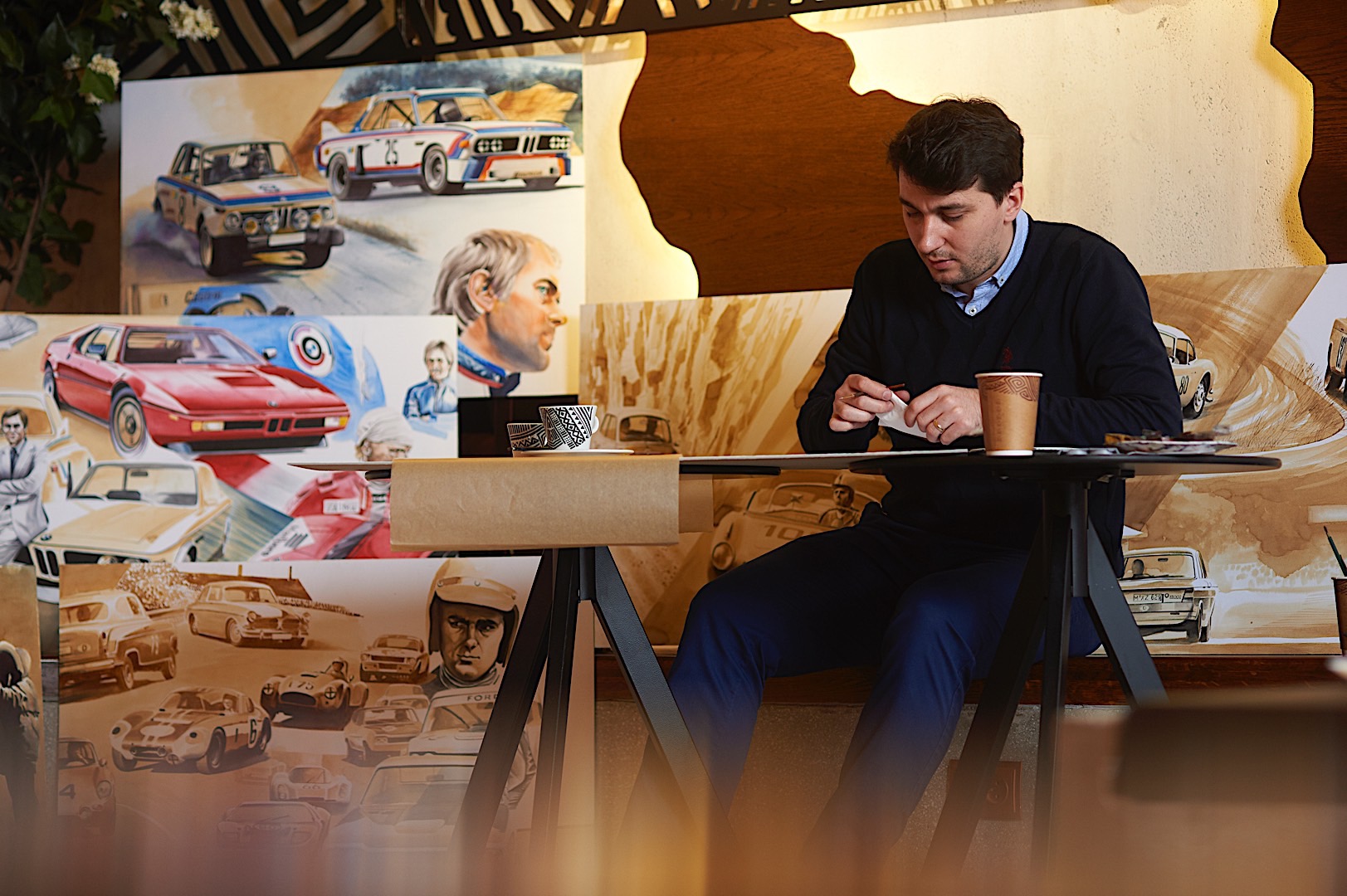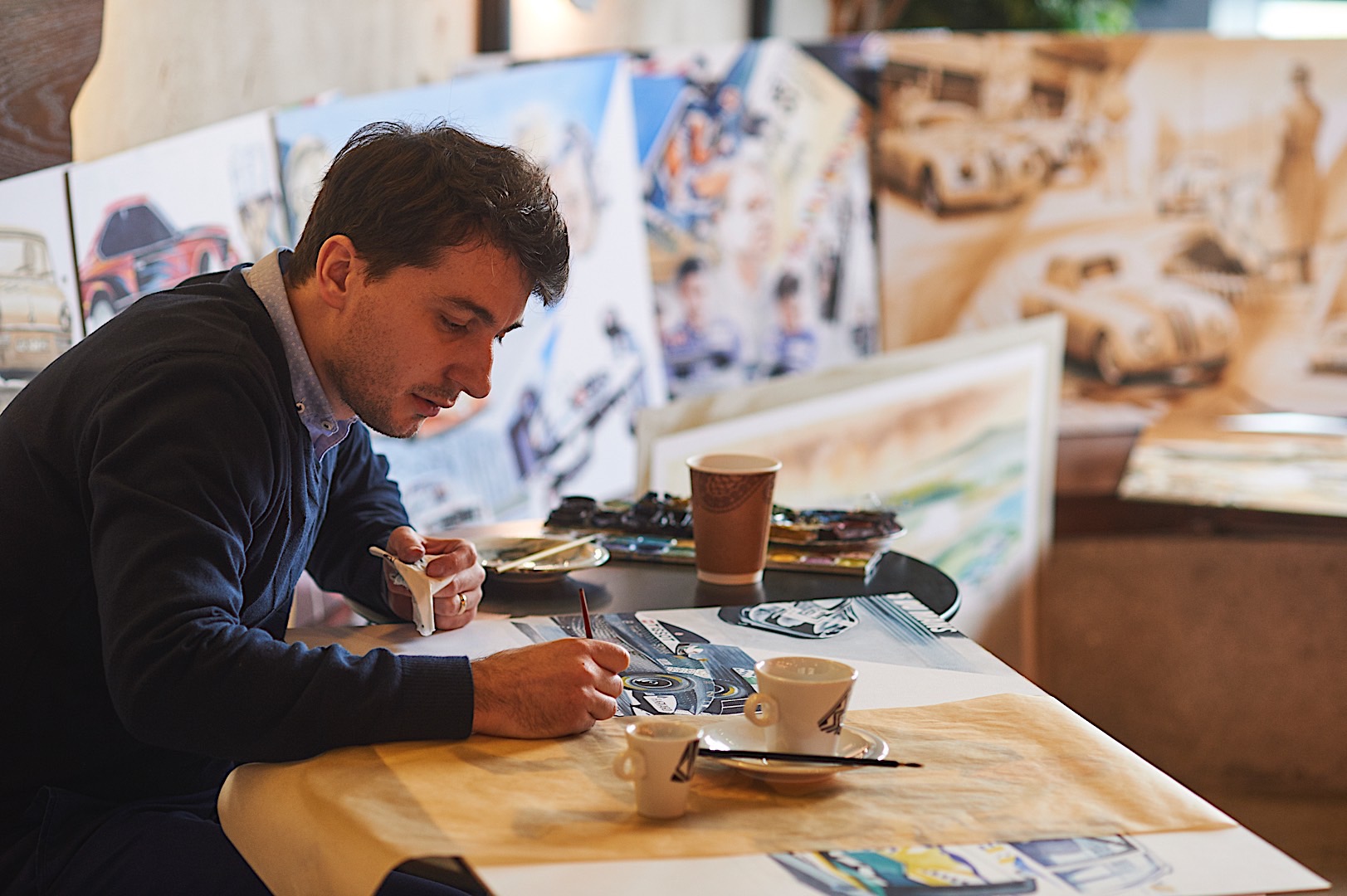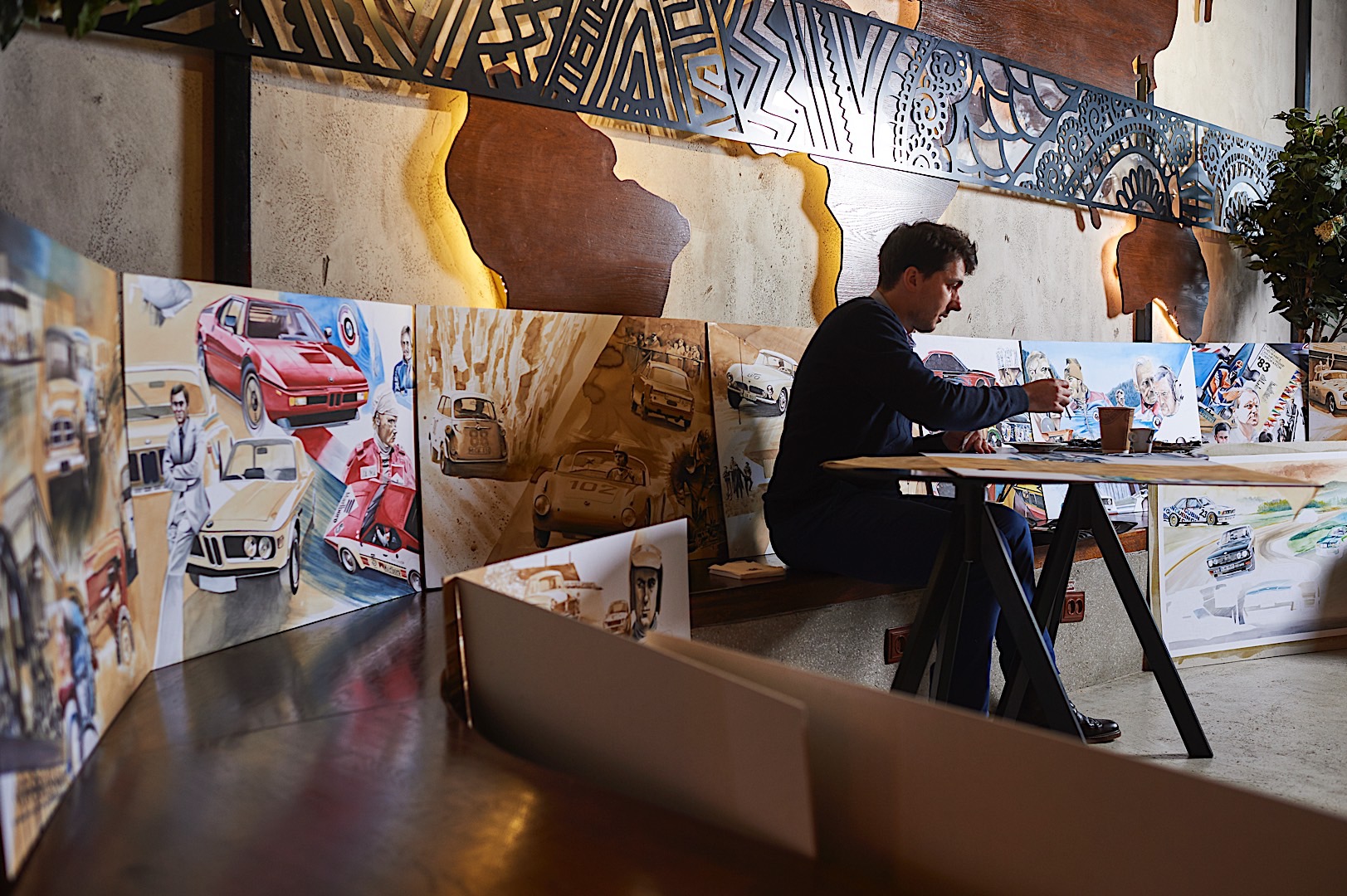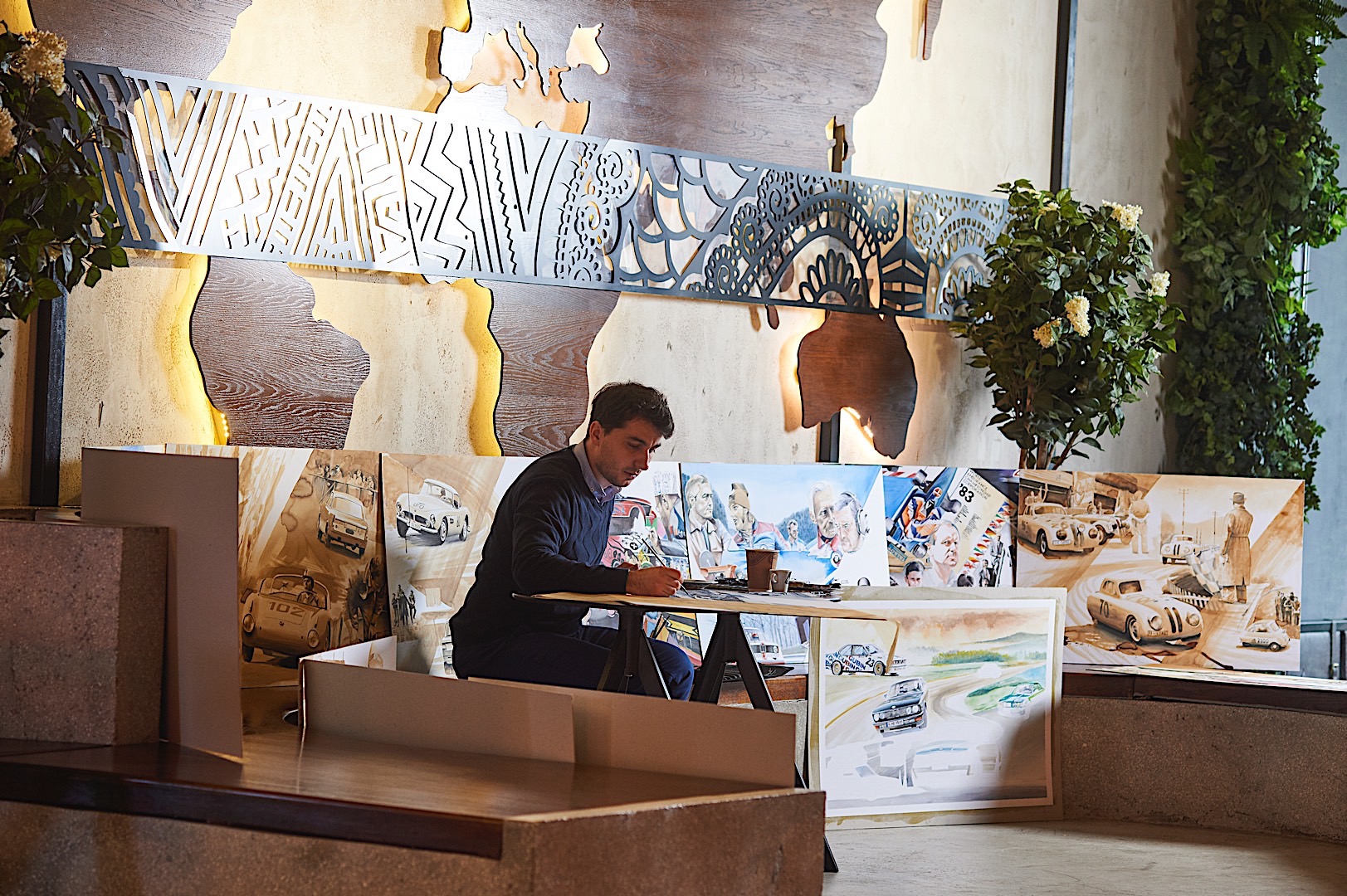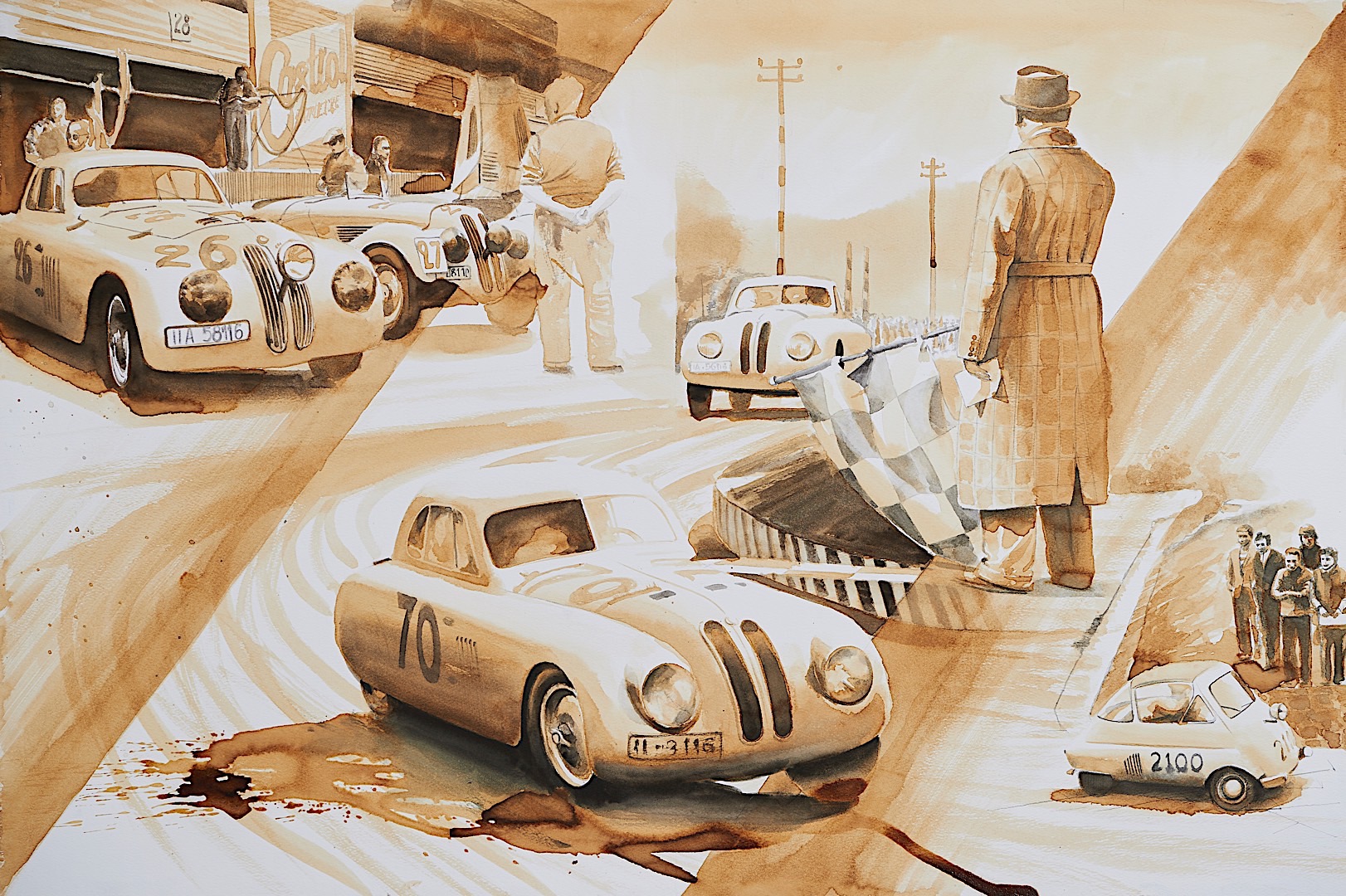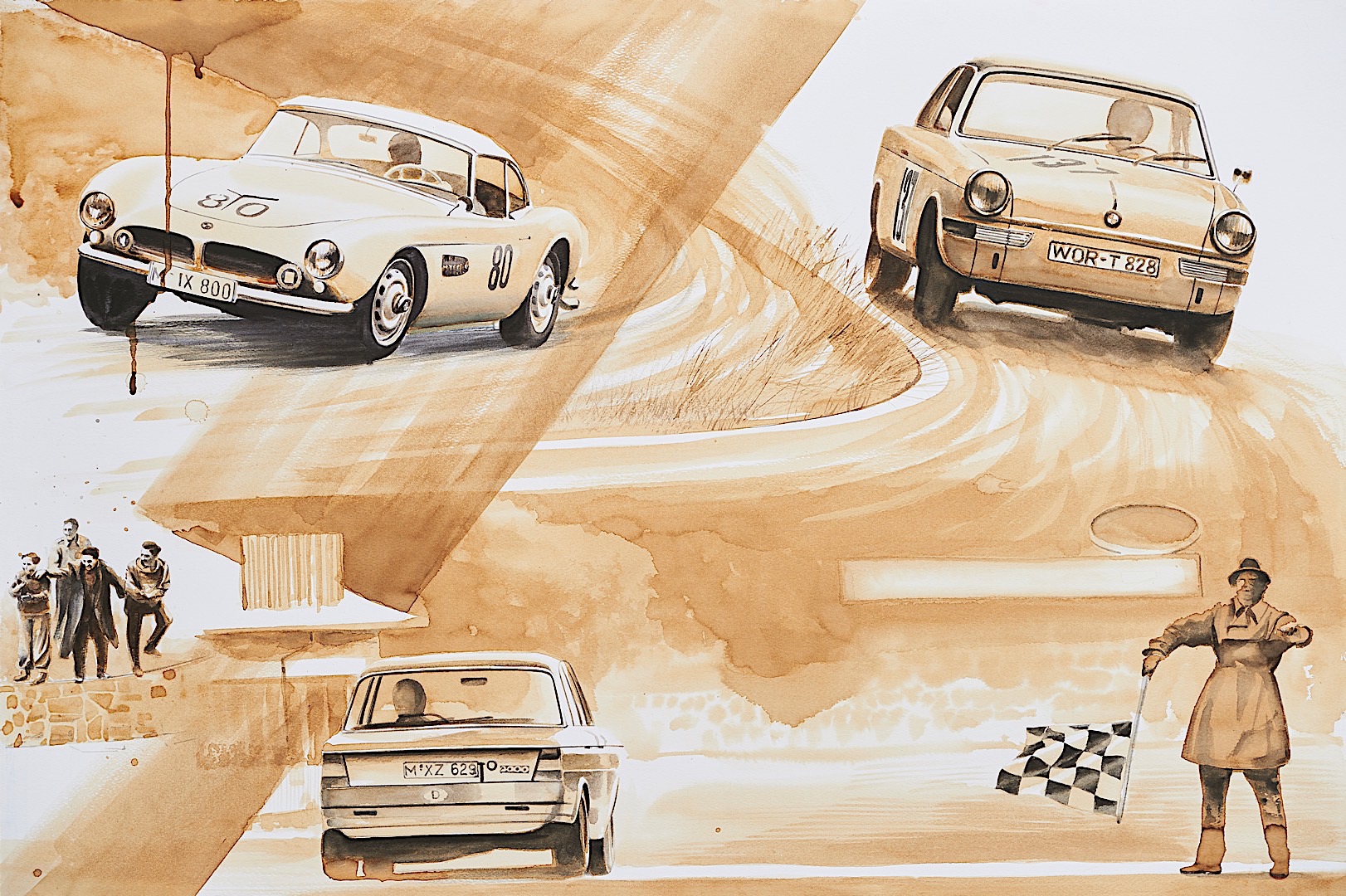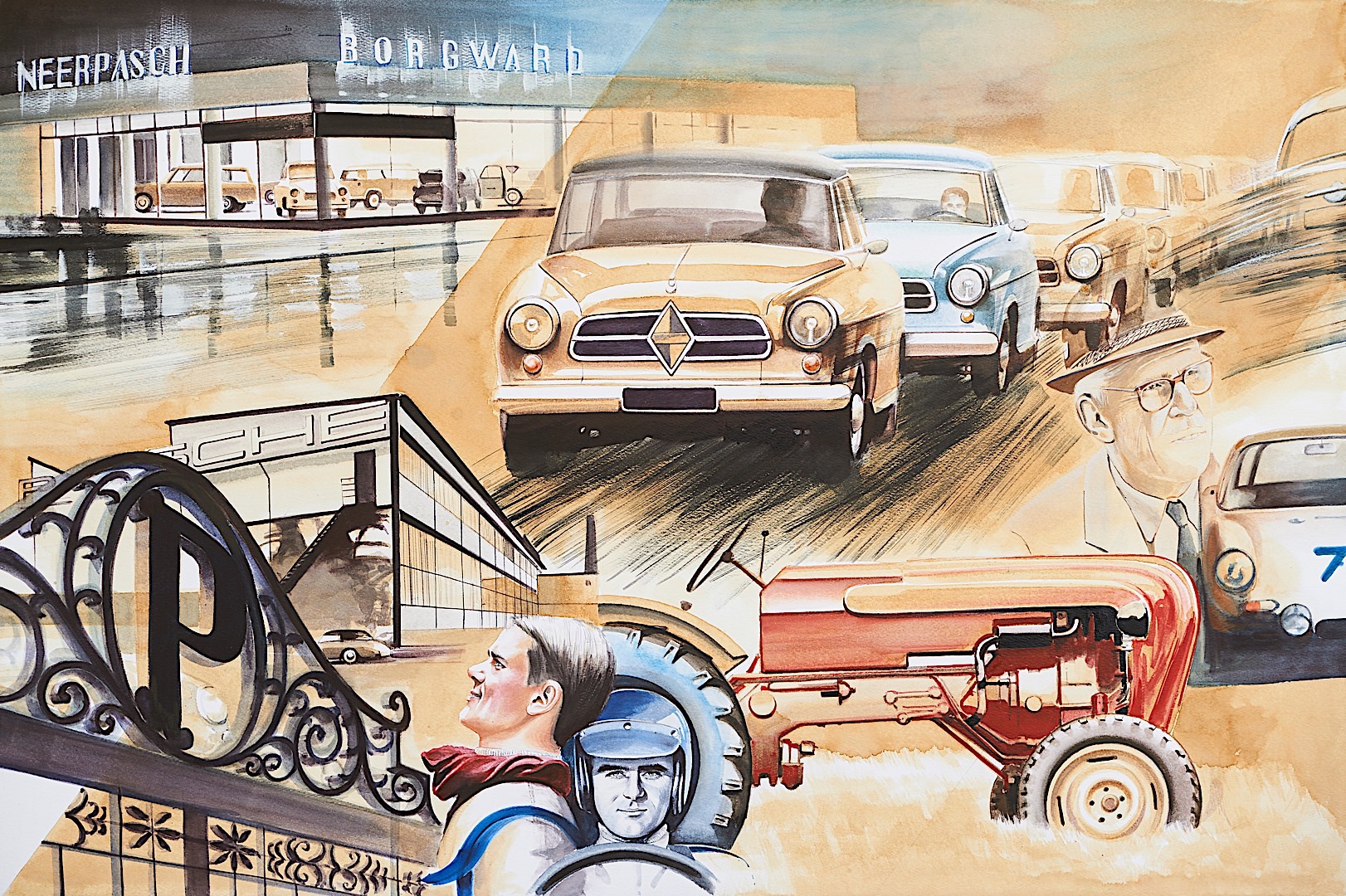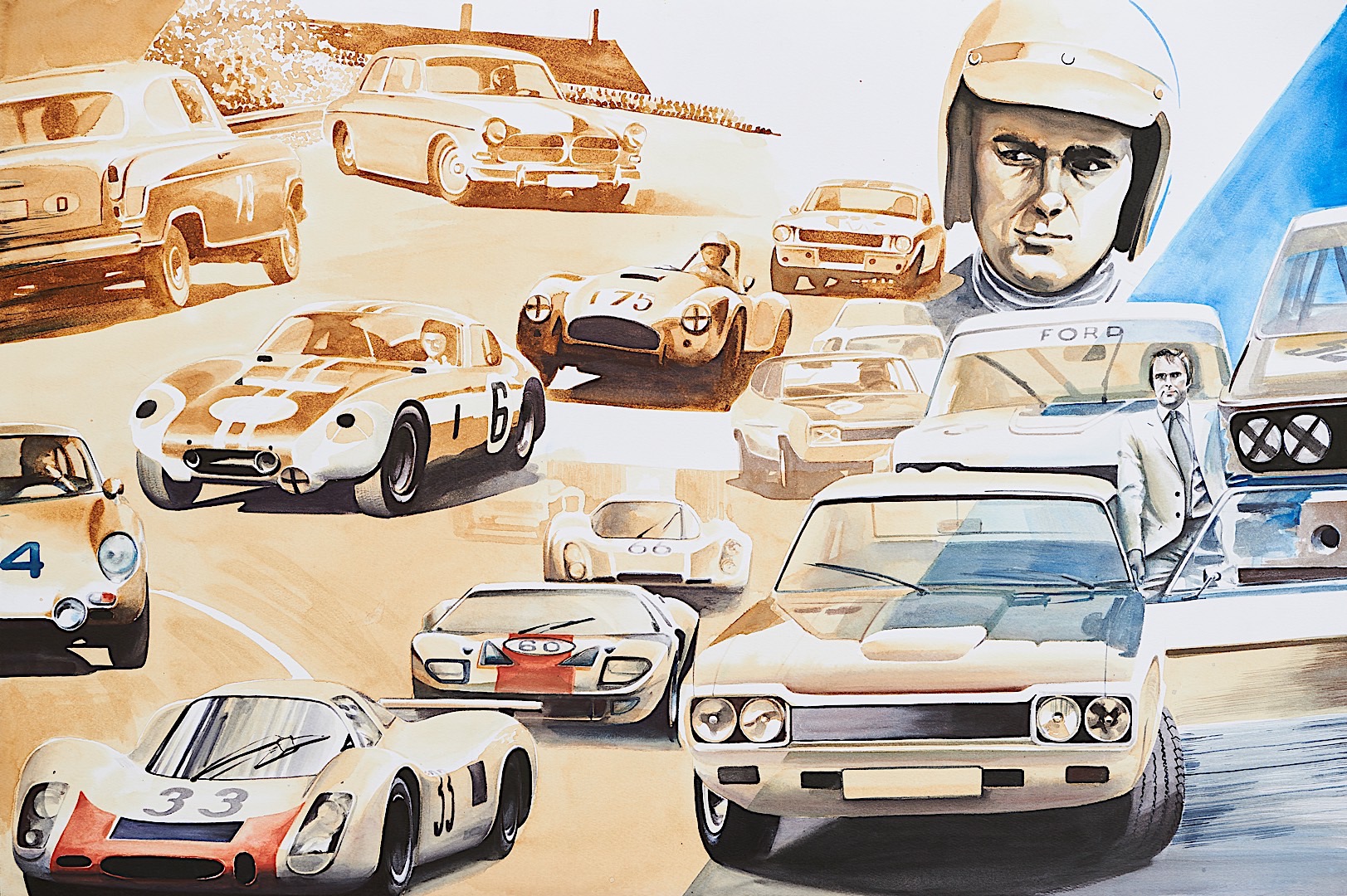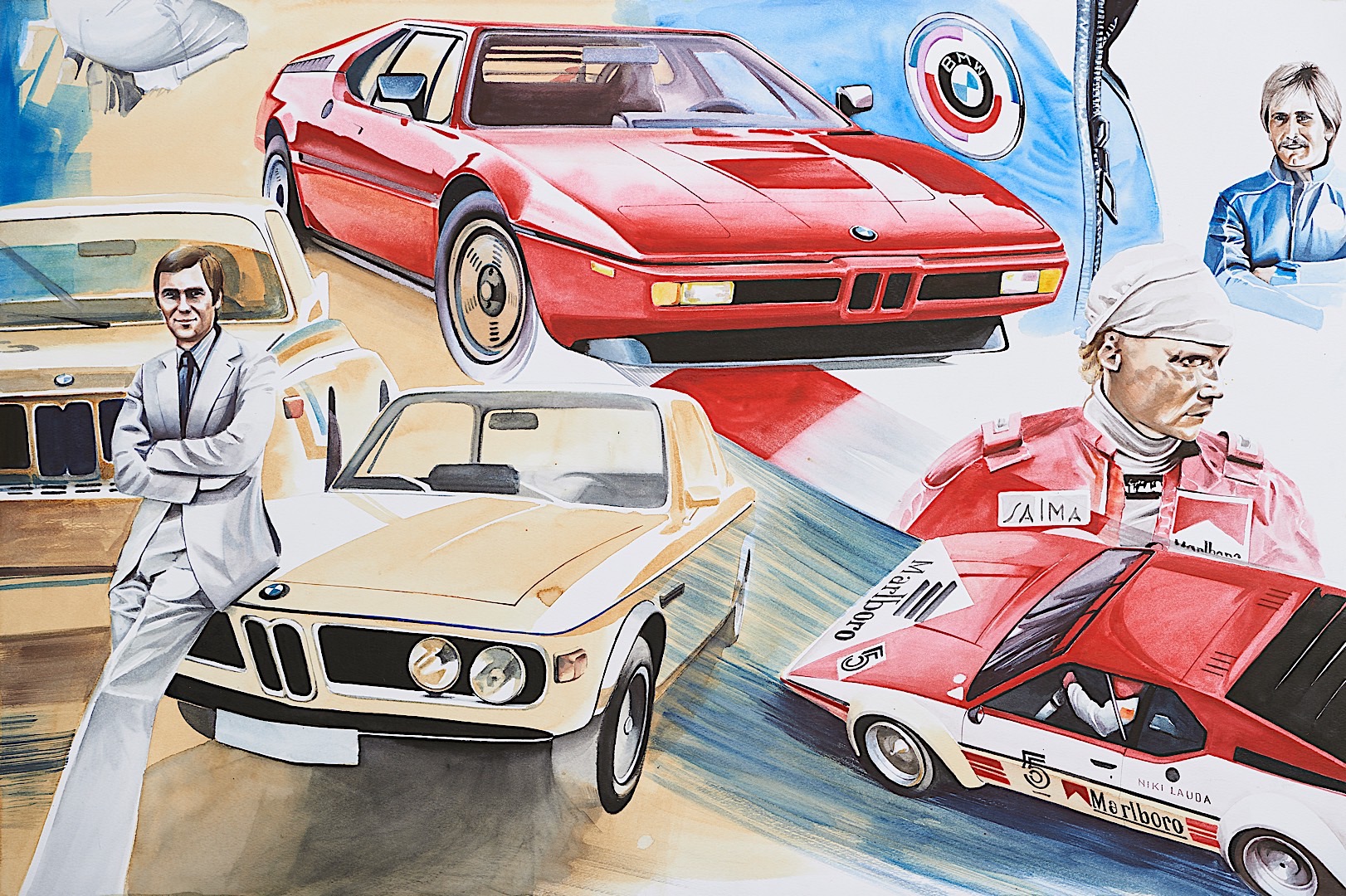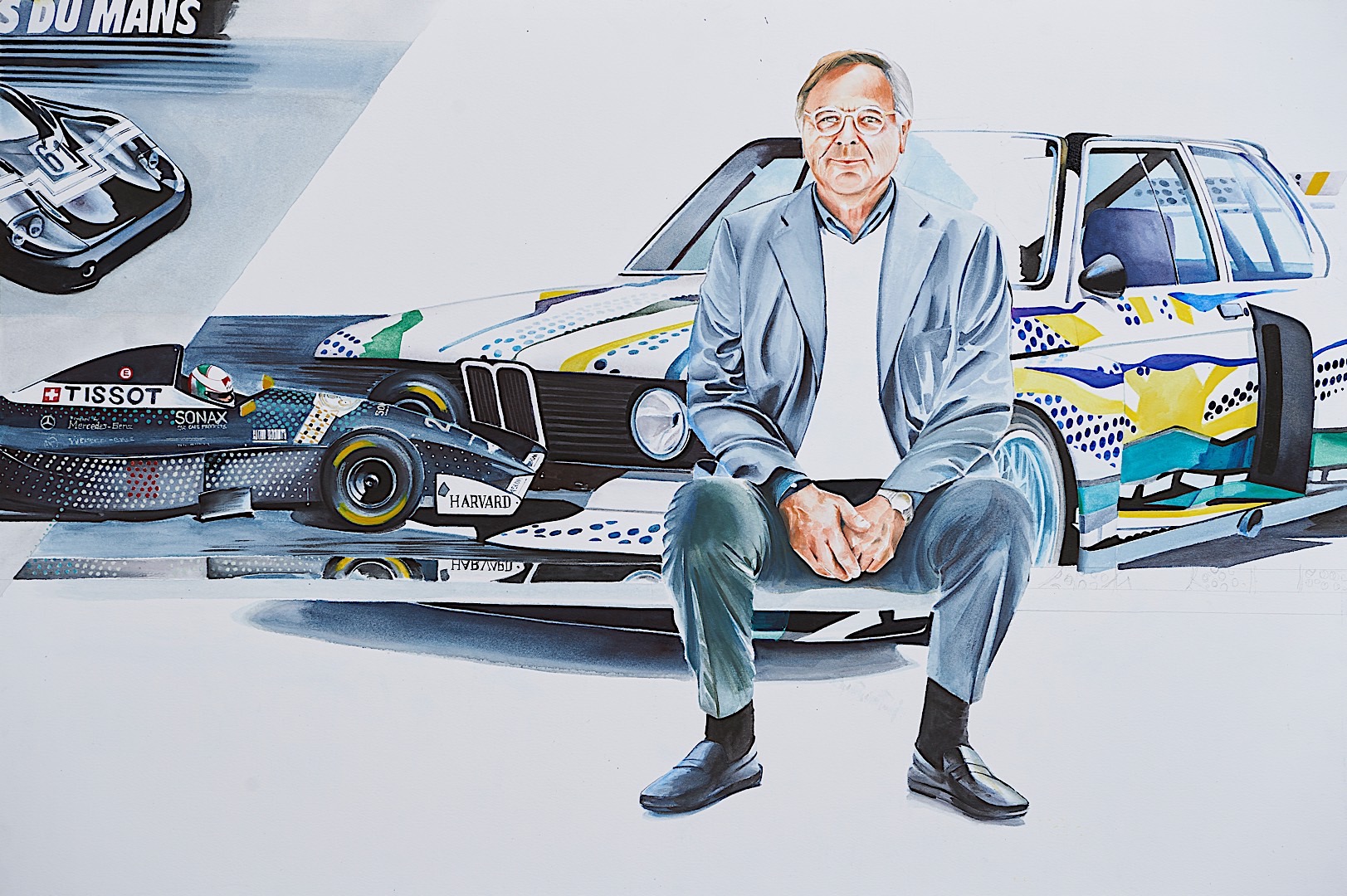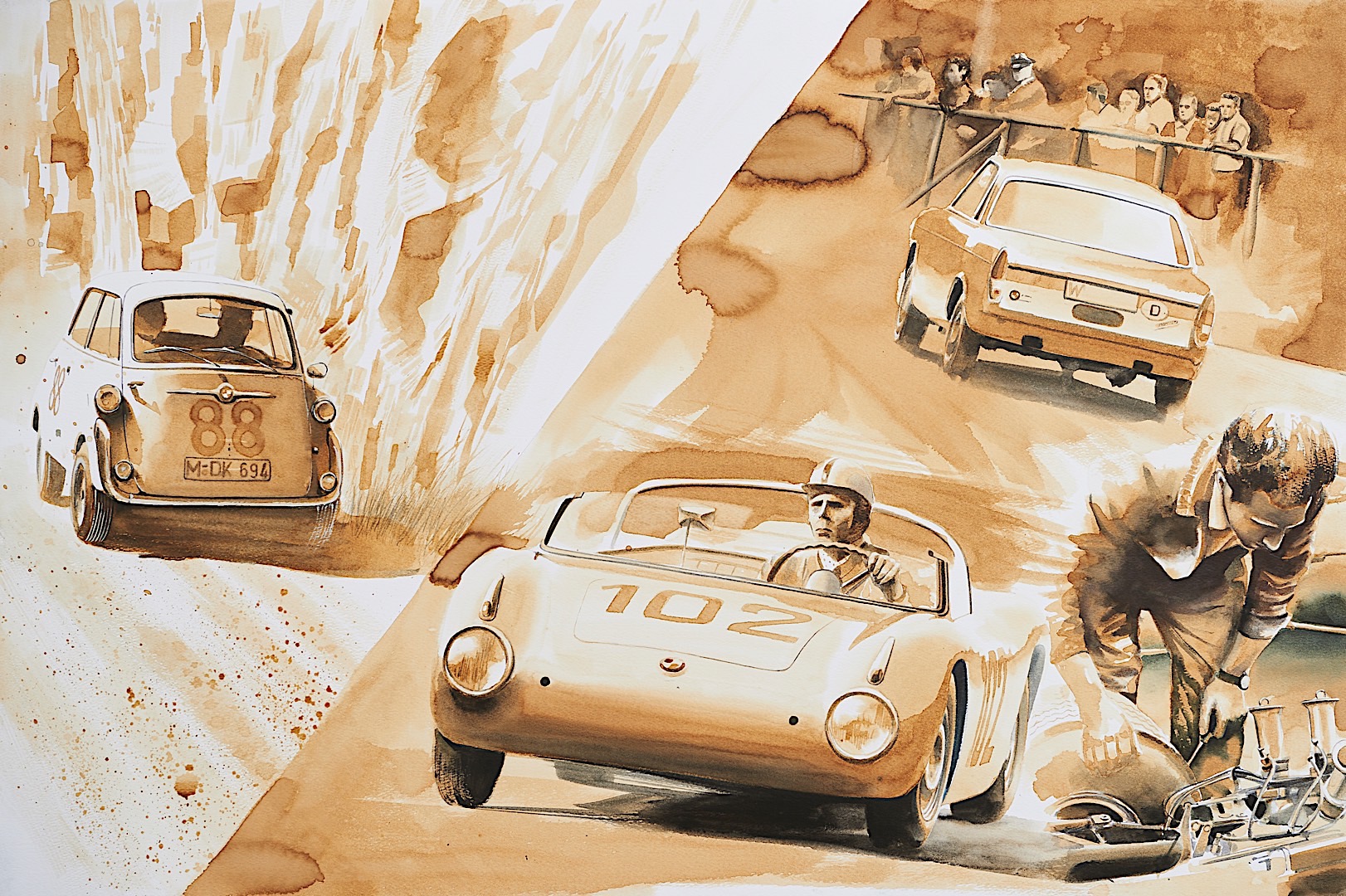If you happen to be a fan of BMW and what it stands for today, you’re probably a fan of Jochen Neerpasch without even knowing it. Among cult followers of the Bavarian brand you’ll find people who are absolutely fascinated with this legendary figure towering over the M stripes as we know them today and rightfully so as there wouldn’t have been any in the first place, without his inspiration and hard work. That’s probably why when BMW called and told me that the man himself would be in town for a special event in his honor I started giggling like a little girl, a feeling I hadn’t experienced in a long time.
It had all started about 2 years ago when one dedicated artist set out to paint 101 of the most iconic images in BMW’s 100 years of existence. Mr. Adrian Mitu managed to create an entire art installation in the process which used among other things a lot of coffee, something to give it a twist, if you will. His initial “Blue Coffee” experiment was so well received that it is now hosted by the BMW CCA museum in Spartanburg, where it truly belongs. But that was the starting point for what was to follow this year.
In the meantime, coincidence made it that a very dedicated PR executive wanted to meet the founder of the BMW M brand and therefore traveled to Germany to get an interview from the living legend. In doing so, some interesting and creative ideas popped up in the right places. Fast forward a couple of months and Adrian Mitu was ready to show what he put together in honor of Jochen Neerpasch, in his presence.
The invitation to the event read that we were to meet our “Blue Hero”, a name derived from the colors of the M badge and the special place this man held in the hearts of so many BMW fans, but I had no idea of the beautiful art I was about to see or about the man I was going to spend a couple of minutes talking to. We knew Mr. Neerpasch was coming but none of us truly understood just how that would make us feel until we got to the event and actually saw him standing there.
At 79 years old, Mr. Neerpasch looks like he’s seen it all. His genius still shines in his bright blue eyes and the way he speaks, in a soft tone and extremely calm manner, shows a confidence that only true marketing geniuses posses and are born with, I might add. He’s taller than one would expect and has the vigor of someone 20 years younger, at the very least, as he impresses everyone with his sharp wits and interesting remarks, even humor in certain awkward situations, like when his mic would cut off from time to time. And yet, the audience, myself included, seems to be mesmerized by the fact that he is truly there.
Speaking in metaphors and complimenting the artist for the work he did in his honor, we somehow forgot that we were there to see the installation as well, and not just he man it honors. And then I take a closer look at what was sitting right in front of me, a true work of art by any measurable scale.
Standing tall at 1.8 meters by 4.5 meters in size, it covers the impressive CV Mr. Neerpasch put together during his lifetime. The work follows two stories that spread between the 1940s and 1990s – the evolution of the BMW brand in parallel to the automotive career of Jochen Neerpasch. They highlight important milestones for both the company and Neerpasch and his personal career, such as racecar driving, the implementation of BMW Motorsport as a standalone company in 1972, establishing the first major junior team in BMW’s racing history, facilitating unique competitions such as the BMW M1 Procar Championship as well as recognizing the potential of the interaction of art and motorsport by helping Hervé Poulain kick off the first BMW Art Car by Alexander Calder in 1975 which amounted into a collection that still continues today.
Every diagonal line accounts for a decade of automotive history, from the times when Mr. Neerpasch was a little 12-year old boy working at Borgward and driving a Isabella for hundreds of kilometers, to the one story that started it all, when he simply stopped at the Porsche building, went inside and asked for a job in the motorsport department. The audacity of the young man sitting in front of them must’ve convinced someone at Porsche to give him a chance, but in the tractor department at first. It was enough to get his foot in the door and this was the spark that ignited the bonfire that came afterwards.
After working on engines at Porsche and even racing a couple of cars in various races, including the Le Mans 24-hour, he joined Ford where he created the Cortina, a car that was a tough nut to crack in Touring racing for years on end. In doing so, he was actually working with another motoring legend, a certain Carol Shelby. Seeing just how good he was, he was approached by BMW to join them and make the Bavarian brand a well-known competitor in motorsport. Little did anyone know just how important this move would turn out to be.
After failing to defeat the Ford Cortina in the first coupe of runs, the BMW 3.0 CSL was created, taking things back to basics and basically stripping the car of any unnecessary weight it might be carrying. The iconic Sebring race of 1975 then took place with BMW claiming its first win on the North American continent and therefore setting a foothold in the US market. Seeing as people though BMW stood for British Motor Works, Jochen knew that wouldn’t stand and the marketing efforts began, to start promoting both BMW and the Motorsport efforts.
The M stripes as we know them were actually created under his supervision and we got to learn how they came to be. Apparently it all started with the 3.0CSL model. The car was supposed to be sponsored by Texaco which back then had the color red in its logo. Chip in the traditional blue colors of the Bavarian flag and you get what we all know today as the M stripes. It’s as simple as that. Furthermore, after they were created, the teams used to wear jackets with the stripes and the BMW badge on them and they looked so cool people simply wanted to buy them. Who was Jochen to stand in the way of their happiness? Thus the BMW M brand was created as a standalone division and they were the first ones to sell clothes and accessories to car enthusiasts.
All the money these sales would collect would then be reinvested in the M division. Probably one of the most important projects that Mr. Neerpasch oversaw was the creation of the BMW M1, the original M car. The development of the car was done in collaboration with Lamborghini as we all know but due to financial issues, BMW had to pull out at the last moment, going over to Sant’Agata Bolognese to pick up the prototypes they have put together in order to avoid losses. As Mr. Neerpasch recalls, BMW even had the chance to buy out Lamborghini but at that time this sort of move was considered too risky because you simply didn’t know what you would’ve bought. Let that sink in for a moment.
The M1 was developed from the get go as a racing car. The collaboration with Lamborghini was deemed necessary because they had enough resources to make up to 1,000 units of the car in road-legal guise just to get it homologated for racing purposes. This would’ve saved BMW the effort of putting together an assembly line just for 1,000 cars. In the end only about 400 M1 road-legal cars were made and BMW simply decided to make its own racing series for the iconic car just so that it would see it race. And what races those were.
You’d have Formula 1 pilots going up against Touring car pilots on tracks like the Nurburgring. This was carnage and an absolute show, as everyone wanted to show that their type of racing was better than the other. You’d have Nikki Lauda going up against Hans Joachim Stuck and the likes, and fireworks were bound to show up in the Procar Series, an atypical type of racing which we’d never see again.
As the timeline on the Blue Hero installation continues, one can’t help but honor Jochen Neerpasch for his influence on how drivers train today, as he was the one to set up the BMW Motorsport Junior program and the one who realized that in order to perform at your best, you had to be in the best shape possible. Fitness training was introduced in the pilots’ daily lives and this vision is now a rule at all motorsport teams around the world, be it Formula 1 or the DTM.
He was also the one that brought us the BMW Art Car program which saw artists like Andy Warhol and Alexander Calder sign off on racing cars wearing their designs and actually doing some racing on the track. It was a delight to see them both come to life and race on the world’s most well known tracks back in the day. As he talks about the project he also confesses that the Roy Lichtenstein art car was his favorite, which is why it as immortalized in the painting by Adrian Mitu. Looking at it you can also see how careful the artist was in making a true connection between each decade of Neerpasch’s life. If you pay attention you’ll notice that the Brabham F1 car blends into the Art Car designed by Roy Lichtenstein and this type of connection between one decade to another can be seen throughout the painting.
His career wasn’t tied exclusively to BMW though. He was also the one who tried to get Mercedes-Benz in Formula 1 at first and he played an important role in Michael Schumacher’s upbringing, basically Neerpasch being the one who brought him out to the big league. The rest is history.
And while all of this makes him look like some extraterrestrial who simply fooled us into thinking he was human just so that he could play a prank on us, speaking to the man Jochen Neerpasch seems so normal you’d think you’re simply talking to an ordinary man not someone who shaped the automotive world we know today in so many ways. When asked about his career and the times that went by he speaks of his experiences with such grace and confidence that you really start to believe that the road he walked and drove on was simply the only way ahead.
I had the audacity of asking him about present day though and about the future and his answers show that the passion for cars and racing simply doesn’t go away, no matter your age. He confesses that his garage isn’t nearly as impressive as one would think at first and that his daily driver is a BMW X3 xDrive35d, for practical reasons. I can understand the practical side of things when it comes to a BMW X3 but the engine choice shows that he still likes to feel vast amounts of torque from time to time when pushing the pedal to the metal, leading me to ask what he thinks about modern day BMWs.
And then it hits me as he starts talking, the answer being so obvious it makes me blush: “Of course, if you ask me, the only true BMW cars are BMW M cars. And I don’t mean the big, heavy SUVs they are making today but the small ones.” I then try to find out which one is his favorite and his passion comes into play once again: “I really like the M4. I think it’s the best car they make today and I hope to drive one on the Nordschleife one day”. The purist in me almost instinctively says ‘I guess it would have to be a manual’ to which a surprising reply comes ‘I don’t think so. I like to enjoy the latest technology available and the DCT gearbox is very good as far as I’m concerned’.
The atmosphere in the room as we were saying goodbye to this incarnation of marketing genius was damn near depressing. Nobody wanted Mr. Neerpasch to leave but he had a plane to catch and we had stories to write. The artwork behind us would remind every single one of the people in that room of the wonderful hour spent in the presence of greatness and it truly is worthy of having Mr. Neerpasch’s portrait on it. The amount of details hidden throughout it and the way it tells the story of one of the most important figures in BMW’s history make it worthy of being showcased around the world which is what the team behind the project is hard at work today, trying to figure out a way to share this installation with as many people as possible.


